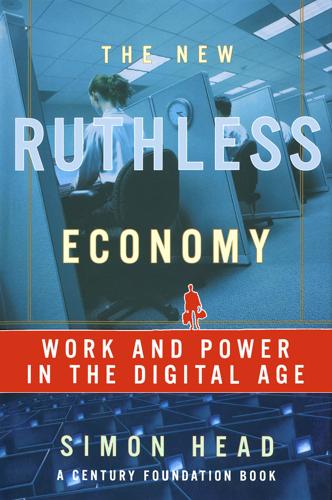
The New Ruthless Economy: Work & Power in the Digital Age
by
Simon Head
Published 14 Aug 2003
Smith, Harpers Ferry Armory, p. 239. 6. Hounshell, From the American System, pp. 89, 161. 7. Ibid., pp. 47-50. 8. Ibid., pp. 91-123. 9. Frederick Winslow Taylor, Shop Management (New York, 1911), p. 110. 10. Ibid., p. 159. 11. See for example, David Nelson, Frederick W. Taylor and the Rise of Scientific Management (Madison, Wise., 1980), p. 174. 12. Frederick Winslow Taylor, Principles of Scientific Management (New York, 1911; paperback ed. 1967), pp. 48-19. 13. Frederick Winslow Taylor, "The Art of Cutting Metals," in Scientific Management, A Collection of the More Significant Articles Describing the Taylor System of Management (Cambridge, Mass., 1914), p. 245. 14.
…
Evidence that contemporary practices may have old roots led me xv xvi PREFACE back a century and more to the formative decades of American industrial history. There I found a clear line of descent linking our contemporary practices with those of mass production and scientific management—the twin foundations of modern American industrialism pioneered a century ago by Frederick Winslow Taylor and Henry Ford. To demonstrate this continuity I have included a chapter on the roots of mass production in America. After this time travel I return to the present and look at some of the contemporary strongholds of the old industrial culture in the manufacturing and service industries. I end by discussing the social and political significance of this history, and also the politics of reform.
…
At a time when the percentage of the U.S. workforce actually employed in manufacturing has shrunk to 12 percent, work methods born in machine shops and on assembly lines have crossed over and colonized the offices, call centers, hospitals, and conference rooms of the nonmanufacturing economy. At the very heart of the "new" economy, therefore, are practices that are already a century old. The four pillars of industrialism—standardization, measurement, monitoring, and control—were already at work in the early 1900s when Henry Ford and Frederick Winslow Taylor created the organization and methods of the mass production plant. Today we are living in a new age of mass production and a new age of "scientific management," always the chief operating doctrine of mass production. In a famous article that appeared in the 1929 edition of the Encyclopaedia Britannica, Henry Ford defined mass production as "the focusing upon a manufacturing project of power, accuracy, economy, system, continuity and speed."
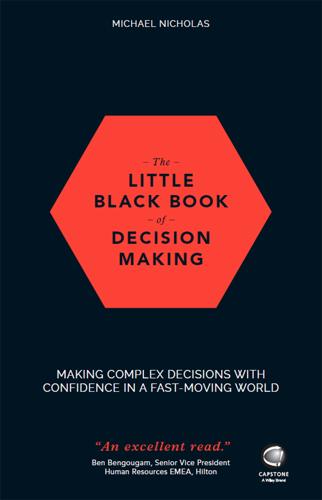
The Little Black Book of Decision Making
by
Michael Nicholas
Published 21 Jun 2017
The belief in a “clockwork universe” was born, certainty and precision became the new guiding principles, and the standard approach to decision making was radically revised – to one based on predictability. As scientific thinking became more widespread, it was inevitable that someone would apply it to business, and that person was Frederick Winslow Taylor, an American inventor who is credited by many management theorists today as being the father of modern business management principles. By the end of the nineteenth century, advances in technological capabilities had catalysed the transformation of manufacturing processes; however, the overarching systems used to manage them remained largely unchanged.
…
It seems that the traditional approach to developing strategy is becoming less and less effective … that something basic about their decision making must be flawed … or perhaps that, for some reason, the implementation of new ideas must be difficult … Today, the default methodology used in most business decision making is still a direct consequence of Frederick Winslow Taylor's insights. Rational analysis, logic, business planning, problem solving and the like are so deeply embedded that they tend to be naturally assumed to be the best approach available. After all, they delivered, enabling businesses to achieve what would previously have been unimaginable levels of efficiency.
…
He and others have continued to incrementally refine the approach, and today the record stands at an incredible 70 hot dogs consumed in 10 minutes, but still using the basic method that Kobayashi created. The best practice has now been well honed. The Limitations of “Best Practice” The mindset involved in much decision making today is comparable to that of the best hot dog eaters in the world just before Takaru Kobayashi turned up. The scientific management principles of Frederick Winslow Taylor have become embedded so firmly that their implicit assumption, of predictability and order, is largely unchallenged – with the result that “rational” thinking dominates, along with a tendency to see things in black-and-white terms. This is highly evident in strategic planning. An aura of mystique has often surrounded the idea of strategy, but it is really just a plan of action for how things will get done to achieve some long-term aim.

Arriving Today: From Factory to Front Door -- Why Everything Has Changed About How and What We Buy
by
Christopher Mims
Published 13 Sep 2021
Robert Whaples, March 26, 2008, https://eh.net/encyclopedia/women-workers-in-the-british-industrial-revolution-2. Chapter 9: How a Management Philosophy Became Our Way of Life ardent abolitionist: Robert Kanigel, The One Best Way: Frederick Winslow Taylor and the Enigma of Efficiency (Cambridge, MA: MIT Press, 2005), pp. 433–34. fit the first one perfectly: Simon Winchester, The Perfectionists (New York: HarperCollins, 2018). psychology of skilled workers: Frederick Winslow Taylor, The Principles of Scientific Management (New York: Harper & Brothers, 1911). patented in 1891: Willard Le Grand Bundy, workman’s time recorder, US Patent 452894A, patented May 26, 1891.
…
Then he offers, wryly, “You don’t need a college degree to do this.” Chapter 8 The Little-Known, Rarely Understood Organizing Principle of Modern Work It’s been said that nothing in biology makes sense except in the light of evolution, and the same could be said of the relationship between the ideas of Frederick Winslow Taylor and the character of modern work. Yet the average person, and even many experts in the fields of manufacturing, supply chains, economics, and labor, don’t know his name, nor the name of his discipline, scientific management. Even those who do generally have only the vaguest understanding of his significance.
…
Taylorism’s success in all of these places has meant its penetration into every step along the journey of a made thing, as well as lateral transmission into pretty much every other kind of work. But to understand any of that, we have to start with the man himself. Chapter 9 How a Management Philosophy Became Our Way of Life Frederick Winslow Taylor was born in 1856 in the Germantown neighborhood of Philadelphia, the only child of a Princeton-educated lawyer and an ardent abolitionist. He was raised with all the privilege a boy of such pedigree could expect—a stately house on a hill, tutoring from his devoted mother, an education that included eighteen months of travel and study in Europe.

Futureproof: 9 Rules for Humans in the Age of Automation
by
Kevin Roose
Published 9 Mar 2021
In the late eighteenth and early nineteenth centuries, a former steelworker named Frederick Winslow Taylor came up with a theory of “scientific management” that took the American business community by storm. Taylor believed that most jobs could be broken into standardized, measurable tasks, and that those tasks could be perfected over time by ironing out inefficiencies and shaving away every millisecond of wasted time. Ultimately, he believed that enhanced productivity would be a win-win: companies would increase their output, and workers would get the satisfaction of operating at peak performance. Today’s version of Frederick Winslow Taylor is probably Gary Vaynerchuk, a marketing guru and social media influencer who has made a lucrative career out of inspiring his millions of followers to hustle harder.
…
Another article called factory automation Rick Wartzman, “The First Time America Freaked Out over Automation,” Politico, May 30, 2017. Today, Kawai is a living legend at Toyota “Toyota’s ‘Oyaji’ Kawai Calls to Protect Monozukuri,” Toyota News, June 17, 2020. a former steelworker named Frederick Winslow Taylor Frederick Winslow Taylor, The Principles of Scientific Management (New York: Harper & Brothers, 1915). Gary Vaynerchuk, a marketing guru and social media influencer Ted Fraser, “I Spent a Week Living Like Gary Vaynerchuk,” Vice, December 17, 2018. Elon Musk, the Tesla and SpaceX founder, famously works Catherine Clifford, “Elon Musk on Working 120 Hours in a Week: ‘However Hard It Was for [the Team], I Would Make It Worse for Me,’ ” CNBC, December 10, 2018.
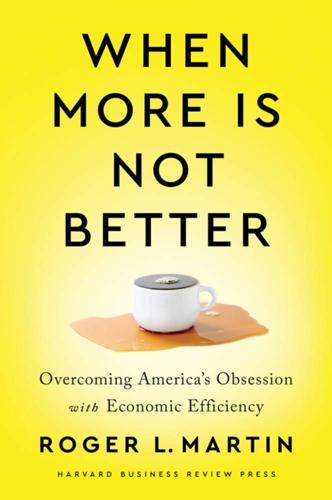
When More Is Not Better: Overcoming America's Obsession With Economic Efficiency
by
Roger L. Martin
Published 28 Sep 2020
It took a forceful lead in pulling together chief exporting nations to create the original General Agreement on Tariffs and Trade (GATT) and continued to lead a succession of major negotiating rounds, which drove average tariffs in developed countries from approximately 25 percent in 1947 to 4 percent by 2000.22 The efficiency Ricardo argued for in 1817 became a central US policy thrust, if not obsession, though only after 130 years had elapsed. Frederick Winslow Taylor In the meantime, the drive for more efficiency proceeded apace on other fronts, which brings us to Frederick Winslow Taylor. Trained as a mechanical engineer, Taylor made it his life’s work to promote industrial efficiency, becoming the intellectual leader of what came to be known as the Efficiency Movement. His work was highly influential throughout the Progressive Era (1890–1920) and is encapsulated in his 1911 book, The Principles of Scientific Management.
…
David Ricardo did not insist that more free trade agreements are always better. And most certainly W. Edwards Deming did not argue for the utter elimination of slack—in fact, he argued for the importance of maintaining an optimal level of slack. The exception might be the considerably more doctrinaire Frederick Winslow Taylor. It is not clear from his work whether he saw a line after which he felt that too much efficiency was being pursued. Some even believe that he falsified his data to buttress his theories.12 But it is reasonable to suggest that business managers and political leaders in the United States have, by confusing models with reality and through surrogation of proxies for goals, taken the models of great thinkers to places where those thinkers would never have gone.
…
Author’s calculations from CEPII data, available at http://www.cepii.fr/CEPII/en/bdd_modele/presentation.asp?id=32. 22. Chad P. Bown and Douglas A. Irwin, “The GATT’s Starting Point: Tariff Levels Circa 1947,” working paper 21782, The National Bureau of Economic Research, Cambridge, 2015. 23. Frederick Winslow Taylor, The Principles of Scientific Management (New York: Harper & Brothers, 1911), 64. Chapter 2 1. John Perry and Heather Vogell “Are Drastic Swings in CRCT Scores Valid?” The Atlanta Journal-Constitution, October 19, 2009. 2. WXIA-TV, Atlanta, “11 Atlanta Educators Convicted in Cheating Scandal,” April 1, 2015, and Rhonda Cook, “New Mother Gets Prison, Former Principal Jail in APS Case,” The Atlanta Journal-Constitution, September 1, 2015. 3.
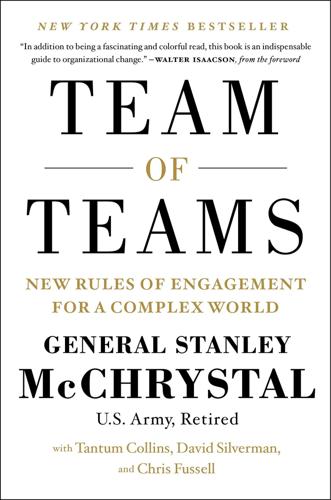
Team of Teams: New Rules of Engagement for a Complex World
by
General Stanley McChrystal
,
Tantum Collins
,
David Silverman
and
Chris Fussell
Published 11 May 2015
Part I: The Proteus Problem opens in Iraq in 2004 where the world’s most elite counterterrorist force is struggling against a seemingly ragtag band of radical fighters. We explore the unexpected revelation that our biggest challenges lay not in the enemy, but in the dizzyingly new environment in which we were operating, and within the carefully crafted attributes of our own organization. To understand the challenge, we’ll go to factory floors with Frederick Winslow Taylor and look back at the drive for efficiency that has marked the last 150 years, and how it has shaped our organizations and the men and women who lead and manage them. We then examine how accelerating speed and interdependence in today’s world have created levels of complexity that confound even the most superbly efficient industrial age establishments.
…
Individual companies and entire economies depend on business leaders’ knowing how best to manage for success. While fighting forces have been developing such protocols since Sparta, the notion of top-down, rigidly predetermined, “scientific” management of behavior in the civilian sector is largely the legacy of the nineteenth-century Quaker Frederick Winslow Taylor. His influence on the way we think about doing things—from running corporations to positioning kitchen appliances—is profound and pervasive. For our Task Force and for other twenty-first-century organizational endeavors, the legacy of Taylor’s ideas is both part of the solution and part of the problem.
…
Biographer and historian Robert Kanigel writes that “by the late 1920s, it could seem that all of modern society had come under the sway of a single commanding idea: that waste was wrong and efficiency the highest good, and that eliminating one and achieving the other was best left to the experts.” Journalist Ida Tarbell went so far as to argue, “No man in the history of American industry has made a larger contribution to genuine cooperation and juster human relations than did Frederick Winslow Taylor. He is one of the few creative geniuses of our time.” • • • In the decades since, Taylor’s star has dimmed. His treatment of workers has been widely decried, as has his conception of individuals as mechanistic entities to be manipulated. In the 1960s, MIT professor Douglas McGregor’s “Theory X” and “Theory Y” of human resource management offered a famous critique of Taylorist principles: in McGregor’s view, Taylor’s approach (X) saw humans as fundamentally lazy and in need of financial incentives and close monitoring in order to do work, while McGregor’s own Theory Y understood people as capable of self-motivation and self-control, and argued that managers would achieve better results by treating their employees with respect.

Brave New Work: Are You Ready to Reinvent Your Organization?
by
Aaron Dignan
Published 1 Feb 2019
“Stop trying to borrow wisdom”: Jason Yip, “Japan Lean Study Mission Day 4: Toyota Home, Norman Bodek, and Takeshi Kawabe,” You’d think with all my video game experience that I’d be more prepared for this: Agile, Lean, Kanban (blog), December 8, 2008, http://jchyip.blogspot.com/2008/12/japan-lean-study-mission-day-4-toyota.html. “Hardly a competent workman”: Frederick Winslow Taylor, “Shop Management,” paper presented at the American Society of Mechanical Engineers meeting in Saratoga, New York, June 1903. “All you have to do is take orders”: Robert Kanigel, The One Best Way: Frederick Winslow Taylor and the Enigma of Efficiency (Cambridge, MA: MIT Press, 2005), 214. “your way of doing the job for mine”: Robert Kanigel, “Taylor-Made. (19th-Century Efficiency Expert Frederick Taylor),” The Sciences 37, no. 3 (May 1997): 1–5.
…
Novices learned on the job from the people around them, taking on their quirks, their tricks of the trade, and, of course, their pace. Given this artisanal flair, productivity was a moving target. No one—not machinists or managers—knew what was possible. Sure, they had a pretty good idea of how long it took to produce a specific part. But no one was asking how long it should take. Enter Frederick Winslow Taylor. Promoted through the ranks at a young age, his innovation was to break the work down into its smallest possible components and find the one best way to complete each step. No task was too small or insignificant to provoke his scrutiny. This was a man who once made serious scientific study of how to use a shovel.
…
“your way of doing the job for mine”: Robert Kanigel, “Taylor-Made. (19th-Century Efficiency Expert Frederick Taylor),” The Sciences 37, no. 3 (May 1997): 1–5. bestselling business books of the decade: Tim Hindle, Guide to Management Ideas and Gurus (London: John Wiley & Sons, 2008). They develop a science: Frederick Winslow Taylor, Principles of Scientific Management (New York and London: Harper & Brothers, 1911), 36–37. “going to do in future periods”: Duff McDonald, The Firm (New York: Oneworld, 2014). you’ll get your toilet paper: NateIBEW558l, comment on “[Serious] Reddit, What’s the Worst Example of Workplace Bureaucracy You’ve Ever Encountered?” Reddit, r/AskReddit, October 18, 2014, www.reddit.com/r/AskReddit/comments/2jmvro/serious_reddit_whats_the_worst_example_of.

Exponential: How Accelerating Technology Is Leaving Us Behind and What to Do About It
by
Azeem Azhar
Published 6 Sep 2021
Lyft’, Bloomberg Second Measure, 2020 <https://secondmeasure.com/datapoints/rideshare-industry-overview/> [accessed 23 September 2020]. 54 ‘Gig Economy Research’, Gov.uk, 7 February 2018 <https://www.gov.uk/government/publications/gig-economy-research> [accessed 21 September 2020]. 55 Ravi Agrawal, ‘The Hidden Benefits of Uber’, Foreign Policy, 16 July 2018 <https://foreignpolicy.com/2018/07/16/why-india-gives-uber-5-stars-gig-economy-jobs/> [accessed 21 September 2020]. 56 Department for Business, Energy & Industrial Strategy, ‘Gig Economy Research’, Gov.uk, 7 February 2018 <https://www.gov.uk/government/publications/gig-economy-research> [accessed 21 September 2020]. 57 Directorate General for Internal Policies, The Social Protection of Workers in the Platform Economy, Study for the EMPL Committee, IP/A/EMPL/2016-11 (European Parliament, 2017). 58 Nicole Karlis, ‘DoorDash Drivers Make an Average of $1.45 an Hour, Analysis Finds’, Salon, 19 January 2020 <https://www.salon.com/2020/01/19/doordash-drivers-make-an-average-of-145-an-hour-analysis-finds/> [accessed 27 March 2021]. 59 Kate Conger, ‘Uber and Lyft Drivers in California Will Remain Contractors’, New York Times, 4 November 2020 <https://www.nytimes.com/2020/11/04/technology/california-uber-lyft-prop-22.html> [accessed 12 January 2021]. 60 Mary-Ann Russon, ‘Uber Drivers Are Workers Not Self-Employed, Supreme Court Rules’, BBC News, 19 February 2021 <https://www.bbc.com/news/business-56123668> [accessed 29 March 2021]. 61 ‘Judgement: Uber BV and Others (Appellants) v Aslam and Others (Respondents)’, 19 February 2021 <https://www.supremecourt.uk/cases/docs/uksc-2019-0029-judgment.pdf> [accessed 19 March 2021]. 62 ‘Frederick Winslow Taylor: Father of Scientific Management Thinker’, The British Library <https://www.bl.uk/people/frederick-winslow-taylor> [accessed 29 March 2021]. 63 Nikil Saval, Cubed: A Secret History of the Workplace (New York: Anchor Books, 2015), p. 42. 64 Saval, Cubed, p. 56. 65 Alex Rosenblat, Tamara Kneese and danah boyd, Workplace Surveillance (Data & Society Research Institute, 4 January 2017) <https://doi.org/10.31219/osf.io/7ryk4>. 66 ‘In March 2017, the Japanese Government Formulated the Work Style Reform Action Plan.’, Social Innovation, September 2017 <https://social-innovation.hitachi/en/case_studies/ai_happiness/> [accessed 6 October 2020]. 67 Alex Hern, ‘Microsoft Productivity Score Feature Criticised as Workplace Surveillance’, The Guardian, 26 November 2020 <http://www.theguardian.com/technology/2020/nov/26/microsoft-productivity-score-feature-criticised-workplace-surveillance> [accessed 1 April 2021]. 68 Stephen Chen, ‘Chinese Surveillance Programme Mines Data from Workers’ Brains’, South China Morning Post, 28 April 2018 <https://www.scmp.com/news/china/society/article/2143899/forget-facebook-leak-china-mining-data-directly-workers-brains> [accessed 6 October 2020]. 69 Robert Booth, ‘Unilever Saves on Recruiters by Using AI to Assess Job Interviews’, The Guardian, 25 October 2019 <http://www.theguardian.com/technology/2019/oct/25/unilever-saves-on-recruiters-by-using-ai-to-assess-job-interviews> [accessed 6 October 2020]. 70 Chartered Institute of Personnel and Development, ‘Workplace Technology: The Employee Experience’ (CIPD: July 2020) <https://www.cipd.co.uk/Images/workplace-technology-1_tcm18-80853.pdf> [accessed 19 May 2021]. 71 Sarah O’Connor, ‘When Your Boss Is an Algorithm’, Financial Times, 7 September 2016 <https://www.ft.com/content/88fdc58e-754f-11e6-b60a-de4532d5ea35> [accessed 3 August 2020]. 72 Tom Barratt et al., ‘Algorithms Workers Can’t See Are Increasingly Pulling the Management Strings’, Management Today, 25 August 2020 <http://www.managementtoday.co.uk/article/1692636?
…
James Wilson and Paul Michelman, ‘Revisiting the Jobs That Artificial Intelligence Will Create’, MIT Sloan Management Review (Summer 2017) <https://sloanreview.mit.edu/article/revisiting-the-jobs-artificial-intelligence-will-create/> Diamandis, Peter H., and Steven Kotler, Abundance: The Future Is Better Than You Think (New York: Free Press, 2014) Dustman, Eric, Kareem Elwakil and Miguel Smart, Metals 3D Printing: Closing the Cost Gap and Getting to Value (PricewaterhouseCoopers, 2019) <https://www.strategyand.pwc.com/gx/en/insights/2019/metals-3D-printing.html> Engels, Frederick, The Conditions of the Working-Class in England Index (Panther, 1969) <https://www.marxists.org/archive/marx/works/1845/condition-working-class/> [accessed 18 December 2020] Florida, Richard, ‘The World Is Spiky’, Atlantic Monthly, October 2005, pp. 48–51 ‘Frederick Winslow Taylor: Father of Scientific Management Thinker’, The British Library <https://www.bl.uk/people/frederick-winslow-taylor> [accessed 29 March 2021] Frey, Carl, and Robert Atkinson, ‘Will AI Destroy More Jobs Than It Creates Over the Next Decade?’, Wall Street Journal, 1 April 2019 <https://www.wsj.com/articles/will-ai-destroy-more-jobs-than-it-creates-over-the-next-decade-11554156299> [accessed 11 January 2021] Frey, Carl Benedikt, The Technology Trap: Capital, Labor, and Power in the Age of Automation (Princeton, NJ: Princeton University Press, 2019) Frey, Carl Benedikt, and Michael Osborne, ‘The Future of Employment: How Susceptible Are Jobs to Computerisation?’
…
Bundy’s invention represented an early move towards a more scientific, regulated, empirical system of people management. Since Bundy’s time – he died in 1907 – methods of managing employees became progressively more sophisticated. Methods like Bundy’s would be applied systematically across industries. The tipping point was the rise of scientific management, pioneered by Frederick Winslow Taylor. Like Mark Zuckerberg more than a century later, Taylor attended the prestigious boarding school Phillips Exeter Academy before attending – and dropping out of – Harvard. He went on to work in a machine shop in the steel industry at the age of 19. During his experiences on the shop floor, he noted that workers soldiered at a ‘slow easy gait’ because of a ‘natural laziness’.
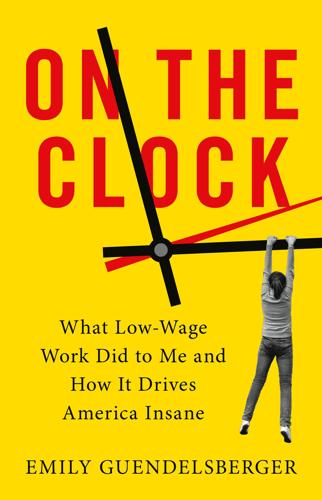
On the Clock: What Low-Wage Work Did to Me and How It Drives America Insane
by
Emily Guendelsberger
Published 15 Jul 2019
Stiglitz, Amartya Sen, and Jean-Paul Fitoussi Hand to Mouth: Living in Bootstrap America, Linda Tirado Why Zebras Don’t Get Ulcers, Robert Sapolsky Temp: How American Work, American Business, and the American Dream Became Temporary, Louis Hyman Private Government: How Employers Rule Our Lives (and Why We Don’t Talk About It), Elizabeth Anderson Labor and Monopoly Capital: The Degradation of Work in the Twentieth Century, Harry Braverman The New Ruthless Economy: Work and Power in the Digital Age, Simon Head Do What You Love: And Other Lies About Success and Happiness, Miya Tokumitsu HyperNormalisation (film), Adam Curtis On workplaces in this book The Everything Store: Jeff Bezos and the Age of Amazon, Brad Stone Fast Food, Fast Talk: Service Work and the Routinization of Everyday Life, Robin Leidner The Furniture Wars: How America Lost a Fifty Billion Dollar Industry, Michael K. Dugan Closing: The Life and Death of an American Factory, Cathy N. Davidson McDonald’s: Behind the Arches, John F. Love On the history of work and management The Principles of Scientific Management, Frederick Winslow Taylor The One Best Way: Frederick Winslow Taylor and the Enigma of Efficiency, Robert Kanigel My Life and Work, Henry Ford I Invented the Modern Age: The Rise of Henry Ford, Richard Snow Taylorism Transformed: Scientific Management Theory Since 1945, Stephen P. Waring Contested Terrain: The Transformation of the Workplace in the Twentieth Century, Richard Edwards The Machine That Changed the World: The Story of Lean Production, James P.
…
And since skilled workers also tended to be the most senior, they were often the ones organizing and enforcing the pace of work—not factory owners. So how did Capital get Labor in the sleeper hold that produced SDF8? It started back in my hometown of Philadelphia with Frederick Taylor—father of scientific management and the most important forgotten man in US history. Frederick Winslow Taylor was born into a wealthy Philadelphia family in 1856. Expected to go to Harvard, he instead chose to go into industry by taking a job as a lowly machinist’s apprentice at Midvale Steelworks. As young Fred worked his way up to head engineer, he observed widespread soldiering among his coworkers.
…
I had to laugh at the slideshow’s pages and pages of in-depth hypotheses about potential reasons for the high turnover—I could have saved them a lot of time and money with a single slide reading THIS PLACE SUCKS DONKEY BALLS. Maybe try making this job less awful—or at least paying enough to make up for how awful it is, I think. I mean, it worked for Henry Ford. Kind of. Henry Ford and Frederick Winslow Taylor have a lot in common. Both became machinists’ apprentices instead of going to college, to their families’ dismay. Both were obsessed with efficiency and productivity as cures for poverty: “It is possible to increase the well-being of the workingman—not by having him do less work, but by aiding him to do more,” Ford wrote in his 1922 autobiography, My Life and Work.
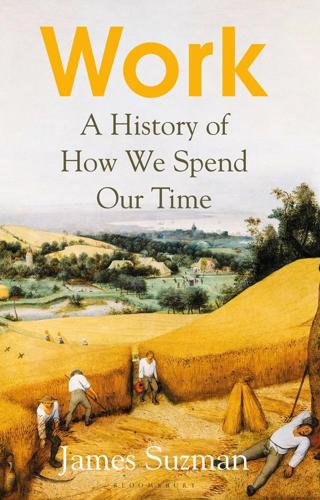
Work: A History of How We Spend Our Time
by
James Suzman
Published 2 Sep 2020
Instead, as energy-capture rates have surged, new technologies have come online and our cities have continued to swell, constant and unpredictable change has become the new normal everywhere, and anomie looks increasingly like the permanent condition of the modern age. 13 Top Talent ‘Hardly a competent workman can be found . . . who does not devote a considerable amount of time to studying just how slowly he can work and still convince his employer he’s going at a good pace,’ Frederick Winslow Taylor explained to a meeting of the American Society of Mechanical Engineers in June 1903. He was lecturing them about the perils of the ‘natural tendency of men to take it easy’ or to ‘loaf’ in the workplace, a phenomenon he called ‘soldiering’ because it reminded him of the half-hearted efforts of military conscripts, who only ever showed ambition when dodging unpleasant duties.
…
He was also the first to realise that in the modern era most people went to work to make money rather than products, and that it was the factories themselves that made actual things. Charles Darwin’s friend and neighbour, Sir John Lubbock, 1st Baron Avebury, was the very model of a modern Victorian gentleman. And like his near contemporary, Frederick Winslow Taylor, he was also a very busy man. Lubbock, who died in 1913 at the age of seventy-nine, is now remembered by anthropologists and archaeologists as the man who coined the terms ‘Palaeolithic’ to describe Stone Age foragers and ‘Neolithic’ to describe the oldest farming cultures. But he ought to be remembered by many others too, at least in the United Kingdom and its former colonies, where one of his achievements is still celebrated on eight or more occasions every year.
…
Indeed, it takes a special form of privilege to be able to devote several intensive months, as Lubbock once did, to trying to teach his beloved pet poodle, Van, how to read. Lubbock was not unusual in this regard. Like Darwin, Boucher de Perthes, Benjamin Franklin, Adam Smith, Aristotle and even the frenetic Frederick Winslow Taylor, Lubbock’s most important achievements were only possible because he was wealthy enough to afford to do exactly what he wanted to. If he’d had to work the same hours as the staff who maintained High Elms or the thousands of men, women and children labouring on farms and in the factories, he wouldn’t have had the influence to push the Bank Holiday Act through Parliament, nor the time or energy to study archaeology, play sports or carefully document the habits of garden insects.

Make Your Own Job: How the Entrepreneurial Work Ethic Exhausted America
by
Erik Baker
Published 13 Jan 2025
As Alexander Field argues, the corporation achieved higher returns on capital by allowing managers to match supply more closely to demand, reducing excess inventory stockpiles, while also smoothing out cyclical fluctuations in output to boost overall utilization rates.22 The second key capital-stretching innovation was “scientific management,” popularized by the Philadelphia-based engineer Frederick Winslow Taylor. “Taylorism” gained traction in the steel industry in the 1890s and spread to other industrial sectors in the 1910s, with managers often implementing Taylor’s schemes in a modified or partial form. The objective of scientific management was to eliminate wasted time and effort in production processes, introducing new shop layouts, processes, and tools to streamline individual work tasks, so that more could be accomplished in a day.
…
He affirmed the limitless field of possibilities open to any individual in touch with their inner potential, but his imagination failed to apprehend or challenge how the new life paths opened by entrepreneurial activity remained constrained by the fundamental unit of capitalist social relations: the job. Chapter 2 Leading Change In january 1912, frederick winslow taylor arrived at the us house of Representatives for an intensive cross-examination at the hands of William B. Wilson, the chairman of the House Committee on Labor. Taylor was coming into his own as the most hated enemy of the American labor movement. After quietly revolutionizing production in pockets of the steel industry over three decades of relative anonymity, he had become better known in 1910, when future Supreme Court Justice Louis Brandeis argued to the Interstate Commerce Commission that the railroads could save themselves roughly a million dollars a day by implementing scientific management, and should do so rather than asking for a rate hike.
…
The dissolution of traditional gender roles was one more deleterious consequence of liberal rationalism: “As soon as men and women learn the utilitarian lesson,” he argued, they “refuse to take for granted the traditional arrangements that their social environment makes for them.”70 But once a month at the Cabot weekends, with the alcohol flowing at the Harvard faculty club and at high-end Boston restaurants, a group of budding American executives would have the chance to rediscover what it meant to be a man. “In the past the man has been first,” Frederick Winslow Taylor famously declared in Principles of Scientific Management, but it was his conviction that “in the future the system must be first.”71 This proclamation never sat well with those men in business who very much wanted to be first. In the depths of the Depression, with the technical efficacy and political soundness of managerial “systems” under suspicion, they finally got their revenge.
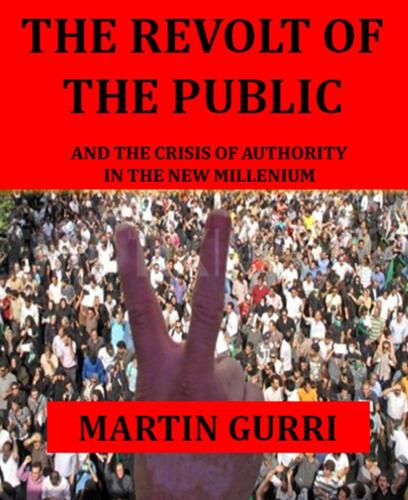
The Revolt of the Public and the Crisis of Authority in the New Millennium
by
Martin Gurri
Published 13 Nov 2018
Whether this transfiguration took place because it suited the economic pressures of the age, I am not qualified to say. But industry needed mass labor for production and a mass market for consumption. By “mass labor” I mean a generalized pool of workers equally trainable to the highest pitch of efficiency. Forging and deploying such a mass became the goal of “scientific management” and its great apostle, Frederick Winslow Taylor. With time and motion studies in hand, the scientific manager could program his workers’ every move as if they were a single instrument – a human machine. The work of every workman is fully planned out by the management at least one day in advance, and each man receives in most cases complete written instructions, describing in detail the task which he is to accomplish, as well as the means to be used in doing the work.[35] The system was top-down, intrusive, and impersonal, but it became orthodoxy in the industrialized world, and it caught the attention of influential persons.
…
The work of every workman is fully planned out by the management at least one day in advance, and each man receives in most cases complete written instructions, describing in detail the task which he is to accomplish, as well as the means to be used in doing the work.[35] The system was top-down, intrusive, and impersonal, but it became orthodoxy in the industrialized world, and it caught the attention of influential persons. Henry Ford and Lenin were Taylorists, each in his way. Both believed in an infallible vanguard commanding a mass of undifferentiated humanity. 4.2 Frederick Winslow Taylor[36] The industrial age was Taylorist to the core. The ordinary person, so hopelessly parochial through all of history, got flattened into the masses: better educated, more affluent and mobile, and organized into gigantic hierarchies for every domain of activity. The masses functioned as the anti-public.
…
This reaction could only be understood in a historical context. Since the eighteenth century, when intellectuals like Voltaire felt obliged to dabble in chemical experiments, science had been considered the most rigorous domain of human knowledge. To be scientific meant to speak with great authority. Frederick Winslow Taylor, we have seen, labeled his system “scientific management.” A few decades earlier, Marx had called his political ideals “scientific socialism,” to differentiate them from utopian schemes. In general, the prestige of the scientist derived from the belief that he journeyed to realms of mystery and brought back material benefits for the human race.
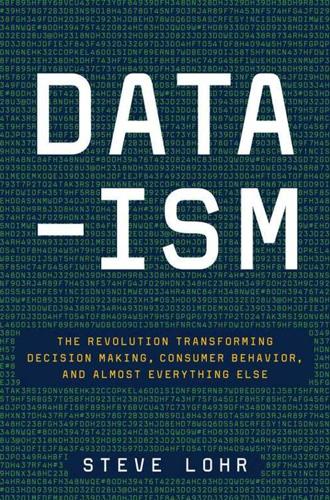
Data-Ism: The Revolution Transforming Decision Making, Consumer Behavior, and Almost Everything Else
by
Steve Lohr
Published 10 Mar 2015
seeks to reverse engineer what marketers do with big data: Arvind Narayanan’s descriptions and quotes come from an interview on March 3, 2014. “The algorithms should be made public”: An interview on March 2, 2014, with Marc Rotenberg. 11: The Future Frederick Winslow Taylor was deceptively slight: Information and quotes from Taylor’s writing come from Robert Kanigel’s The One Best Way: Frederick Winslow Taylor and the Enigma of Efficiency (Viking, 1997). It is the definitive biography of Taylor and his times. what the historian Alfred D. Chandler Jr. called managerial capitalism: Chandler won the Pulitzer Prize in history for his chronicle of the rise of modern business management up to the 1970s, The Visible Hand: The Managerial Revolution in American Business (Belknap Press/Harvard University Press, 1977).
…
Probably not. You can avoid some tracking mechanisms, but trying to become a privacy survivalist seems a fool’s errand. As a practical matter, there is no opt-out from the big-data world. Nor would most of us want to. 11 THE FUTURE: DATA CAPITALISM As towering historical figures go, Frederick Winslow Taylor was deceptively slight. He stood five feet nine and weighed about 145 pounds. But the trim mechanical engineer was an influential pioneer of data-driven decision making, an early management consultant whose concept of “scientific management” was widely embraced a century ago on factory floors and well beyond.
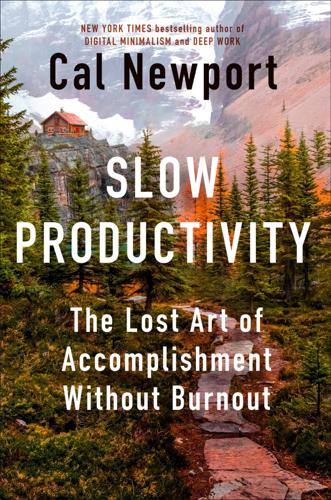
Slow Productivity: The Lost Art of Accomplishment Without Burnout
by
Cal Newport
Published 5 Mar 2024
GO TO NOTE REFERENCE IN TEXT By the end of the decade: G. N. Georgano, Cars: Early and Vintage, 1886–1930 (London: Grange-Universal, 1985). GO TO NOTE REFERENCE IN TEXT the optimal shovel load: For more on Taylor and shovels, see “Frederick Winslow Taylor, the Patron Saint of the Shovel,” Mental Floss, April 27, 2015, mentalfloss.com/article/63341/frederick-winslow-taylor-patron-saint-shovel. GO TO NOTE REFERENCE IN TEXT “The knowledge worker cannot”: Peter F. Drucker, The Effective Executive: The Definitive Guide to Getting Things Done (New York: HarperCollins, 2006), 4. GO TO NOTE REFERENCE IN TEXT One particularly damning analysis: Jory MacKay, “Communication Overload: Our Research Shows Most Workers Can’t Go 6 Minutes without Checking Email or IM,” RescueTime (blog), July 11, 2018, blog.rescuetime.com/communication-multitasking-switches.
…
But then the knowledge sector emerged as a major force in the mid-twentieth century, and this profitable dependence on crisp, quantitative, formal notions of productivity all but vanished. There was, as it turns out, a good reason for this abandonment: the old notions of productivity that worked so well in farming and manufacturing didn’t seem to apply to this new style of cognitive work. One problem is the variability of effort. When the infamous efficiency consultant Frederick Winslow Taylor was hired to improve productivity at Bethlehem Steel in the early twentieth century, he could assume that each worker at the foundry was responsible for a single, clear task, like shoveling slag iron. This made it possible for him to precisely measure their output per unit of time and seek ways to improve this metric.
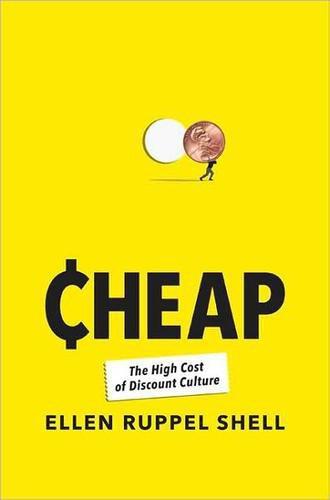
Cheap: The High Cost of Discount Culture
by
Ellen Ruppel Shell
Published 2 Jul 2009
As one scholar put it, “Except for Whitney’s ability to sell an undeveloped idea, little remains of his title as father of mass production.” The real hero here was Simeon North, a steady and humble maker of scythes and other small agricultural implements who pioneered both interchangeable parts and its corollary, mass production. Using a manufacturing technique that would later be linked to efficiency expert Frederick Winslow Taylor, North broke down the gun-building process into a series of basic tasks and distributed the work among a group of semiskilled laborers. This radical departure from traditional gun making led to a cheaper and more consistently reliable product. As North reported in 1808, “To make my contract for pistols advantageous for the United States and to myself I must go to a great proportion of the expense before I deliver any pistols.
…
Shopping through mail-order-house catalogs carried such a powerful stigma that Sears shipped merchandise shrouded in plain brown wrappers. As the new century emerged, a crescendo of critics voiced alarm at the growing trend toward Cheap, in particular as it applied to the production of America’s most iconic object: the automobile. Even efficiency guru Frederick Winslow Taylor seemed to think things had gone too far when he scoffed at the mass-produced Model T Ford as “very cheaply and roughly made.” Henry Ford, who famously pioneered the moving assembly line in 1914, could only marvel at this criticism. His assembly plant in Highland Park, Michigan, dubbed the “Crystal Palace” for its abundant windows, was a model of scientific management.
…
A Vuitton bag, however, is marked up as much as thirteen times. 5 in the same terms as he to them: Clifford Geertz, “Bazaar Economy.” 6 illustrates the problem with a thought experiment: George A. Akerlof, “The Market for ‘Lemons’: Quality Uncertainty and the Market Mechanism,” Quarterly Journal of Economics 84, no. 3 (1970): 488-500. CHAPTER ONE: DISCOUNT NATION 7 or generate even as much power as a horse: Robert Kanigel, The One Best Way: Frederick Winslow Taylor and the Enigma of Efficiency (New York: Viking, 1997), 95-96. Kanigel shared his thoughts on the importance of mass manufacture on price over a drink at the annual meeting of the American Association for the Advancement of Science in Boston. 8 for firepower in the latter half of the eighteenth century: Merritt Roe Smith, “Eli Whitney and the American System of Manufacturing,” in Carroll W.

Reinventing Capitalism in the Age of Big Data
by
Viktor Mayer-Schönberger
and
Thomas Ramge
Published 27 Feb 2018
When the Times exposé appeared, it struck a nerve, garnering 5,858 comments online, the most in the website’s history up to that point. As the Economist noted, many of the commenters “claimed that their employers had adopted similar policies. Far from being an outlier, it would seem that Amazon is the embodiment of a new trend”—what the magazine branded “digital Taylorism,” after the scientific management principles of Frederick Winslow Taylor. It seemed that new technologies were ushering in a supercharged version of command-and-control, fueled by data about employees, processes, products, services, and customers. But why would a celebrated marketplace innovator like Jeff Bezos embrace the centralized structures, rules, and behaviors of the firm to manage the vast majority of his business empire rather than developing technology to capture the decentralized magic of the market?
…
For the key concept of the firm—centralizing information flows and decision-making as a tool of comprehensive control—to attain its full potential, the concept needs to be deeply embedded in a firm’s inner workings. This kind of extensive reporting commenced in earnest around the 1890s, when American engineer Frederick Winslow Taylor championed a new school of thought. Today, Taylor is mainly remembered for advocating the collection of minute details about every task performed in a factory. Although this was sometimes effective—as at Bethlehem Steel—“Taylorism” was often resented by employees, who felt that quantifying every aspect of human labor turned workers into mere cogs in the industrialists’ machines.
…
Smith, “Hidden Debt: From Enron’s Commodity Prepays to Lehman’s Repo 105s,” Financial Analysts Journal 67, no. 5 [September/October 2011], https://www.cfainstitute.org/learning/products/publications/faj/Pages/faj.v67.n5.2.aspx), and electronics giant Toshiba, which in 2015 was caught posting profits early and pushing back the posting of losses in a salesperson’s version of a Ponzi scheme (see Sean Farrell, “Toshiba Boss Quits over £780 Million Accounting Scandal,” Guardian, July 21, 2015, https://www.theguardian.com/world/2015/jul/21/toshiba-boss-quits-hisao-tanaka-accounting-scandal). collection of minute details about every task: Robert Kanigel, The One Best Way: Frederick Winslow Taylor and the Enigma of Efficiency (New York: Little Brown, 1997). the first master’s degree in business administration: Soll, The Reckoning, 187. the punch-card tabulator: Geoffrey D. Austrian, Herman Hollerith: Forgotten Giant of Information Processing (New York: Columbia University Press, 1982), 111 et seq.
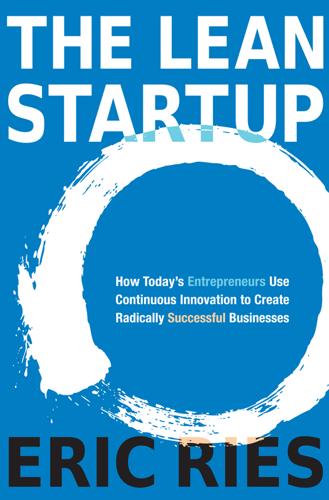
The Lean Startup: How Today’s Entrepreneurs Use Continuous Innovation to Create Radically Successful Businesses
by
Eric Ries
Published 13 Sep 2011
http://ericri.es/thetoyotaway Lean Thinking: Banish Waste and Create Wealth in Your Corporation, Revised and Updated by James P. Womack and Daniel T. Jones. http://ericri.es/LeanThinking The People’s Tycoon: Henry Ford and the American Century by Steven Watts. http://ericri.es/ThePeoplesTycoon The One Best Way: Frederick Winslow Taylor and the Enigma of Efficiency by Robert Kanigel. http://ericri.es/OneBestWay The Principles of Scientific Management by Frederick Winslow Taylor. http://ericri.es/ScientificManagement Extreme Programming Explained: Embrace Change by Kent Beck and Cynthia Andres. http://ericri.es/EmbraceChange Toyota Production System: Beyond Large-Scale Production by Taiichi Ohno.
…
There is a thriving community of Lean Startup meetups around the world as well as online, and suggestions for how you can take advantage of these resources listed in the last chapter of this book, “Join the Movement.” 13 EPILOGUE: WASTE NOT This year marks the one hundredth anniversary of Frederick Winslow Taylor’s The Principles of Scientific Management, first published in 1911. The movement for scientific management changed the course of the twentieth century by making possible the tremendous prosperity that we take for granted today. Taylor effectively invented what we now consider simply management: improving the efficiency of individual workers, management by exception (focusing only on unexpectedly good or bad results), standardizing work into tasks, the task-plus-bonus system of compensation, and—above all—the idea that work can be studied and improved through conscious effort.
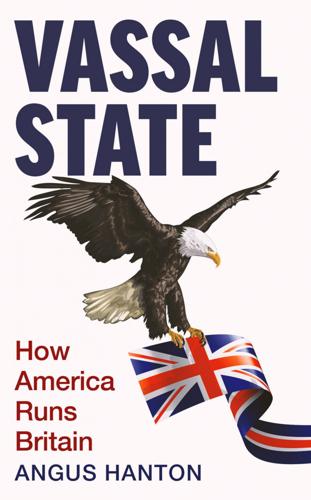
Vassal State
by
Angus Hanton
Published 25 Mar 2024
Beyond direct action, UK authorities apply resources to throttle any infringing websites by cutting off their lifeblood: in 2022, the City of London Police’s ‘Operation Creative’ stopped advertisers from supporting websites that break copyrights.30 The police asked the payment processors, such as Visa, Mastercard and PayPal, to withhold services for websites suspected of infringing copyrights, patents or trademarks. The science of efficiency The principal object of management should be to secure the maximum prosperity for the employer, coupled with the maximum prosperity for each employee. – Frederick Winslow Taylor, 191131 In reaching across the world to dominate the markets in goods and services, Americans have made efficient production into a science. This started with Frederick Winslow Taylor. As a young man in 1881, Taylor and his future brother-in-law Clarence Clark entered the first ever tennis doubles tournament of the US Open, and won it. Although it was only a hobby, Taylor said that becoming a tennis champion gave him a feel for efficient movement along with a taste for winning.
…
For the UK figure, see ‘About us’, Chartered Institute of Patent Attorneys [website], https://www.cipa.org.uk/. 26 ‘IBM builds a smarter planet’, IBM [website], https://www.ibm.com/smarterplanet/us/en/; ‘Policies & practices’, P&G [website], https://www.pg.co.uk/policies-and-practices/purpose-values-and-principles/; ‘Disneyland Resort – the happiest place on earth’, Disney Parks [website], https://disneyparks.disney.go.com/au/disneyland/your-happiest-place-disney/. 27 Interview with the author, September 2020. 28 ‘Coke and McDonald’s, growing together since 1955’, New York Times (15 May 2014), https://www.nytimes.com/2014/05/16/business/coke-and-mcdonalds-working-hand-in-hand-since-1955.html. 29 ‘MediaTalk; Disney buys the rights to Winnie the Pooh’, New York Times (5 March 2001), https://www.nytimes.com/2001/03/05/business/mediatalk-disney-buys-the-rights-to-winnie-the-pooh.html. 30 ‘Operation Creative blocks £6 million of UK advertising revenue from funding illegal websites’, City of London Police [website] (6 February 2023), https://www.cityoflondon.police.uk/news/city-of-london/news/2023/january/operation-creative-blocks-6-million-of-uk-advertising-revenue-from-funding-illegal-websites/. 31 Frederick Winslow Taylor, Principles of Scientific Management (New York: Harper & Brothers, 1911). 32 Peter F. Drucker, ‘The rise of the knowledge society’ [PDF], Wilson Quarterly 17/2 (1993), http://archive.wilsonquarterly.com/sites/default/files/articles/WQ_VOL17_SP_1993_Article_02_1.pdf. 33 ‘Hawthorne effect’, Wikipedia [website], https://en.wikipedia.org/wiki/Hawthorne_effect. 34 See, for instance, ‘Lean manufacturing’, Wikipedia [website], https://en.wikipedia.org/wiki/Lean_manufacturing; ‘Six Sigma’, Wikipedia [website], https://en.wikipedia.org/wiki/Six_Sigma; ‘What are performance metrics?’
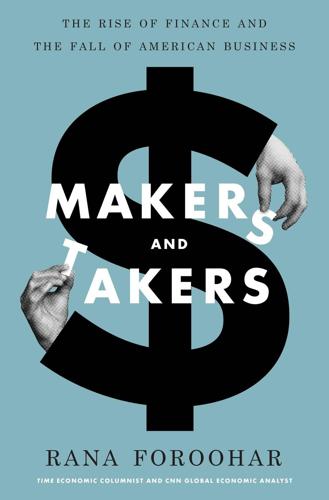
Makers and Takers: The Rise of Finance and the Fall of American Business
by
Rana Foroohar
Published 16 May 2016
Standard & Poor’s Ratings Services calculated that American nonfinancial companies held $1.82 trillion in cash at the end of 2014. See Vipal Monga, “Record Cash Hoard Concentrated Among Few Companies,” Wall Street Journal, June 11, 2015. 18. Frederick Winslow Taylor, The Principles of Scientific Management (New York: Harper, 1913), 59. 19. Frederick Winslow Taylor, Shop Management (New York: Harper, 1912), 99 and 104. 20. Robert R. Locke and J. C. Spender, Confronting Managerialism: How the Business Elite and Their Schools Threw Our Lives out of Balance (London: Zed Books, 2011). 21. Ibid., 5. 22.
…
Ford not only established a legal justification for shareholders’ rights above anyone else’s; it also set a terrible precedent for labor relations that would haunt American business. It was a precedent that chimed with another major business idea of the era: Taylorism. THE PRINCIPLES OF SCIENTIFIC (MIS)MANAGEMENT Even before Henry Ford was battling the Dodge brothers, Frederick Winslow Taylor, a mechanical engineer from Philadelphia, was gaining fame and fortune for his ideas about how to improve American industry. Those ideas, which came to be known as “efficiency theory” or, as critics put it, “Taylorism,” were laid out in his seminal work, The Principles of Scientific Management, published in 1911.
…
That man will be trained for management in general, rather than in any one phase of business. He’ll learn his technique in school, rather than on the job,” proclaimed a 1952 issue of BusinessWeek that looked at the rise of this new paradigm.29 It was the era of the rational manager, after all. Just as Frederick Winslow Taylor had used numerical efficiency to whip factory production and workers into shape, business schools using the same operational research methodology employed by the Defense Department would make management “scientific” and churn out the cadres of corporate followers so famously captured by William H.
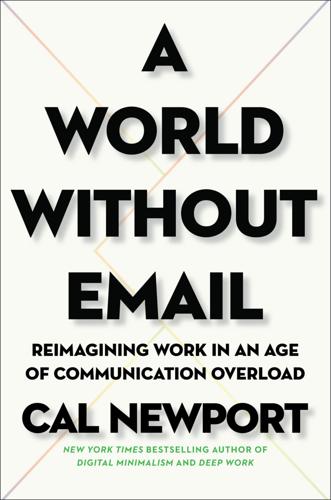
A World Without Email: Reimagining Work in an Age of Communication Overload
by
Cal Newport
Published 2 Mar 2021
“The knowledge worker cannot be supervised closely or in detail,” Drucker wrote in his 1967 book, The Effective Executive. “He must direct himself.”34 This was a radical idea. In the nation’s factories, centralized control of workers was the standard. Influenced by the so-called “scientific management” principles popularized by Frederick Winslow Taylor, who would famously prowl the factory floor with a stopwatch, rooting out inefficient movements, industrial management saw workers as automatons executing optimized processes carefully designed by a small cadre of wise managers. Drucker argued this approach was doomed to fail in the new world of knowledge work, where productive output was created not by expensive equipment stamping out parts, but instead by cerebral workers applying specialized cognitive skills.
…
As the historian Joshua Freeman argues in his 2019 book, Behemoth, when we think about the productivity gains of the assembly line, we focus too much on efficient material handling. Many of these gains came instead from the “sheer intensification of work.”15 If you slacked off your attention for even a moment, you could stall the entire line—forcing workers into an unnatural combination of boredom and constant attentiveness. Frederick Winslow Taylor had earlier tried to boost efficiency by measuring workers’ performance with a stopwatch and offering incentives to those who were fast. Henry Ford bypassed Taylor’s approach by simply making it impossible to be anything but fast. “For assembly-line workers, work was relentless and repetitious,” writes Freeman.
…
The problem with the Pullman brass works, in other words, was not that the workers were bad at casting and polishing brass components, but instead how these efforts were assigned and organized. Like many fundamental ideas, it took a while for this new mindset to take hold in the industrial sector. When Frederick Winslow Taylor, the father of the scientific management revolution, was first rising to prominence in the late 1890s, most of the energy in this movement focused on the act of production itself. This is the era that gave rise to the image of the draconian Taylorist consultant, stopwatch in hand, trying to eliminate wasted motion on the factory floor.

Drive: The Surprising Truth About What Motivates Us
by
Daniel H. Pink
Published 1 Jan 2008
Harnessing this second drive has been essential to economic progress around the world, especially during the last two centuries. Consider the Industrial Revolution. Technological developments steam engines, railroads, widespread electricity played a crucial role in fostering the growth of industry. But so did less tangible innovations in particular, the work of an American engineer named Frederick Winslow Taylor. In the early 1900s, Taylor, who believed businesses were being run in an inefficient, haphazard way, invented what he called scientific management. His invention was a form of software expertly crafted to run atop the Motivation 2.0 platform. And it was widely and quickly adopted. Workers, this approach held, were like parts in a complicated machine.
…
As Frey writes, Intrinsic motivation is of great importance for all economic activities. It is inconceivable that people are motivated solely or even mainly by external incentives. How We Do What We Do If you manage other people, take a quick glance over your shoulder. There's a ghost hovering there. His name is Frederick Winslow Taylor remember him from earlier in the chapter? and he's whispering in your ear. Work, Taylor is murmuring, consists mainly of simple, not particularly interesting, tasks. The only way to get people to do them is to incentivize them properly and monitor them carefully. In the early 1900s, Taylor had a point.

Broke: How to Survive the Middle Class Crisis
by
David Boyle
Published 15 Jan 2014
Basics but with a posh name. Would you ever get ‘basics’ Parmigiano Reggiano in Sainsbury’s? I wonder. Or would they just call it parmesan? 7 The sixth clue: the strange case of the disappearing professionals ‘In the past the man has been first; in the future the system must be first.’ Frederick Winslow Taylor, The Principles of Scientific Management. 1911 Come with me for a moment to the small Hampshire village of Nether Wallop, with its thatched roofs and perfect, photogenic houses. A distant prospect of the ancient hill settlement of Danebury stands out against the skyline across the way. There are council houses there, so Nether Wallop is not wholly middle-class, but it might as well be — and middle-class in a particularly privileged way.
…
We have already seen how the twentieth-century multifunctional corporation, which had emerged, first at General Motors, in the 1930s, began to shed its middle-class layers. But there have been other forces at work as well, and partly what has become known as ‘digital Taylorism’. The reference is to the efficiency pioneer Frederick Winslow Taylor, of whom more later. It indicates the way that companies are increasingly codifying the knowledge used by their skilled or professional employees so that their work can be done anywhere in the world.[1] First the manufacturing was outsourced abroad, but now increasingly it is the middle-class functions as well — the design, the planning, and the programming know-how.
…
They have also seen their status and their salaries, and now their pensions, systematically shrunk over the past generation, and largely because of another process altogether, which has thrived over the last century, acting to hollow out our local institutions and to constrain their professionals. To pin this one down, we have to go back to Saratoga in New York State in June 1903. Frederick Winslow Taylor was a dapper little man, brimful of confidence but with the pugnacious manner of a man who has just been dismissed, when he rose to address the audience at the United States Hotel in Saratoga. The subject of this meeting of the American Society of Mechanical Engineers was ‘Shop Management’, by which he meant the factory ‘shop floor’.
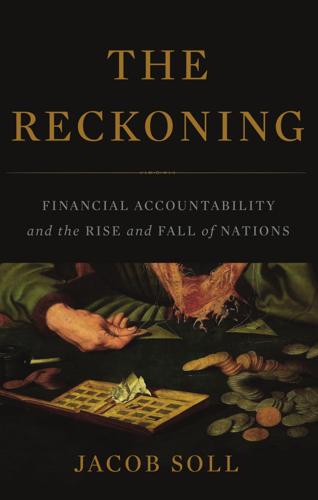
The Reckoning: Financial Accountability and the Rise and Fall of Nations
by
Jacob Soll
Published 28 Apr 2014
Seen through the accountant’s numbers, Conrad’s classic imperialist character Kurtz, and his nightmarish operation of slave labor, looked clean and efficient.14 The problem of financial success represented by numbers outweighing human rights plagued the Industrial Revolution into its later stages. From an established Philadelphia family of Mayflower stock, Frederick Winslow Taylor (1856–1915) chose to be an apprentice patternmaker and machine mechanic at the Philadelphia Hydraulic Works and then, in 1871, for the Midvale Steel Company. Taylor is now known for Taylorism, his “scientific management” approach to industrial and labor efficiency. In many ways, Taylor can be seen as the Josiah Wedgwood of the age of steel.
…
Browne, “The Natural Economy of Households,” 88–99. 12. Ibid., 92–94. 13. Ibid., 97; Charles Darwin, The Descent of Man, and Selection in Relation to Sex (London: John Murray, 1871), 1:167–182. 14. Joseph Conrad, Heart of Darkness, ed. Ross C. Murfin (Boston: Bedford/St. Martin’s, 1989), 33. 15. Rosita S. Chen and Sheng-Der Pan, “Frederick Winslow Taylor’s Contributions to Cost Accounting,” Accounting Historians Journal 7, no. 2 (1980): 2. 16. Daniel J. Boorstin, The Americans: The Democratic Experience (New York: Vintage Books, 1973). 17. Cited by John Huer, Auschwitz USA (Lanham, MD: Hamilton Books, 2010), 31. 18. Alfred C. Mierzejewski, Most Valuable Asset of the Reich: A History of the German National Railway (Chapel Hill: University of North Carolina Press, 2000), 2:20–21.
…
The History of don Quixote de la Mancha. London: James Burns, 1847. Chandler, Alfred D. The Visible Hand: The Managerial Revolution in American Business. Cambridge, MA: Harvard University Press, 1977. Chatfield, Michael. A History of Accounting Thought. Hisdale, IL: Dryden Press, 1974. Chen, Rosita S., and Sheng-Der Pan. “Frederick Winslow Taylor’s Contributions to Cost Accounting.” The Accounting Historians Journal 7, no. 2 (1980): 1–22. Chernow, Ron. Alexander Hamilton. New York: Penguin Books, 2004. Chéruel, Pierre-Adolphe, ed. Mémoires sur la vie publique et privée de Fouquet, Surintendant des finances. D’après ses lettres et des pièces inédites conservées à la Bibliothèque Impériale. 2 vols.
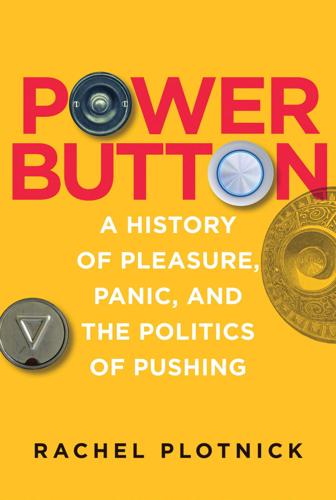
Power Button: A History of Pleasure, Panic, and the Politics of Pushing
by
Rachel Plotnick
Published 24 Sep 2018
Roger B. Whitman, “Planning for the Wiring of the House,” Country Life 40 (1921): 63. 16. “Combination Floor Key and Button,” Western Electrician 3, no. 18 (1888): 229. 17. Mary Pattison, Principles of Domestic Engineering; or the What, Why and How of a Home (New York: The Trow Press, 1915); Frederick Winslow Taylor, The Principles of Scientific Management (New York: Harper & Brothers, 1913). 18. John Wright, “Bell-Hanging for Inside Rooms,” Building Age 6, no. 2 (1884): 28. Homeowners with electricity and hotels commonly installed buttons at bedsides for the reclined caller to push for what (or whom) she needed with “ready access to it.”
…
Only in this way may the most be got out of life.”21 These individuals believed that honing reaction time—and making one’s interactions with communication and control mechanisms effortless—would aid the human body by enabling it to achieve its full potential.22 Well-known researchers such as Frank and Lillian Gilbreth and Frederick Winslow Taylor, the latter an advocate for a brand of scientific management known as “Taylorism,” desired this optimization to make laboring bodies, especially in factories, more efficient. In his classic book, The Principles of Scientific Management (1911), Taylor noted that university physiological departments routinely carried out experiments with electric buttons to “determine the ‘personal coefficient’ of the man tested.”23 He enthused that some individuals were “born with unusually quick powers of perception accompanied by quick responsive action.”24 To know each worker’s “personal coefficient” and assign him to his most effective post could help a manager to maximize production from his workers’ bodies and therefore improve his business.
…
The machine metaphor permeated many industries, especially medicine. See Samuel Osherson and Lorna AmaraSingham, “The Machine Metaphor in Medicine,” in Social Contexts of Health, Illness, and Patient Care, ed. Elliot G. Mishler (Cambridge: Cambridge University Press, 1981), 228–229. 23. Frederick Winslow Taylor, The Principles of Scientific Management (New York: Harper & Brothers, 1913). 24. Taylor, The Principles of Scientific Management. 25. Angelo Mosso, Fatigue, trans. M. Drummond and W. B. Drummond (New York: G. P. Putnam’s Sons, 1904); Frances Gulick Jewett, Control of Body and Mind (Boston: Ginn & Company, 1908).
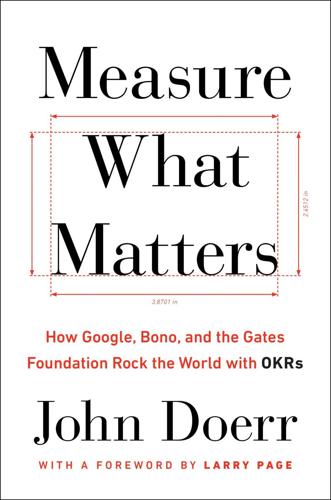
Measure What Matters: How Google, Bono, and the Gates Foundation Rock the World With OKRs
by
John Doerr
Published 23 Apr 2018
Strictly speaking, however, his “objectives and key results” did not spring from the void. The process had a precursor. In finding his way, Grove had followed the trail of a legendary, Vienna-born gadfly, the first great “modern” business management thinker: Peter Drucker. Our MBO Ancestors The early-twentieth-century forefathers of management theory, notably Frederick Winslow Taylor and Henry Ford, were the first to measure output systematically and analyze how to get more of it. They held that the most efficient and profitable organization was authoritarian. * Scientific management, Taylor wrote, consists of “knowing exactly what you want men to do and then see that they do it in the best and cheapest way.”
…
CHAPTER 2: The Father of OKRs In the space : While there’s no record of the session I attended, we unearthed a video recording of a similar seminar Grove gave three years later. The attributed remarks are sourced from that recording and hosted on www.whatmatters.com. Scientific management, Taylor wrote : Frederick Winslow Taylor, The Principles of Scientific Management (New York and London: Harper & Brothers, 1911). “crisp and hierarchical” : Andrew S. Grove, High Output Management (New York: Random House, 1983). “a principle of management” : Peter F. Drucker, The Practice of Management (New York: Harper & Row, 1954).
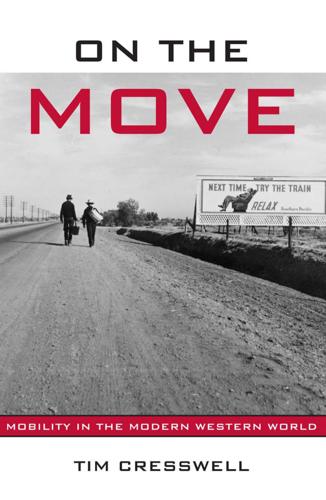
On the Move: Mobility in the Modern Western World
by
Timothy Cresswell
Published 21 May 2006
See Stephen Kern, The Culture of Time and Space 1880–1918 (Cambridge, MA: Harvard University Press, 1983). Chapter 4 1. 2. 3. 4. 5. 6. 7. 8. 9. 10. 11. 12. 13. 14. 15. For biographies of Taylor, see Frank Barkley Copley, Frederick W. Taylor, Father of Scientific Management (New York: American Society of Mechanical Engineers, 1923); Robert Kanigel, The One Best Way: Frederick Winslow Taylor and the Enigma of Efficiency (New York: Viking, 1997). For critical accounts of Taylorism, see Harry Braverman, Labor and Monopoly Capital (New York: Monthly Review Press, 1974); Bernard Doray, From Taylorism to Fordism: A Rational Madness (London: Free Association, 1988); Judith A. Merkle, Management and Ideology: The Legacy of the International Scientific Management Movement (Berkeley: University of California Press, 1980); Ernest J.
…
Reid, “From ‘Trained Gorilla’ to ‘Humanware’: Repoliticizing the Body-Machine Complex between Fordism and Post-Fordism,” in The Social and Political Body, ed. Theodore Schatzki and Wolfgang Natter (New York: Guilford, 1996), 181–220. Lenin cited in James Scott, Seeing Like a State: How Certain Schemes to Improve the Human Condition Have Failed (New Haven, CT: Yale University Press, 1998), 101. Braverman, Labor and Monopoly Capital, 112. Frederick Winslow Taylor, The Principles of Scientific Management (New York: Norton, 1967), 19. Ibid., 21. Ibid., 43. Ibid., 45–46 Ibid., 59. Frederick Taylor Archives, Special Collections, Stevens College, Hoboken, New Jersey, Box 106B, Legislation, Scientific Management, Henry Knolle. Frederick Taylor Archives, Box 106B, Legislation, Scientific Management, Henry Knolle.
…
“Cultural Change: Functional and Dysfunctional Expressions of Dance, a Form of Affective Culture.” In The Performing Arts, edited by J. Blacking and J. Kaeli’inohomoku. The Hague: Mouton, 1979. Kaeppler, A. “American Approaches to the Study of Dance.” Yearbook of Traditional Music 23 (1991): 11–21. Kanigel, Robert. The One Best Way: Frederick Winslow Taylor and the Enigma of Efficiency, The Sloan Technology Series. New York: Viking, 1997. Kaplan, Caren. Questions of Travel: Postmodern Discourses of Displacement. Durham, NC: Duke University Press, 1996. Kennedy, Duncan. “The Critique of Rights in Critical Legal Studies.” In Left Legalism/Left Critique, edited by Wendy Brown and Janet Halley, 178–228.
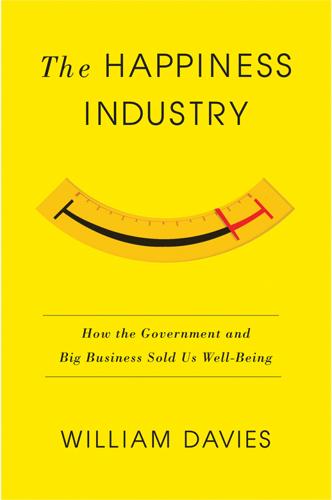
The Happiness Industry: How the Government and Big Business Sold Us Well-Being
by
William Davies
Published 11 May 2015
The science of ergonomics developed to study and photograph bodies in motion, in the attempt to spot precisely where energy was being wasted. The muscles, and even the blood, were examined, to try and understand how entropy afflicted the human body in the workplace. This was the context into which the mechanical engineer Frederick Winslow Taylor launched his career as the world’s first management consultant. Taylor was born into a prominent and wealthy Philadelphia family, with roots stretching back to Edward Winslow, one of the passengers on the Mayflower. This heritage was crucial. It was his eminent family name which granted him privileged access to the industrial firms of the city, in ways that would be decisive for his career.
…
Instead, traditional forms of management and hierarchy are rescued by the new ubiquity of digital surveillance, which allows informal behaviour and communication to be tracked, analysed and managed. Rather than the rise of alternative corporate forms, we are now witnessing the discreet return of the ‘scientific management’ style of Frederick Winslow Taylor, only now with even greater scientific scrutiny of bodies, movement and performance. The front line in worker performance evaluation has shifted into bodily-monitoring devices, heart-rate monitoring, and sharing of real-time health data, for analysis of stress risks. Strange to say, the notion of what represents a ‘good’ worker has gone full circle since the 1870s, from the origins of ergonomic fatigue studies, through psychology, psychosomatic medicine and back to the body once more.
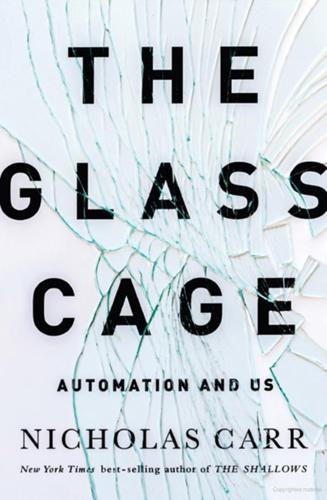
The Glass Cage: Automation and Us
by
Nicholas Carr
Published 28 Sep 2014
Once a manufacturer had broken an intricate process into a series of well-defined “simple operations,” it became relatively easy to design a machine to carry out each operation. The division of labor within a factory provided a set of specifications for its machinery. By the early years of the twentieth century, the deskilling of factory workers had become an explicit goal of industry, thanks to Frederick Winslow Taylor’s philosophy of “scientific management.” Believing, in line with Smith, that “the greatest prosperity” would be achieved “only when the work of [companies] is done with the smallest combined expenditure of human effort,” Taylor counseled factory owners to prepare strict instructions for how each employee should use each machine, scripting every movement of the worker’s body and mind.29 The great flaw in traditional ways of working, Taylor believed, was that they granted too much initiative and leeway to individuals.
…
Bates, “Clinical Decision Support and the Law: The Big Picture,” Saint Louis University Journal of Health Law and Policy 5 (2012): 319–324. 24.Atul Gawande, The Checklist Manifesto: How to Get Things Right (New York: Henry Holt, 2010), 161–162. 25.Lown and Rodriguez, “Lost in Translation?” 26.Jerome Groopman, How Doctors Think (New York: Houghton Mifflin, 2007), 34–35. 27.Adam Smith, The Wealth of Nations (New York: Modern Library, 2000), 840. 28.Ibid., 4. 29.Frederick Winslow Taylor, The Principles of Scientific Management (New York: Harper & Brothers, 1913), 11. 30.Ibid., 36. 31.Hannah Arendt, The Human Condition (Chicago: University of Chicago Press, 1998), 147. 32.Harry Braverman, Labor and Monopoly Capital: The Degradation of Work in the Twentieth Century (New York: Monthly Review Press, 1998), 307. 33.For a succinct review of the Braverman debate, see Peter Meiksins, “Labor and Monopoly Capital for the 1990s: A Review and Critique of the Labor Process Debate,” Monthly Review, November 1994. 34.James R.
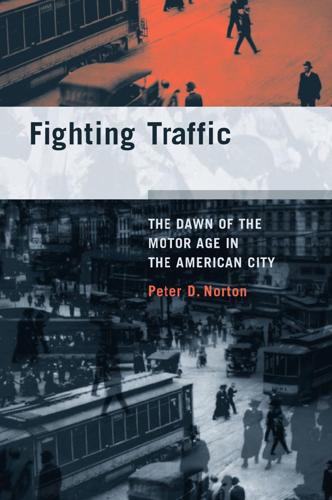
Fighting Traffic: The Dawn of the Motor Age in the American City
by
Peter D. Norton
Published 15 Jan 2008
For the basic early postulations of scientific management see especially Frederick Winslow Taylor, The Principles of Scientific Management (Harper and Row, 1947) and Frank B. Gilbreth, Motion Study (D. Van Nostrand, 1911). Of the very extensive historical work on scientific management in American industry, see especially Samuel Haber, Efficiency and Uplift: Scientific Management in the Progressive Era (University of Chicago Press, 1964), Daniel Nelson, Frederick Winslow Taylor and the Rise of Scientific Management (1980), and Robert Kanigel, The One Best Way: Frederick Winslow Taylor and the Enigma of Efficiency (Viking, 1997). 44.
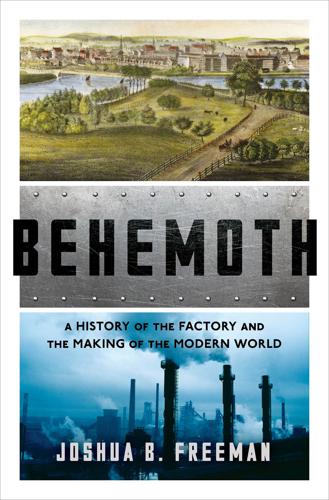
Behemoth: A History of the Factory and the Making of the Modern World
by
Joshua B. Freeman
Published 27 Feb 2018
Its development involved many different companies, engineers, and managers over an extended period, who instituted a series of incremental changes that together represented a substantial transformation in how manufacturing—and later office work—was carried out. But in the public mind, scientific management became largely associated with one man, Frederick Winslow Taylor, who emerged as its leading theoretician, ideologue, and publicist. Taylor, the son of a prominent, liberal Philadelphia family, followed an unusual path in spurning college to become an apprentice machinist and patternmaker, before taking on a series of factory-management positions and then a career as an industrial consultant.
…
For assembly-line workers, work was relentless and repetitious, a single task or just a few done over and over again, every time a new part or subassembly or chassis appeared before them.17 In the late nineteenth and early twentieth century, management experts considered “soldiering” (workers deliberately working at less than a maximum possible pace) the paramount obstacle to efficiency and profits. To counter it, they devised all sorts of schemes, from elaborate systems of piecework pay to Frederick Winslow Taylor’s “scientific management.” The assembly line provided an alternate solution to the same problem, having machinery set the pace of work rather than foremen or incentives. Well before Ford adopted the assembly line, packing house managers saw the possibilities in mechanically pacing production; in 1903, a Swift supervisor said, “if you need to turn out a little more, speed up the conveyers a little and the men speed up to keep pace.”18 Assembly-line work proved physiologically and psychologically draining in ways other types of labor were not.
…
But interest was at least as great in the ideology associated with advanced manufacturing, the promise that with productivity gains the income of workers could go up even as profits rose, thereby dissipating class conflict and social unrest.6 As avatars of scientific management and mass production, Frederick Winslow Taylor and Henry Ford became well-known and well-regarded figures in Europe. By the early twentieth century, Taylor’s writings had been translated into French, German, and Russian. In the early 1920s, Ford displaced Taylor as the icon of Americanism, as worker criticism of Taylorist management grew and the wonders of the assembly line and the Model T became better known abroad.
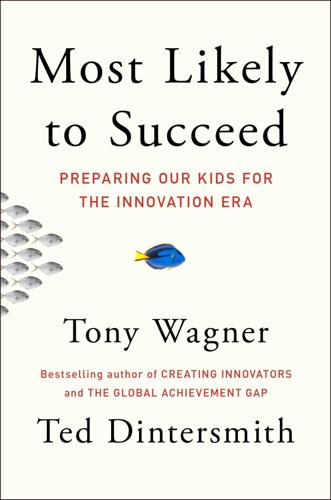
Most Likely to Succeed: Preparing Our Kids for the Innovation Era
by
Tony Wagner
and
Ted Dintersmith
Published 17 Aug 2015
Mann was instrumental in getting Massachusetts to adopt tax-supported elementary public education, and set the stage for the scaling of a new kind of education in the United States. At the end of the nineteenth century, America needed to educate large numbers of immigrants and refugees from farms for basic citizenship and for jobs in a growing industrial economy. As work-flow experts like Frederick Winslow Taylor formulated efficient means of production, the level of expertise of workers in the production chain narrowed. The economy needed single-task interchangeable employees, not skilled artisans. And we needed schools to teach the surging numbers of factory workers the basic skills needed for jobs in our emerging cities—to follow orders, be punctual, and perform rote tasks.
…
Does coming up with the right cookie-cutter answer about the author’s tone reflect anything important? When is the last time you had to solve for the exponent in a higher-order expression? Time pressure plays a big role in a student’s test performance. Yet how often in life are we given forty-five minutes to complete a life-shaping task? In the world of Frederick Winslow Taylor, the industrial engineering pioneer who pushed for enforced standardization of behavior to wring every ounce of efficiency from an assembly line, time constraints mattered. But Taylor is dead, and so is the assembly line. Yet our kids live with the time pressure of these high-stakes tests.
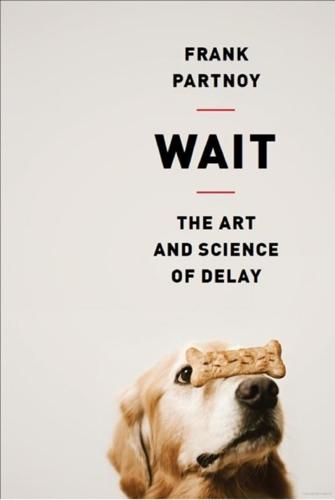
Wait: The Art and Science of Delay
by
Frank Partnoy
Published 15 Jan 2012
According to Zimbardo and Boyd, “The transition from event time to clock time profoundly changed society, especially economic relations. We transitioned from an event-based and product-based economy to a time-based economy in which we are paid per unit sold, if hourly, or lump sum, if salaried.”3 For many of us, clock time dictates what we do at work. The importance of clock time in the workplace can be traced back to Frederick Winslow Taylor. In 1909, Taylor, a former lathe operator, engineer, and management consultant, published The Principles of Scientific Management, a book advocating the use of time as a tool for improving workplace efficiency.4 Taylor argued that companies should replace rules of thumb for accomplishing tasks with precise instructions based on scientific analysis of the timing of tasks.
…
Tamar Avnet and Anne-Laure Sellier, “Clock Time Versus Event Time: Temporal Culture or Self-Regulation?” Working Paper Series, December 20, 2010, http:/ssrn.com/abstract=1665936. 2. Philip Zimbardo and John Boyd, The Time Paradox: The New Psychology of Time That Will Change Your Life (Free Press, 2008), p. 30. 3. Zimbardo and Boyd, The Time Paradox, pp. 38, 40. 4. Frederick Winslow Taylor, The Principles of Scientific Management (1909). 5. See, for example, Heather Menzies, No Time: Stress and the Crisis of Modern Life (Douglas & McIntyre, 2005). 6. Mark Aguiar and Erik Hurst, “Measuring Trends in Leisure: The Allocation of Time over Five Decades,” Quarterly Journal of Economics 112(2007): 969–1006.
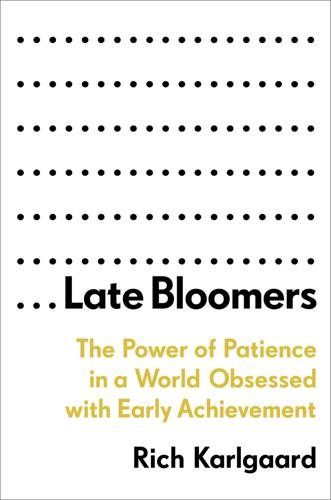
Late Bloomers: The Power of Patience in a World Obsessed With Early Achievement
by
Rich Karlgaard
Published 15 Apr 2019
Progressivism was well-intended and produced many needed reforms, notably in public health, worker safety, antitrust regulation, and the right of women to vote. Its effects in education and business management were also profound but more mixed. In business, Progressivism imposed a rigid conformity that reduced human beings to moving parts. To see how, let’s look at the work of Frederick Winslow Taylor, the era’s most influential business thinker. “In the past, man was first; in the future, the system must be first,” Taylor wrote in The Principles of Scientific Management, published in 1911. His simple and appealing idea was that managers could boost labor productivity on the factory floor if they could identify, then remove, the irrational time wasters.
…
they’ve continued to survive—and even flourish: Annie Murphy Paul, The Cult of Personality Testing: How Personality Tests Are Leading Us to Miseducate Our Children, Mismanage Our Companies, and Misunderstand Ourselves (New York: Simon & Schuster, 2010). “In the past, man was first”: Frederick Winslow Taylor, The Principles of Scientific Management (New York: Harper, 1914). firmly entrenched in education: Maduakolam Ireh, “Scientific Management Still Endures in Education,” ERIC, June 2016, https://eric.ed.gov/?id=ED566616. See also Shawn Gude, “The Industrial Classroom,” Jacobin, April 21, 2013, http://bit.ly/2NQSOqT.
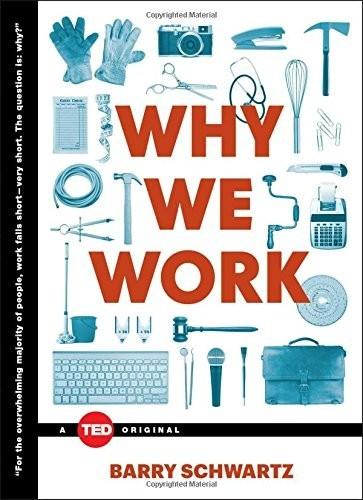
Why We Work
by
Barry Schwartz
Published 31 Aug 2015
He did not believe that “man at work” told the full story, or even the most important story, about human nature. But in the hands of Smith’s descendants, much of the nuance and subtlety was lost. More than a century later, Smith’s views about work guided the father of what came to be called the “scientific management” movement, Frederick Winslow Taylor. Taylor used meticulous time and motion studies to refine the factory, as envisioned by Smith, so that human laborers were part of a well-oiled machine. And he designed compensation schemes that pushed employees to work hard, work fast, and work accurately. Not long after that, Smith’s view was echoed in the thinking of the major figure in the psychology of the mid-twentieth century, B.
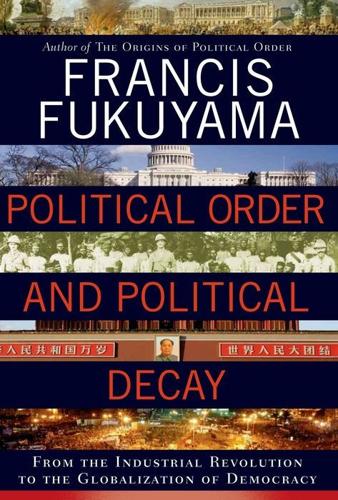
Political Order and Political Decay: From the Industrial Revolution to the Globalization of Democracy
by
Francis Fukuyama
Published 29 Sep 2014
Individuals like Dorman Eaton, Woodrow Wilson, and Frank Goodnow, author of a series of influential books on public administration, cast existing American institutions in a very negative light and suggested European models as alternatives.20 These intellectuals then organized or legitimated a series of new civil society organizations, such as the New York Municipal Research Bureau, which generated policy proposals for reform, the American Social Science Association, which made civil service reform on a “scientific” basis a top priority, and the Bar Association of the City of New York, formed in 1870 to defend the professional integrity of its members.21 They would come to invoke the principles of Frederick Winslow Taylor’s “scientific management,” an approach that was seen as the cutting edge of modern business organization, as guidelines for a revamped American public sector.22 Much as the self-interest of the reformers was a basis of their activism, there was an important ethical dimension to this struggle as well.
…
Politics was a domain of final ends subject to democratic contestation, whereas administration was a realm of implementation that could be studied empirically and subjected to scientific analysis. A similar intellectual revolution had been going on in the business world, with the rise of Frederick Winslow Taylor’s doctrine of “scientific management,” which used among other things time-and-motion studies to maximize the efficiency of factory operations. Many of the Progressive Era reformers sought to import scientific management into government, arguing that public administration could be turned into a science and protected from the irrationalities of politics.
…
Among Goodnow’s books are Comparative Administrative Law: An Analysis of the Administrative Systems, National and Local, of the United States, England, France and Germany, 2 vols. (New York: G. P. Putnam’s Sons, 1893); and Politics and Administration: A Study in Government (New York: Macmillan, 1900). 21. Skowronek, Building a New American State, p. 53; Knott and Miller, Reforming Bureaucracy, pp. 39–40. 22. Frederick Winslow Taylor, The Principles of Scientific Management (New York: Harper, 1911). See the discussion of Taylorism in Fukuyama, Trust, pp. 225–27. 23. Edmund Morris, The Rise of Theodore Roosevelt (New York: Modern Library, 2001), pp. 404–405. 24. Skowronek, Building a New American State, p. 53. 25. Robert H.

The Wisdom of Crowds
by
James Surowiecki
Published 1 Jan 2004
On an old-fashioned assembly line, it’s possible that top-down coordination was the best solution (although Toyota’s transformation of auto production suggests otherwise). But in service businesses or companies whose value depends on intellectual labor, treating workers as cogs will not work (which isn’t to say that companies won’t try). The efficiency expert Frederick Winslow Taylor, in the early 1900s, described the good worker as someone whose job was to do “just what he is told to do, and no back talk. When the [foreman] tells you to walk, you walk; when he tells you to sit down, you sit down.” This approach would fail today. Yet even as companies at least acknowledge the potential benefits of decentralization, what’s notably missing is any sense that bottom-up methods of the kind we’ve seen in this book might be useful in transforming the way companies solve cognition problems, too.
…
Sloan, My Years with General Motors (New York: Doubleday, 1964). The definitive Western account of the Toyota Production System can be found in James P. Womack, Daniel T. Jones, and Daniel Roos, The Machine That Changed the World: The Story of Lean Production (New York: HarperCollins, 1991). Keller, Rude Awakening: 101. Frederick Winslow Taylor is cited in Stephan H. Haeckel, Adaptive Enterprise (Boston: Harvard Business School Press, 1999): 30. Rakesh Khurana, Searching for a Corporate Savior (Princeton: Princeton University Press, 2002). As an example, this article claims that Chambers has “created more shareholder value” than virtually any other high-tech CEO; see http://www.edgewater.com/site/news_events/in_the_news_articles/042501_VARBusiness.html.

Utopia Is Creepy: And Other Provocations
by
Nicholas Carr
Published 5 Sep 2016
It can also measure how well they’re talking to them—by recording things like how often they make hand gestures and nod, and the energy level in their voice.” Other companies are developing Google Glass-style “smart glasses” to accomplish similar things. A little more than a century ago, Frederick Winslow Taylor introduced scientific management to American factories. By tracking and measuring the activities of workers as they went about their work, Taylor believed, companies could determine the most efficient possible routine for any job and then enforce that routine on all workers. Through the systematic collection of data, industry could be optimized, operated as a perfectly calibrated machine.
…
Never has a communications system played so many roles in our lives—or exerted such broad influence over our thoughts—as the internet does today. Yet, for all that’s been written about the net, there’s been little consideration of how, exactly, it’s reprogramming us. The net’s intellectual ethic remains obscure. ABOUT THE same time that Nietzsche started using his typewriter, an earnest young man named Frederick Winslow Taylor carried a stopwatch into the Midvale Steel plant in Philadelphia and began a historic series of experiments aimed at improving the efficiency of the plant’s machinists. With the approval of Midvale’s owners, he recruited a group of factory hands, set them to work on various metalworking machines, and recorded and timed their every movement as well as the operations of the machines.
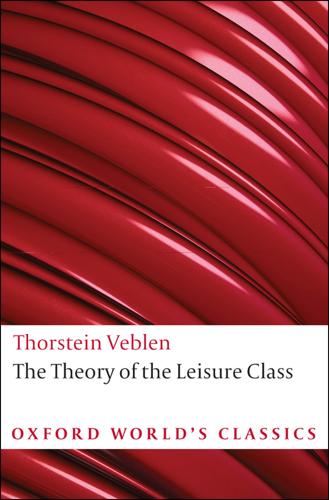
The Theory of the Leisure Class
by
Thorstein Veblen
Published 10 Oct 2007
Edith Wharton, The House of Mirth 1906–9 Teaches at Stanford University; divorced by Ellen Rolfe in 1906; dismissed from Stanford for ‘personal affairs’. 1906 Turned down for position as head librarian at the Library of Congress; rejected by Harvard University for a faculty post; dismissed by the University of Chicago over scandals involving relations with various women. 1911–18 Teaches at the University of Missouri. 1911 Frederick Winslow Taylor, The Principles of Scientific Management 1914 Marries Anne Fessenden Bradley, divorcee with two daughters; increasing problems with ill health; publication of The Instinct of Workmanship and the State of the Industrial Arts. Start of First World War between Germany and the Allies (France and Great Britain). 1915 Publication of Imperial Germany and the Industrial Revolution.
…
Further interest in Veblen came with the rise of advanced technologies in the 1930s. 26 For accounts of a group of novels that lauded the engineer and the new woman, see Martha Banta, Taylored Lives: Narrative Productions in the Age of Taylor, Veblen, and Ford (Chicago, 1993), which also treats Veblen’s relationship to methods of industrial production newly established by Frederick Winslow Taylor and Henry Ford. 27 Howells’s ‘An Opportunity for American Fiction’, First and Second Papers, Literature: An International Gazette of Criticism (New York, April and May 1899), n.p. To prove Howells’s point that the emphasis placed by American literature on the nation’s democratic ideals meant that its novelists came late to the sharp analysis of social distinctions that cleave the middle class from the leisure class, think of the earlier display in Charles Dickens’s novels with Veblenian themes: Mr Micawber’s faulty economic system that thwarts his desire to enter the genteel classes; the gold-value of Mr Boffin’s ‘dust heaps’—a euphemism for street excrement; and the place in society staked by the Veneerings through their show of masses of silver plate. 28 Lerner’s essay is reprinted in Ideas Are Weapons: The History and Uses of Ideas (New York, 1939), 138—41.
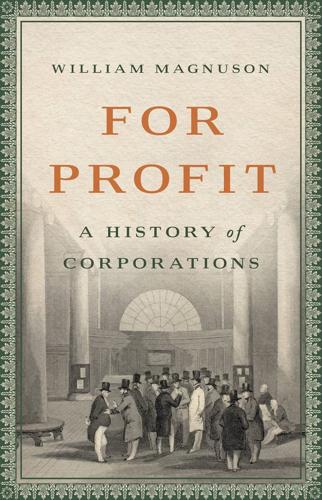
For Profit: A History of Corporations
by
William Magnuson
Published 8 Nov 2022
To the extent that corporations tried to make production more efficient, they were generally tinkering around the edges, making small improvements based on gut instinct and passed-down wisdom. But in the late 1800s, business leaders and engineers had begun to study production methods scientifically, to measure and test production processes objectively using experimentation and data. This new “scientific management” movement found its greatest proponent in Frederick Winslow Taylor, a mechanical engineer who had devoted himself to applying engineering principles to industry. Taylor believed that modern industry was woefully inefficient because it failed to use rational, testable methods for improving its systems, instead relying on instinct and rules of thumb. Taylor undertook “time studies” to understand how small changes in factory operations could improve production rates.
…
Fancy a jungle of wheels and belts and weird iron forms—of men, machinery and movement—add to it every kind of sound you can imagine; the sound of a million squirrels chirking, a million monkeys quarreling, a million lions roaring, a million pigs dying, a million elephants smashing through a forest of sheet iron, a million boys whistling on their fingers, a million others coughing with the whooping cough, a million sinners groaning as they are dragged to hell—imagine all of this happening at the very edge of Niagara Falls, with the everlasting roar of the cataract as a perpetual background, and you may acquire a vague conception of that place.24 In practice, the Ford factory was less about the triumph of machine over man and more about turning man into machine. This may have been good for production numbers, but it was decidedly unpleasant for the man. And it turned out that morale had a greater effect on efficiency than Ford had bargained for. Frederick Winslow Taylor had predicted that the assembly line would roughly double production, but in fact, the differential was much less. In 1909, the first full year that Ford manufactured the Model T and before the assembly line had been introduced, the 1,548 workers in the factory produced on average 1,059 cars a month, or 0.68 cars per worker.
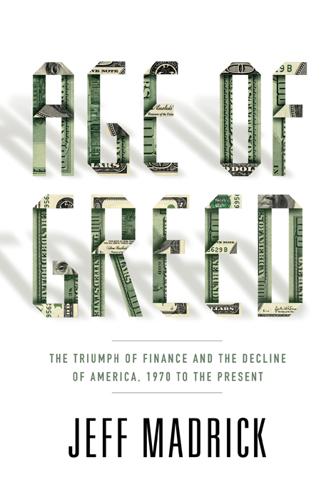
Age of Greed: The Triumph of Finance and the Decline of America, 1970 to the Present
by
Jeff Madrick
Published 11 Jun 2012
It could produce the lowest-cost products, distribute them worldwide, and market them aggressively, winning market share across the world. Costs were cut sharply through repetitive assembly-line techniques at rapid speeds, and the adoption of the so-called scientific management principles of Frederick Winslow Taylor. Taylor’s major work, The Principles of Scientific Management, had been published in 1911. Time and motion studies were Taylor’s early tools and became the butt of many a future joke, including in silent movies featuring Charlie Chaplin and Buster Keaton. Workers were cogs in a machine, and even executives were above all conformists, implementing preset formulas and directions from above.
…
Waterman, Jr., In Search of Excellence: Lessons from America’s Best-Run Companies (New York: Harper & Row, 1982), pp. 34–35; Louis Kraar, “Japan’s Automakers Shift Strategies,” Fortune, August 11, 1980, p. 109. 3 “THERE WAS SIMPLY A PROFOUND HUNGER”: Author interview with Jay Lorsch, Harvard Business School, June 2006. 4 AMERICA’S SEEMING BUSINESS FAILURE: Jean-Jacques Servan-Schreiber, The American Challenge (New York: Atheneum, 1967). 5 TAYLOR’S MAJOR WORK: Robert Kanigel, The One Best Way: Frederick Winslow Taylor and the Enigma of Efficiency (New York: Penguin, 1997). 6 IN THE PAST, THE CEOS OF MAJOR: As a twenty-four-year-old business reporter, I did my first cover story for BusinessWeek on the subject back in 1971. I did not fully anticipate the dangers of the trend I perceived. “The Rise of the Financial Man,” Business Week, September 14, 1971. 7 IF WORK COULD PROVIDE SUCH SELF-ESTEEM: Douglas McGregor, The Human Side of Enterprise (New York: McGraw-Hill, 1960). 8 “BUT THE MILITARY MODEL”: Author interview with Tom Peters, June 11, 2007. 9 GENERAL INTELLIGENCE, BCG BELIEVED: Walter Kiechel III, The Lords of Strategy: The Secret Intellectual History of the New Corporate World (Boston: Harvard Business Press, 2010), in general, pp. 13–30. 10 PETERS AND WATERMAN WERE SKEPTICAL: Tom Peters, “Tom Peters’ True Confessions,” Fast Company, November 2001. 11 “PROFESSIONALISM IN MANAGEMENT”: Peters and Waterman, In Search of Excellence, p. 29. 12 AMERICAN MANAGEMENT HAD TO GET OUT: Robert H.
…
Smith, Roger Smith Barney Social Security, itr.1, prl.1, 2.1, 2.2, 3.1, 3.2, 3.3, 7.1, 7.2, 7.3, 11.1, 11.2, 14.1, 14.2, 14.3 Sony, 8.1, 12.1, 12.2 Soros, George, 15.1, 15.2; British pounds traded by, 15.3, 15.4, 15.5, 15.6, 15.7; financial strategy of, 15.8, 15.9, 15.10, 15.11, 15.12, 19.1; hedge funds managed by, 15.13, 15.14, 15.15, 15.16, 15.17, 15.18, 15.19, 15.20, 17.1, 18.1; Hungarian background of, 15.21, 15.22, 15.23; inside information and, 15.24, 15.25, 15.26, 15.27; legal problems of, 15.28, 15.29, 15.30; in London, 15.31, 15.32; philanthropy of, x–xi, 15.33, 15.34; political views of, 15.35, 15.36; profits of, 15.37, 15.38, 15.39; reputation of, x–xi, 15.40, 15.41, 15.42, 15.43; risk assumed by, 15.44, 15.45, 15.46; SEC investigation of, 15.47; in stock arbitrage, 15.48, 15.49, 15.50, 15.51, 15.52; wealth of, x–xi, 15.53, 15.54, 15.55, 15.56, 15.57 Soros, Tivadar, 15.1, 15.2, 15.3 Soros Fund South America, 3.1, 6.1, 6.2, 6.3, 6.4, 8.1, 11.1, 16.1, 19.1 Southern Democrats, 3.1, 10.1, 11.1 Soviet Union, prl.1, prl.2, prl.3, 3.1, 3.2, 7.1, 7.2, 7.3, 11.1, 15.1, 19.1 Spector, Warren speculation, 1.1, 1.2, 2.1, 2.2, 4.1, 6.1, 11.1, 12.1, 14.1, 14.2, 14.3, 14.4, 15.1, 15.2, 15.3, 15.4, 16.1, 17.1, 17.2, 17.3, 18.1, 18.2, 18.3, 19.1, 19.2, 19.3, 19.4, 19.5, 19.6, 19.7 Spencer, Herbert Sperling, Gene Spiegel, Thomas, 13.1, 13.2, 13.3 Spielberg, Steven Spitzer, Eliot, 15.1, 16.1, 17.1, 17.2, 19.1 spreads, 1.1, 13.1, 19.1, 19.2, 19.3 Sprinkel, Beryl stagflation, 2.1, 2.2, 3.1, 3.2, 15.1 Standard & Poor’s 500, 1.1, 3.1, 4.1, 6.1, 6.2, 12.1, 15.1, 15.2, 15.3, 16.1, 17.1, 17.2, 19.1, 19.2 Standard Oil of California (Socal), 13.1, 13.2 Steagall, Henry Bascom Stein, Herbert, 2.1, 3.1, 3.2, 3.3, 3.4, 3.5, 3.6, 3.7, 10.1, 14.1, 19.1 Stein, Jules, 7.1, 7.2 Steinberg, Saul, 13.1, 16.1 Steinhardt, Michael, 15.1, 15.2, 15.3, 15.4 Stevenson, Adlai Stewart, James Stigler, George, 2.1, 2.2, 7.1 Stockman, David stock market, 1.1, 1.2, 1.3, 1.4, 1.5, 1.6, 1.7, 2.1, 2.2, 3.1, 3.2, 3.3, 3.4, 4.1, 6.1, 9.1, 11.1, 12.1, 12.2, 13.1, 14.1, 14.2, 14.3, 14.4, 14.5, 14.6, 14.7, 15.1, 16.1, 19.1 stock market crash (1929) stock market crash (1987), 11.1, 14.1, 14.2, 15.1, 16.1, 16.2, 16.3, 18.1, 19.1 stock market crash (2000), 14.1, 17.1, 18.1, 19.1 stock options, 1.1, 5.1, 12.1, 12.2, 13.1, 15.1, 16.1, 17.1, 18.1, 18.2, 19.1 stock parking stock portfolios, 4.1, 6.1, 15.1, 15.2, 16.1, 19.1, 19.2, 19.3 stock prices, 4.1, 4.2, 4.3, 4.4, 5.1, 5.2, 6.1, 6.2, 6.3, 8.1, 8.2, 11.1, 12.1, 12.2, 12.3, 12.4, 12.5, 12.6, 12.7, 12.8, 12.9, 13.1, 13.2, 13.3, 13.4, 13.5, 14.1, 15.1, 15.2, 15.3, 15.4, 15.5, 15.6, 15.7, 15.8, 15.9, 16.1, 16.2, 16.3, 16.4, 17.1, 17.2, 17.3, 17.4, 17.5, 17.6, 17.7, 17.8, 17.9, 17.10, 18.1, 18.2, 18.3, 19.1, 19.2, 19.3, 19.4, 19.5 Stone, Amey Storer Communications, 13.1, 13.2 Strauss, Robert structured investment vehicles (SIVs) subprime mortgages, 12.1, 14.1, 16.1, 18.1, 19.1, 19.2, 19.3, 19.4 Sullivan, Scott Summers, Lawrence, 14.1, 14.2, 14.3, 16.1 supply and demand, 2.1, 2.2, 2.3, 3.1 supply-side economics, 6.1, 10.1, 11.1 Supreme Court, U.S., prl.1, prl.2, 3.1, 7.1, 10.1, 17.1 swaps, 16.1, 17.1, 17.2, 19.1 Sword, William, 4.1, 4.2 Taft, Robert takeovers, corporate, 4.1, 4.2, 8.1, 11.1, 12.1, 12.2, 12.3, 12.4, 13.1, 13.2, 13.3, 13.4, 14.1, 14.2, 15.1, 16.1, 16.2, 16.3, 17.1, 19.1 Tannin, Matthew, 19.1, 19.2, 19.3, 19.4 taxation: brackets for, 3.1, 9.1, 10.1, 10.2, 11.1, 11.2; capital gains, 14.1; corporate, 9.2, 9.3, 14.2, 15.1, 15.2, 17.1, 17.2, 18.1, 18.2; credits for, 2.1, 3.2, 9.4, 9.5; cuts in, prl.1, 2.2, 3.3, 3.4, 3.5, 3.6, 3.7, 3.8, 6.1, 7.1, 7.2, 9.6, 9.7, 9.8, 10.3, 11.3, 11.4, 11.5, 11.6, 11.7, 14.3, 14.4, 19.1; deductions for, 9.9, 9.10, 14.5, 17.3, 18.3, 18.4; increases in, 3.9, 14.6, 14.7, 14.8; interest equalization, 11.8, 15.3; “negative income,” 42, 2.3; payroll, 3.10, 11.9, 14.9; personal income, ix–x, prl.1, prl.2, prl.1, 2.4, 2.5, 2.6, 3.11, 7.3, 7.4, 7.5, 7.6, 7.7, 7.8, 7.9, 10.4, 10.5, 10.6, 11.10, 11.11, 11.12, 11.13, 14.10, 14.11, 14.12, 19.2; populist revolt against, ix–x, prl.1, 7.10, 10.7; progressive, itr.1, prl.1, prl.2, prl.3, 2.7, 2.8, 2.9, 19.3; property, prl.1, 7.11, 10.8; regressive, 11.14, 14.13; revenues from, 3.12, 6.2, 10.9, 11.15, 14.14, 14.15, 19.4; shelters from, 15.4, 15.5 Tax Reduction Task Force Tax Reform Act (1986) Taylor, Frederick Winslow Taylor, Robert technology, x, 1.1, 2.1, 2.2, 4.1, 8.1, 8.2, 8.3, 12.1, 14.1, 14.2, 14.3, 15.1, 15.2, 15.3, 15.4, 16.1, 17.1, 17.2, 17.3, 17.4, 17.5, 17.6, 17.7, 17.8, 17.9, 17.10, 18.1, 18.2, 19.1, 19.2, 19.3, 19.4; see also computers TED spreads, 19.1, 19.2, 19.3 Tele-Communications, 8.1, 8.2, 12.1 Telecommunications Act (1996) telecommunications industry, 4.1, 8.1, 8.2, 17.1, 17.2, 17.3, 17.4, 19.1, 19.2 television, 2.1, 2.2, 3.1, 7.1, 7.2, 8.1, 8.2, 10.1, 12.1, 12.2, 12.3, 12.4, 12.5, 13.1, 13.2, 17.1, 17.2, 17.3 Tenenbaum, L.
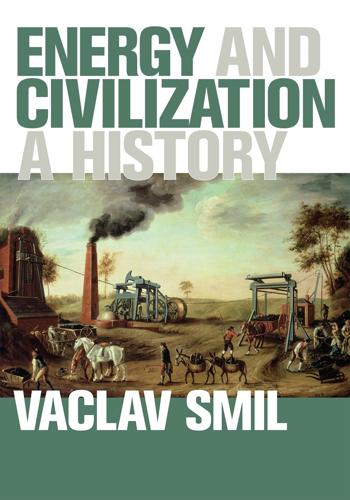
Energy and Civilization: A History
by
Vaclav Smil
Published 11 May 2017
But even as the importance of human labor was declining, new systematic studies of individual tasks and complete factory processes demonstrated that labor productivity could be greatly increased by optimizing, rearranging, and standardizing muscular activities. Frederick Winslow Taylor (1856–1915) was the pioneer of such studies. Starting in 1880 he spent 26 years quantifying all key variables involved in steel cutting, reduced his findings to a simple set of slide-rule calculations, and drew general conclusions for efficiency management in The Principles of Scientific Management (Taylor 1911); a century later its lessons continue to guide some of the world’s most successful makers of consumer products (box 6.3). Box 6.3 From experiments with steel cutting to Japan’s car exports Frederick Winslow Taylor’s main concern was with wasted labor, that is, with the inefficient use of energy—those “awkward, inefficient, or ill-directed movements of men” that “leave nothing visible or tangible behind them”—and argued for optimized physical exertion.
…
Power to the People: Energy in Europe over the Last Five Centuries. Princeton, NJ: Princeton University Press. Kander, A., and P. Warde. 2011. Energy availability from livestock and agricultural productivity in Europe, 1815–1913: A new comparison. The Economic History Review 64:1–29. Kanigel, R. 1997. The One Best Way: Frederick Winslow Taylor and the Enigma of Efficiency. New York: Viking. Kaplan, D. 2000. The darker side of the “Original Affluent Society.” Journal of Anthropological Research 56:301–324. Karim, M. R., and M. S. H. Fatt. 2005. Impact of the Boeing 767 aircraft into the World Trade Center. Journal of Engineering Mechanics 131:1066–1072.

User Friendly: How the Hidden Rules of Design Are Changing the Way We Live, Work & Play
by
Cliff Kuang
and
Robert Fabricant
Published 7 Nov 2019
Frederick and her peers, such as Mary Pattison, had an ingenious answer to the problem of resolving the persistent drudgery of maintaining a home, and the promise of greater freedoms: Create more free time. For those first-wave feminists, home economics was about fostering more efficient housework so that women could pursue more “individuality and independence”—the chance to be more fulfilled, more influential. The era’s undisputed master of time-saving was Frederick Winslow Taylor, whose school of “scientific management” advocated watching every action on a factory floor for wasted seconds. Henry Ford was one of his early devotees; Christine Frederick was another. In Taylor’s ideas, Frederick saw a way to connect women’s work to broader notions about modern progress—and a way to boost how society valued a woman’s labor.
…
Peter Behrens, considered by many to be the first modern industrial designer, recognized the power of design to make these devices iconic, delightful, and easy to use, informing the Bauhaus’s later faith in the promise of modern industry. 1909: SELFRIDGE DEPARTMENT STORE, Harry Gordon Selfridge Selfridge was the first department store to move products out from under the counter and onto open shelving where customers could touch and feel them directly, without asking for a shopkeeper’s help. 1911: THE PRINCIPLES OF SCIENTIFIC MANAGEMENT, Frederick Winslow Taylor Taylor’s rigorous observation of factory worker efficiency led to a focus on ergonomics and usability to minimize wasted effort and boost productivity. His time-saving approach was based on optimizing human behavior to suit the capabilities of the machines before them and to minimize human error. 1915: FORD ASSEMBLY LINE, Henry Ford The Ford assembly line was the definitive application of Taylor’s principles of scientific management.
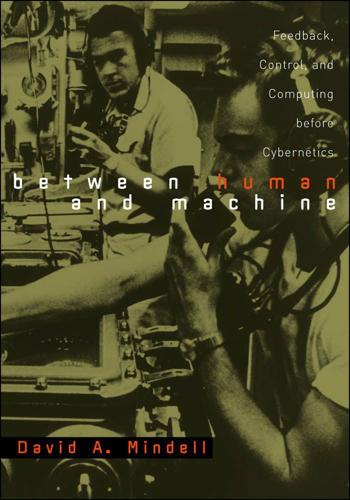
Between Human and Machine: Feedback, Control, and Computing Before Cybernetics
by
David A. Mindell
Published 10 Oct 2002
The French physiologist and photographer Etienne-Jules Marey studied physiology with paper traces and photographic sequences, defining a modernist image of the body as a mechanism, recordable and calculable with the techniques of natural science. Marey, and other scientists like him, saw in automatic instruments a “mechanical objectivity” that recorded the world exactly as it was, without human intervention. The management consultant Frederick Winslow Taylor sought to rationalize human work by redesigning both machines and bodily movement for a better match. Henry Ford’s engineers reoriented their factory around a moving line, mechanizing workers’ actions as well as material flows. World War I brought people and machines into still other disquieting combinations as machine guns, tanks, aircraft, and even prosthetic limbs blurred the lines between organism and machine. 16 In the early decades of the twentieth century engineers drew on these and related phenomena as they began to think deeply about control, communications, and human-machine interaction.
…
“Spike” Blandy, a 1913 Naval Academy graduate, had excellent gun club credentials: he had done postgraduate work in ordnance and had served as gunnery officer on the battleship New Mexico , which had one of the original Ford Rangekeepers, and also aboard the West Virginia , which had a new G.E. system. He had even spent time observing production at the Midvale Steel Company, where Frederick Winslow Taylor did his pioneering work in scientific management. Blandy pushed computers as replacements for manual plotting, argued for innovations in training, and won his ships numerous gunnery trophies. 31 Ironically, in 1938 Blandy saw the future of naval warfare while serving as commander of one of the oldest battleships in the fleet, the USS Utah .
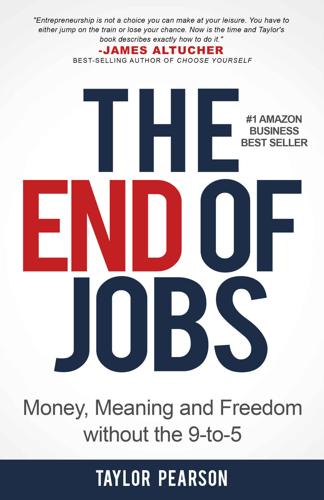
The End of Jobs: Money, Meaning and Freedom Without the 9-To-5
by
Taylor Pearson
Published 27 Jun 2015
I’ve talked to people in China that have seen it happen. The technologies that we now take for granted were incredibly difficult to develop the first go around. Before the 20th century, the discipline of management, managing people, as we understand it today, was non-existent. The father of management, Frederick Winslow Taylor, was credited by later famed management consultant Peter Drucker for having created “the tremendous surge of affluence in the last seventy-five years which has lifted the working masses in the developed countries well above any level recorded, even for the well-to-do.”11 Winslow Taylor’s scientific management consisted of replacing rule-of-thumb methods with a scientific method—applying scientific efficiency to tasks, the selection of employees, the supervisions of each worker, and division of work.
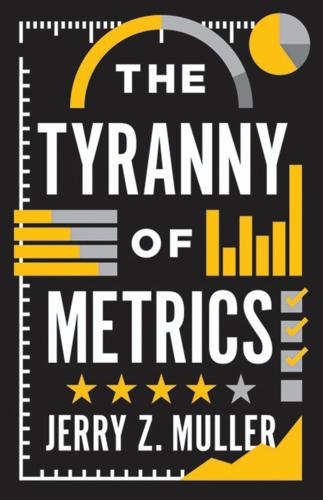
The Tyranny of Metrics
by
Jerry Z. Muller
Published 23 Jan 2018
In 1911, Simon Patten, an influential professor of economics at the Wharton School of Business, demanded that schools provide evidence of their contribution to society by showing results that could be “readily seen and measured.”8 Other would-be reformers sought to bring to the school system the fruits of the industrial efficiency movement, founded by Frederick Winslow Taylor, an American engineer who coined the term “scientific management” in 1911.9 Taylor analyzed the production of pig iron in factories by breaking down the process into its component parts (through time-and-motion studies) and determining standard levels of output for each job. Workers who carried out their tasks more slowly than the prescribed time were paid at a lower rate per unit of output; those who met the expectation were rewarded at a higher rate.
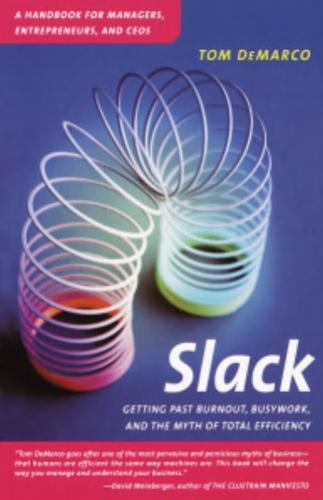
Slack: Getting Past Burnout, Busywork, and the Myth of Total Efficiency
by
Tom Demarco
Published 15 Nov 2001
So a company that extrudes aluminum moldings, for example, would certainly want to adopt a standard way to run all its extrusion stations, regardless of which of the many different molding patterns is being extruded at each one. This standardization of manufacturing process was the particular interest of an early-twentieth-century mechanical engineer named Frederick Winslow Taylor. His 1911 book, The Principles of Scientific Management, set out to do for the human aspect of factory work what the principle of interchangeable parts had done for rifles half a century earlier. Taylorism called for rigorous standardization of manual factory activity so that the human pieces of the process would be as interchangeable as the parts of the products.

To Serve God and Wal-Mart: The Making of Christian Free Enterprise
by
Bethany Moreton
Published 15 May 2009
Since the initial military-Â�inspired breakthroughs of Taylorization at the turn of the twentieth century, reÂ�finements on sciÂ�enÂ�tific management had proceeded from the analogy between a worker and a machine. The regime of mass production valued human effort in proportion to its efÂ�fiÂ�ciency and predictability. “Schmidt,” Frederick Winslow Taylor’s pseudonym for the “first-Â�class laborer,” embodied this breakthrough in the 1911 ur-Â�text of sciÂ�enÂ�tific management: “He worked when he was told to work, and rested when he was told to rest,” limned Taylor in the cadences of Genesis, “and at half-Â�past five in the afternoon had his 47½ tons [of pig iron] loaded on the car.”28 Taylor understood his system as a branch of mechanical engineering, a logical extension of€the machine itself.29 As the ruling machines of the American workplace changed, so the analogy changed with them.
…
today; see Dunnett and Arnold, “Falling Prices, Happy Faces,” 83; Barbara Ehrenreich, Nickel and Dimed: On (Not) Getting By in America (New York: Metropolitan Books, 2001), 157. “Promise,” 122. Don M. Frick, Robert K. Greenleaf: A Life of Servant Leadership (San Francisco: Berrett-Koehler Publishers, 2004), 293. Frederick Winslow Taylor, The Principles of Scientific Management (New York: W.W. Norton, 1967), 47. Daniel Nelson, Managers and Workers: Origins of the New Factory System in the United States, 1880–1920 (Madison: University of Wisconsin Press, 1975), 65. Herbert A. Simon, quoted in Stephen P. Waring, Taylorism Transformed: Scientific Management Theory Since 1945 (Chapel Hill: University of North Carolina Press, 1991), 66.
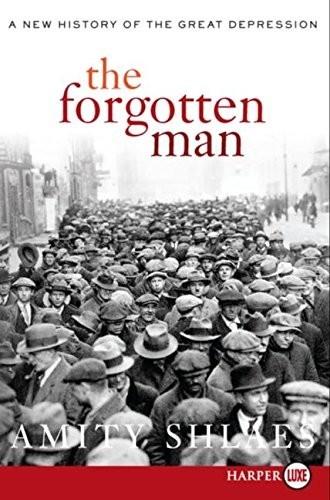
The Forgotten Man
by
Amity Shlaes
Published 25 Jun 2007
Coolidge had long ago determined that the world would do better if he involved himself less. Finally, there was a difference in temperament. Hoover strewed around phrases about individuality, but he could not control his own sense of agency. He was by personality an intervener; he liked to jump in, and find a moral justification for doing so later. People like Frederick Winslow Taylor, the great efficiency expert, and Herbert Hoover, the great engineer, had done so well in the private sector. Bringing some of them into government might allow some of that knowledge to rub off. Coolidge by contrast believed that the work of life lay in holding back and shutting out. He conducted his official life according to his own version of the doctor’s Hippocratic Oath—first, do no harm.
…
Barrett. New York: Oxford University Press, 2003. Jeansonne, Glen. Gerald L. K. Smith: Minister of Hate. Baton Rouge: Louisiana State University Press, 1997. Joslin, Theodore G. Hoover off the Record, 1934. Garden City, N.Y.: Doubleday, Doran, 1937. Kanigel, Robert. The One Best Way: Frederick Winslow Taylor and the Enigma of Efficiency. New York: Penguin, 1997. Kindleberger, Charles P. The World in Depression: 1929–1939, revised edition. Berkeley: University of California Press, 1986. Kirk, Russell, ed. The Portable Conservative Reader. New York: Penguin, 1996. Klein, Maury. Rainbow’s End: The Crash of 1929.

More: The 10,000-Year Rise of the World Economy
by
Philip Coggan
Published 6 Feb 2020
The raw material had to be brought in at one end (or on one floor) of the factory and the finished product taken out at another. The workers had to be trained and divided according to their specialised tasks. As industry developed, these tasks became too complex for the original founders (or their families) to oversee. Frederick Winslow Taylor was a consultant who pioneered “scientific” management. He spent 26 years watching people at work, particularly in the steel industry, armed with a stopwatch and a notepad, and observing what they did. That led him to break down tasks into a number of specific actions, train workers to take such actions, and reward them for meeting their targets.
…
Source: https://www.ranker.com/list/life-in-steel-producing-pittsburgh/nicole-sivens 20. Quote taken from “The Steel Business”, https://www.pbs.org/wgbh/americanexperience/features/carnegie-steel-business/ 21. Peter Krass. Carnegie. Carnegie was also ruthless in dealing with strikers, as we shall see in Chapter 9. In later life, he became a noted philanthropist. 22. “Frederick Winslow Taylor, Guru”, The Economist, February 6th 2009 23. Quoted in Emily Guendelsberger, On the Clock: What Low-Wage Work Did to Me and How It Drives America Insane 24. Richard Donkin, Blood, Sweat & Tears: The Evolution of Work 25. “Lean production”, The Economist, October 19th, 2009 26. Oya Celasun and Bertrand Gruss, “The declining share of industrial jobs”, May 25th 2018, https://voxeu.org/article/declining-share-manufacturing-jobs 27.

Coders: The Making of a New Tribe and the Remaking of the World
by
Clive Thompson
Published 26 Mar 2019
And nearly any form of mechanic bridles at any sort of waste and friction in a system. I once had a mechanical-engineer neighbor who repaired motorcycles; if he heard the tiniest unexpected noise coming from the engine, he’d tear it apart to hunt down and eliminate its source. (“Noise,” he intoned soberly, “is wasted energy.”) Frederick Winslow Taylor—the inventor of “Taylorism”—inveighed against the “awkward, inefficient or ill-directed movements of men,” arguing that workers’ movements ought to be carefully prescribed to ensure maximum output. His colleague Frank Gilbreth obsessed over wasted movements in everything from bricklaying to vest buttoning, while his engineer wife designed kitchens as such that the number of steps in making a strawberry shortcake was reduced “from 281 to 45,” as Better Homes Manual enthused.
…
“simultaneously wholesome and insane”: Jennifer Brostrom, “The Time-management Gospel,” in Commodify Your Dissent: Salvos from the Baffler, eds. Thomas Frank and Matt Weiland (New York: W. W. Norton, 2011), 116. Charles Hermany from 1904: “Address of President Charles Hermany,” Transactions of the American Society of Civil Engineers 53 (1904): 464. to ensure maximum output: Frederick Winslow Taylor, The Principles of Scientific Management (New York: Harper & Brothers, 1919), 5; David A. Hounshell, “The Same Old Principles in the New Manufacturing,” Harvard Business Review (November 1988), accessed online August 18, 2018, https://hbr.org/1988/11/the-same-old-principles-in-the-new-manufacturing.
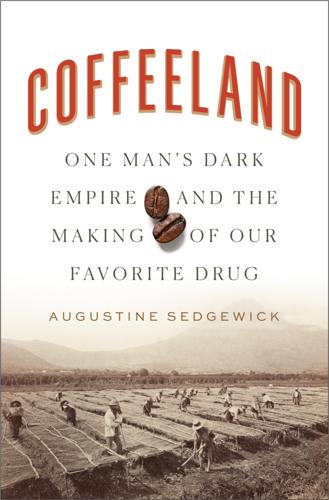
Coffeeland: One Man's Dark Empire and the Making of Our Favorite Drug
by
Augustine Sedgewick
Published 6 Apr 2020
Smith was in the calorimeter, laboring over German treatises on physics to understand the laws his body could not help following, he had only water and milk to drink. Atwater’s reservations about coffee were shared by the other pioneering Gilded Age inspector of the human body at work, Frederick Winslow Taylor. In the decades around the turn of the twentieth century, factory mechanization, artificial lighting, and standardized clock time made the physiological limits of the human body at work look like the last great obstacle to unbounded industrial productivity, and an urgent problem to be solved.
…
In April 1930 representatives of Central American coffee countries met in Guatemala City with the idea of organizing warehouses on the model of Brazil’s, where coffee could be stored until prices recovered and it could be sold “under more favorable conditions.” The mild-coffee congress also proposed advertising Central American coffee in the United States and Europe, and hiring experts who would analyze coffee plantations and mills according to the principles Frederick Winslow Taylor had applied in factories in the United States.5 Yet this congress had no power to do anything more substantial than make recommendations, and no saving cartel took form. There were obstacles at home, too. After customs inspector W. W. Renwick was informed of the creation of the Salvadoran coffee defense plan, he delivered some unwelcome news to James Hill and his fellow planters.

Animal Spirits: The American Pursuit of Vitality From Camp Meeting to Wall Street
by
Jackson Lears
He redefined time as “duration,” observing, “Real duration is that duration which gnaws on things, and leaves on them the mark of its tooth … We do not think real time. But we live it, because life transcends intellect.” Such conceptions seemed to set him against the quantitative imperatives of industrial capitalism—the “standard time” introduced by the railroads, the “scientific management” promoted by Frederick Winslow Taylor. Indeed, Bergson’s very definition of “the comic” in his book on laughter was the “idea of regulating life as a matter of business routine … something mechanical encrusted upon the living.” He was, in effect, the anti-Taylor. Bergson’s notion of duration fed into a sense of experience as flow, which in turn informed his fluid vision of creative evolution—a process not governed by mechanical determinism (as Darwin’s popularizers had claimed), but animated from within by an élan vital.
…
speculative capitalism, see capitalism; stock market Spencer, Archibald spirit, as term Spiritualism Spivak, Gayatri sports; speculation as starvation statistics; God found in; Keynes on; probability theory and; public policy and, see technocratic rationality; see also quantitative thinking Steffens, Lincoln Stein, Gertrude Sterne, Laurence Stevenson, Robert Louis Stewart, Dugald Stimson, Henry stock market; animal spirits in; attempts to quantify; bonds and; confidence and; condemnation of; credit and; gambling and; manipulation of; regulation of; tickers for; see also boom and bust cycles; capitalism Stone, I. F. Strachey, James Strachey, Lytton Strategic Defense Initiative strategic essentialism Strong, George Templeton Stubbs, John “Superman Comes to the Supermarket” (Mailer) surveillance state Swift, Jonathan Talbott, Strobe “Ta-Ra-Ra Boom-De-Ay” Tarbell, Ida Taylor, Frederick Winslow Taylor, John Taylor, Telford Tchaikovsky, Pyotr Ilyich technocratic rationality; as countercultural; countercultural rejection of; ecological animism as antidote to; in economics; Kinsey’s studies as; liberals and; objectivity and; reason vs.; technology vs.; war justified by; see also quantitative thinking techno-futurism Tempest, The (Shakespeare) Temple, Shirley Tess of the D’Urbervilles (Hardy) theater Theory of Moral Sentiments (Smith) Thomas, Keith Thompson, Anita Thomson, William Thought-Force in Business and Everyday Life (Atkinson) Thoughts Are Things (Mulford) Thurmond, W.

Blood in the Machine: The Origins of the Rebellion Against Big Tech
by
Brian Merchant
Published 25 Sep 2023
Factories have been the dominant means of producing goods and organizing work ever since, and their owners have spent the last two centuries trying to make them as efficient as possible. By the twentieth century, those owners believed they had it down to a science. “In the early 1900s, business efficiency strategists like Frederick Winslow Taylor and Frank and Lillian Gilbreth used film and photography to study human movement to measure and reduce the time it took to do tasks,” notes the architectural historian Saima Akhtar. “The Gilbreths attached small bulbs to workers’ fingertips and used slow-motion photographs to capture streaks of light that would help engineer a shorter, faster way to move from point A to B.
…
Like Jeff Bezos A line can be drawn back from Jeff Bezos and Amazon, whose warehouses are laboratories for advancing new technologies to discipline workers for maximum productivity; through the big auto manufacturers’ automated car plants of the 1960s, which demanded workers become freshly subservient to heavy machinery; to the scientific management theories of Frederick Winslow Taylor in the 1910s, when he timed workers with a stopwatch to ensure they were meeting productivity standards; to the textile factories of the Industrial Revolution in the 1800s, and to Arkwright, where the model saw its most successful case study. 11. compared to the previous engine The Newcomen was the previously dominant steam engine, but was too inefficient to be widely affordable. 12.
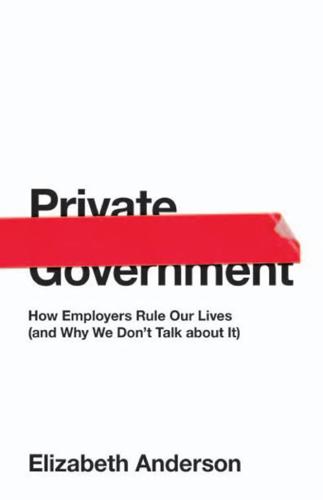
Private Government: How Employers Rule Our Lives (And Why We Don't Talk About It)
by
Elizabeth S. Anderson
Published 22 May 2017
Of course, to the extent that the patriarchal family was itself a little firm, or to the extent that the operation was just a sweatshop in what was also a place of residence, there was government even in the tenements. For the required contrast, we have to imagine that piecework, perhaps contrary to fact, wasn’t like this. This makes the thought experiment no longer so “natural.” 4. Frederick Winslow Taylor, The Principles of Scientific Management (New York and London: Harper & Brothers, 1911). 5. R. H. Coase, “The Nature of the Firm,” Economica 4 (1937): 386–405. 6. Granted, this worry may not be limited to the firm. A monopsonist might threaten to refuse to do business with an independent artisan, unless he votes for his candidate.
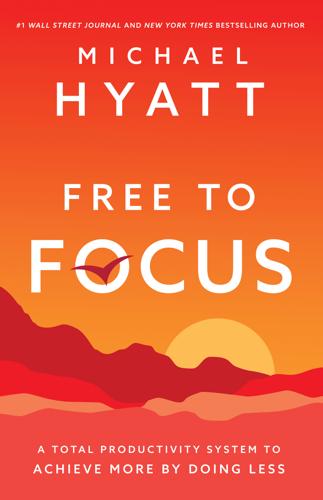
Free to Focus: A Total Productivity System to Achieve More by Doing Less
by
Michael Hyatt
Published 8 Apr 2019
This is usually based on the assumption that working faster is inherently better. This easily gets us into trouble, though, because I think people try to work faster just so they can cram even more things into their already-packed day. Productivity as a concept emerged from the work of efficiency experts such as Frederick Winslow Taylor in the late nineteenth and early twentieth centuries. Applying an engineering background to factory workers, Taylor identified ways to boost efficiency—normally by reducing, even eliminating, workers’ autonomy. “The system must come first,” he said, and it would have to be “enforced” by management.1 Taylor instructed managers to dictate workers’ methods and routines down to the tiniest details, eliminating any waste or drag.
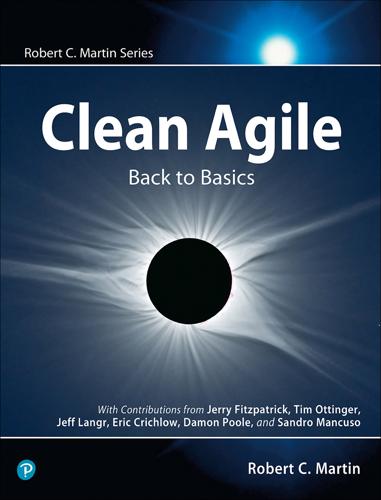
Clean Agile: Back to Basics
by
Robert C. Martin
Published 13 Oct 2019
Scientific Management is probably as old as the pyramids, Stonehenge, or any of the other great works of ancient times, because it is impossible to believe that such works could have been created without it. Again, the idea of repeating a successful process is just too intuitive, and human, to be considered some kind of a revolution. Scientific Management got its name from the works of Frederick Winslow Taylor in the 1880s. Taylor formalized and commercialized the approach and made his fortune as a management consultant. The technique was wildly successful and led to massive increases in efficiency and productivity during the decades that followed. And so it was that in 1970 the software world was at the crossroads of these two opposing techniques.
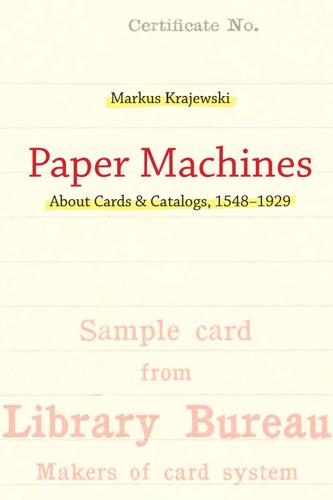
Paper Machines: About Cards & Catalogs, 1548-1929
by
Markus Krajewski
and
Peter Krapp
Published 18 Aug 2011
In the German Reich, this is reflected in the test for index cards as a catalog technology when, in 1914, they replace the bound catalog of the Royal Library in Berlin to collect and order everything by objective keywords.1 Even before the war, Ostwald’s energetic economy2 connects with the adoption after 1913 of scientific management as pioneered by Frederick Winslow Taylor, particularly by his German translator Rudolf Roesler.3 Roesler emphasizes that both proposals “are applicable with the same right and with the same success to all areas of human activity.”4 The central point of their interaction and mutual reinforcement lies in the search for efficiency, for increased achievement.
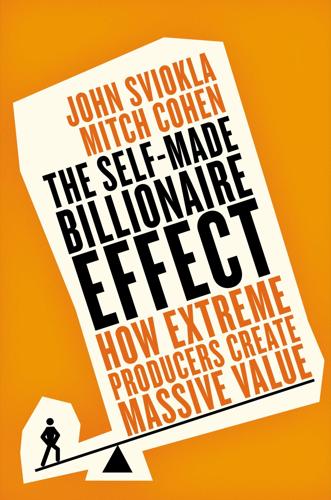
The Self-Made Billionaire Effect: How Extreme Producers Create Massive Value
by
John Sviokla
and
Mitch Cohen
Published 30 Dec 2014
Armed with a chronometer, sea captains could now navigate with more accuracy, avoid dangerous routes, and effectively decrease the length of their journeys. Harrison’s invention changed the business of seafaring—and set the British on a path to extreme value creation in trade. Fast-forward nearly two hundred years and Frederick Winslow Taylor, the father of scientific management, was using time and motion studies to develop ideas to help businesses improve their productivity. Time measurement also made possible the digital computer, which samples itself billions of times a second and records its data through binary impulses—on or off—within a defined window of time.
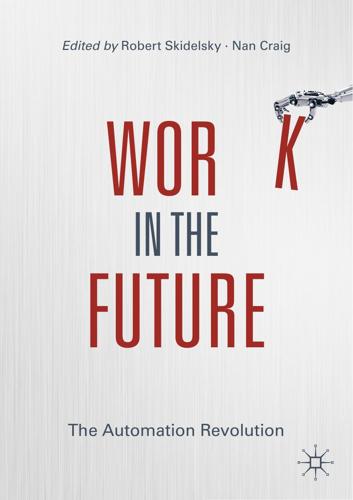
Work in the Future The Automation Revolution-Palgrave MacMillan (2019)
by
Robert Skidelsky Nan Craig
Published 15 Mar 2020
Donkin system did, however, offer an alternative to what had hitherto been viewed by slave-owners as unchallengeable custom and practice. With slavery abolished, the stage had been set for a line of organisational thinkers and managers. To single out a single individual is arguably subjective because this thinking, like the technology in which it is immersed, has a traceable progression of notable contributions. When Frederick Winslow Taylor outlined his ideas on piece-work based on time and motion studies of production workers, he relied on the recent invention of a stopwatch that could measure elapsed time for more than one minute. Without this invention, without his acquisition of such a watch in Switzerland, industry may have waited longer for his “time and motion” studies involving the systematic breaking down of work in to its constituent parts, a practice he called scientific management.
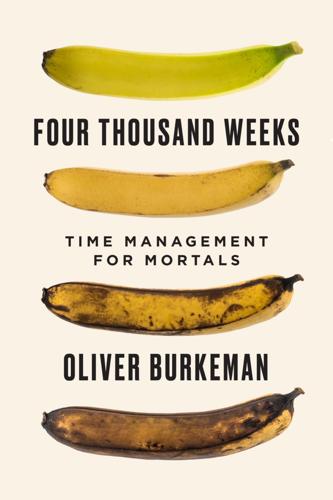
Four Thousand Weeks: Time Management for Mortals
by
Oliver Burkeman
Published 9 Aug 2021
The historian Clive Foss has described the nightmare that transpired when the leadership of the Soviet Union, gripped by the desire to transform the nation into one blazingly efficient machine, set out to reengineer time itself. The Soviets had long been inspired by the work of the efficiency expert Frederick Winslow Taylor, whose philosophy of “scientific management” had aimed to squeeze the maximum possible output from American factory workers. But now Josef Stalin’s chief economist, Yuri Larin, concocted what seems in hindsight like a ludicrously ambitious plan to keep Soviet factories running every day of the year, with no breaks.

McMindfulness: How Mindfulness Became the New Capitalist Spirituality
by
Ronald Purser
Published 8 Jul 2019
Another Corporate Fad Although corporate mindfulness courses are marketed as radically new, they share many of the goals of earlier management science fads. These programs can be viewed as an evolutionary adaptation of a corporate mythology that began in the early twentieth century with Frederick Winslow Taylor, whose “scientific” principles of management were literally touted as a “mental revolution.”18 Taylor’s industrial engineering method stripped workers of their monopoly on the knowledge of production by standardizing and fractionating tasks, thereby maximizing worker efficiency while reducing autonomy and potential subversion.
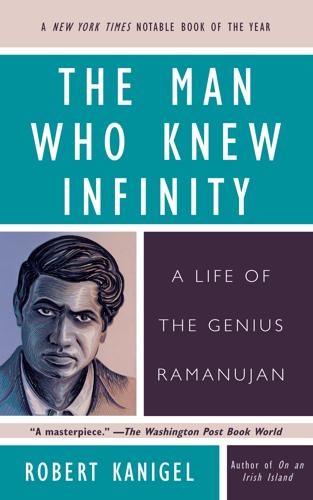
The Man Who Knew Infinity: A Life of the Genius Ramanujan
by
Robert Kanigel
Published 25 Apr 2016
Master and Fellows of Trinity College, Cambridge A photo taken in 1941, snapped by someone from The Picture Post, as Hardy watched a rugby game between Cambridge and Oxford. He was 64 years old—and after a seemingly endless youth, looked it. Master and Fellows of Trinity College, Cambridge Photo by Aaron Levin ROBERT KANIGEL, winner of the Grady-Stack Award for science writing, is also author of The One Best Way: Frederick Winslow Taylor and the Enigma of Efficiency, Apprentice to Genius: The Making of a Scientific Dynasty, and High Season: How One French Riviera Town Has Seduced Travelers for Two Thousand Years. THE MAN WHO KNEW INFINITY was one of five finalists for the 1991 Los Angeles Times Book Award in the Science category.
…
He is a professor of science writing at MIT, where he directs the Graduate Program in Science Writing. He has also taught at the University of Baltimore’s Yale Gordon College of Liberal Arts and at Johns Hopkins University. He lives in Cambridge, Massachusetts. Also by Robert Kanigel APPRENTICE TO GENIUS: The Making of a Scientific Dynasty THE ONE BEST WAY: Frederick Winslow Taylor and the Enigma of Efficiency HIGH SEASON: How One French Riviera Town Has Seduced Travelers for Two Thousand Years We hope you enjoyed reading this Washington Square Press eBook. * * * Join our mailing list and get updates on new releases, deals, bonus content and other great books from Washington Square Press and Simon & Schuster.
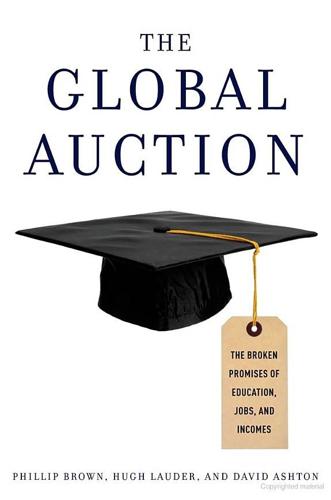
The Global Auction: The Broken Promises of Education, Jobs, and Incomes
by
Phillip Brown
,
Hugh Lauder
and
David Ashton
Published 3 Nov 2010
Taylor, Principles of Scientific Management (New York: Harper and Brothers, 1911), chap. 2, p. 6. http://www.archive.org/details/ principlesofscie00taylrich. Peter Drucker argues, “Few figures in intellectual history have had greater impact than Taylor. And few have been so willfully misunderstood and so assiduously misquoted.” Drucker, Post-Capitalist Society, 31. See Robert Kanigel, The One Best Way: Frederick Winslow Taylor and the Enigma of Efficiency (London: Abacus 1997), 9. Frederick W. Taylor quoted in Robert Kanigel, The One Best Way, 473. Frederick W. Taylor, The Principles of Scientific Management, chap. 2, p. 4. http:// www.archive.org/details/principlesofscie00taylrich Ibid., 2. http://www.archive.org/details/principlesofscie00taylrich See Kanigel, The One Best Way, 460.
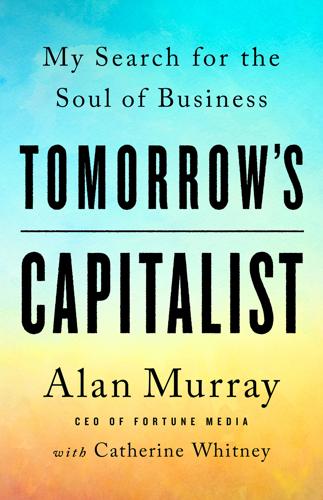
Tomorrow's Capitalist: My Search for the Soul of Business
by
Alan Murray
Published 15 Dec 2022
As a result, what they expect from work is far more than a paycheck. My daughters fit the type. They look to their jobs to give their life meaning, to give them a purpose—an aspiration that I suspect never occurred to my father. Some of this is inherent in the changing nature of business itself. It was Frederick Winslow Taylor who laid the groundwork for the twentieth-century view of “scientific management.” Work could be broken into individual components, he argued, and workers could be given a task to complete. Strategy was conceived at the top of the organization, and orders cascaded down the hierarchy. As my Fortune colleague Geoffrey Colvin put it, scientific management was all about making humans act more like machines.
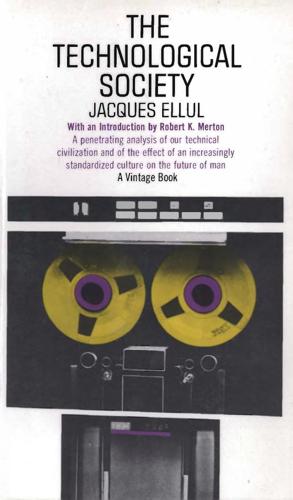
Ellul, Jacques-The Technological Society-Vintage Books (1964)
by
Unknown
Published 7 Jun 2012
It has become, for life or death, the universal lan guage which compensates for all the deficiencies and separations it The Technological Society ( 13 3 has itsel{ produced. This is the major reason for the great impetus of technique toward the universal. The Autonomy of Technique. The primary aspect of autonomy is perfectly expressed by Frederick Winslow Taylor, a leading tech nician. He takes, as his point of departure, the view that the in dustrial plant is a whole in itself, a 'closed organism,” an end in itself. Ciedion adds: “What is fabricated in this plant and what is the goal of its labor— these are questions outside its design.” The complete separation of the goal from the mechanism, the limita tion of the problem to the means, and the refusal to interfere in any way with efficiency; all this is clearly expressed b y Taylor and lies at the basis of technical autonomy.
…
Machines were invented and assembled, buildings were put up around them, and men were put inside. For fifty years the procedure was completely haphazard. Then it was noted that the worker’s productivity could be markedly increased by imposing certain rules on him. The result was the sys tem associated with the names of the Americans Frederick Winslow Taylor and Henry Ford. As Georges Friedmann has shown, they took nothing into consideration beyond the necessities of produc tion and the maximum utilization of the machine; they completely ignored the serfdom these factors entail— with their production lines, their infinite subdivision of tasks, and so on.
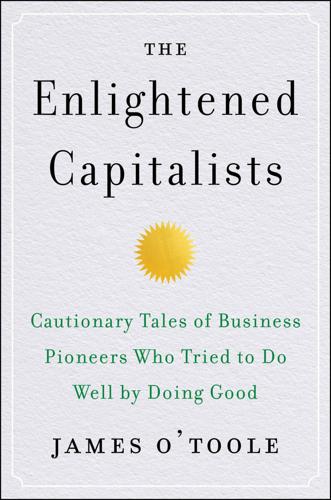
The Enlightened Capitalists
by
James O'Toole
Published 29 Dec 2018
He made certain his workers lived in comfortable homes in a spotlessly clean community with free schools and hospitals, yet acted the miser when it came to paying their wages. While Milton personally enjoyed fine wines and brandy on his travels, he fired employees caught drinking in his company town. The Hershey factory was clean, warm in winter, and well-ventilated in summer, yet its workers toiled under Frederick Winslow Taylor’s “scientific management” system, which reduced their tasks to dulling, inhumane assembly-line routines that called to mind the soul-destroying work satirized in Charlie Chaplin’s classic film Modern Times. Although Hershey lavished imported luxuries on Kitty, he harshly reprimanded employees who “wasted” electricity by turning on extra lights needed to do their tasks.9 Job security was the unquestioned norm in the chocolate factory, where most employees assumed they had lifetime employment; nonetheless, Hershey had a reputation for the occasional arbitrary firing.
…
Lincoln Electric has successfully answered that charge to the satisfaction of government regulators by portraying the role of the advisory board as a formal structure to facilitate employee-management communication and coordination. But the unionists’ strongest criticisms are directed at Lincoln’s piecework method of compensation. That system has been the bane of unions since the “scientific management” era of the late nineteenth century, when infamous industrial engineer Frederick Winslow Taylor attempted to break down manufacturing tasks into discrete and measurable physical actions, calculate how many such actions workers could do in a given time period, and then establish a pay rate to reward workers for the number of actions they complete. Unions long have argued that such a system—the system Milton Hershey used in his chocolate factory—is simply a method designed to wring the last bit of productivity out of workers.
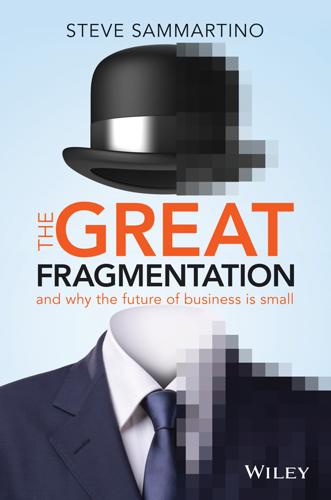
The Great Fragmentation: And Why the Future of All Business Is Small
by
Steve Sammartino
Published 25 Jun 2014
What it means for business Business can’t simply try to implement industrial-era strategies in emerging markets. The technology revolution means that many industrial-era ideas and markets will be leap-frogged by developing economies. Notes 1 http://60secondmarketer.com/blog/2011/10/18/more-mobile-phones-than-toothbrushes and also www.chartsbin.com/view/1881 2 Frederick Winslow Taylor, The Principles of Scientific Management: http://books.google.com.au/books?id=HoJMAAAAYAAJ&pg=PA3&redir_esc=y CHAPTER 3 The social reality: beyond the surface of social media Social media is only a small part of the change we’re living through; it’s a surface indicator or a symptom of the times.

The Internet Is Not the Answer
by
Andrew Keen
Published 5 Jan 2015
Simon Head, a senior fellow at the Institute for Public Knowledge at New York University, argues that this makes Amazon, with Walmart, the “most egregiously ruthless corporation in America.” This shop-floor surveillance, Head says, is an “extreme variant” of nineteenth- and twentieth-century Taylorism—the scientific management system invented by Frederick Winslow Taylor, which Aldous Huxley savagely parodied as “Fordism” in Brave New World.49 Yet even without these monitoring technologies, work in the Amazon fulfillment centers is notoriously unpleasant. Nonunionized Amazon workers in Pennsylvania, for example, have been subjected to such high warehouse temperatures that the company has ambulances permanently parked outside the facility ready to speed overheated workers to the emergency ward.50 In its Kentucky delivery center, Amazon’s hyperefficient work culture has created what one former manager described as the “huge problems” of permanently injured workers.51 In Germany, Amazon’s second-largest market, 1,300 workers organized a series of strikes in 2013 over pay and working conditions as well as to protest a security firm hired to police the company’s distribution centers.52 In Britain, a 2013 BBC undercover investigation into an Amazon warehouse revealed disturbingly harsh working conditions that one stress expert warned could lead to “mental and physical illness” for workers.53 But I don’t suppose the libertarian venture capitalists care much about the many casualties of this war of the one percent—such as Pam Wetherington, a middle-aged woman at Amazon’s Kentucky operation who suffered stress fractures in both feet through walking for miles on the warehouse’s concrete floor, yet received no compensation from Bezos’s company when she could no longer work.54 Or Jennifer Owen, a ten-year veteran employee at the Kentucky warehouse who was summarily fired after returning to work from an Amazon-approved medical leave after a car accident.55 While Amazon is a nightmare for nonunionized workers like Wetherington and Owen, it has been a financial dream for investors like Tom Perkins’s KPCB, whose original $6 million investment would, by 2014, be worth around $20 billion.
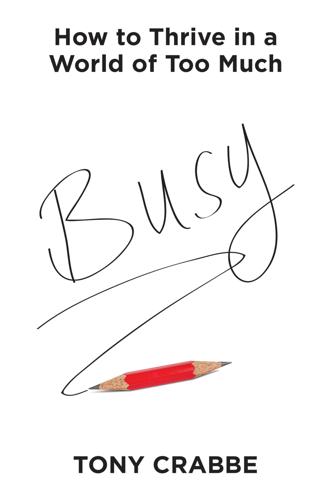
Busy
by
Tony Crabbe
Published 7 Jul 2015
The “More” Game In the Industrial Age, the primary goal was production: given a set level of quality, the more you could produce, the better. As time passed and production processes improved, managers started to realize the thing that was slowing output the most was the human factor. They needed their people to work harder and more efficiently. Enter Frederick Winslow Taylor and his approach called scientific management. Taylor analyzed employee activity with time and motion studies to find out where efficiencies could be made. Ever since then, the core focus of most management teams has been to get their people to produce more. In a curious parallel to the Industrial Age, a recent study has looked at what is holding back the effectiveness of computer systems today.
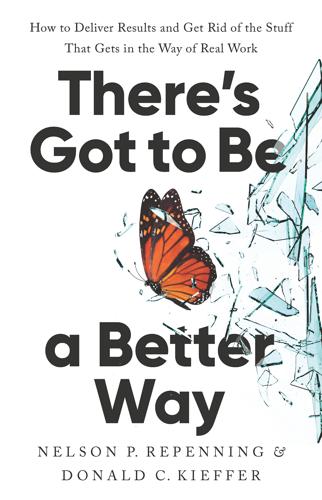
There's Got to Be a Better Way
by
Nelson P. Repenning
and
Donald C. Kieffer
Published 26 Aug 2025
The answer gets to the heart of how dynamic work design is more than just a method for improving processes; it is a different approach for thinking about leading and managing, one whose importance will only grow as the pace of technological and societal change continues to increase. Early in the twentieth century, the pioneers of the Industrial Revolution, people like Frederick Winslow Taylor and Henry Ford, developed the basic technology of mass production. Analyze the work to determine the best way to execute it (what Taylor called the “one best way”), subdivide that work into bite-sized pieces, and then relentlessly standardize each of those pieces. Taylor, in particular, believed that when done in accordance with scientific principles, the initial design of the work was definitive; no further improvement was needed.
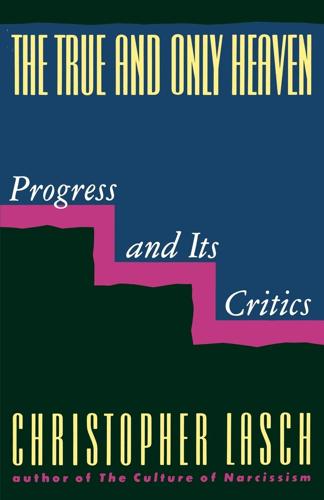
The True and Only Heaven: Progress and Its Critics
by
Christopher Lasch
Published 16 Sep 1991
The struggle for "workers' control" continued, but it was now carried on within the narrow limits imposed by a more and more elaborate division of labor. Skilled workers attempted with little success to enforce union work rules, to retain control over apprenticeship, and to prevent their displacement by unskilled operatives. They read Frederick Winslow Taylor and knew that Taylor and his followers would not rest "until almost all the machines in the shop," as Taylor explained, were run by men "of smaller calibre and attainments" than the old craftsmen—men "therefore cheaper than those required under the old system." But the influx of unskilled workers diverted attention from the defense of craftsmanship to the seemingly more urgent need for more inclusive forms of unionization.
…
Although he deplored violence, he agreed with the syndicalists that workers could be trained for "self-government" only in the school of class "warfare." Their "independence ... would not amount to much," he thought, if it was "handed down to them by the state or by employers' associations." Like Cole, Croly believed that Frederick Winslow Taylor's scientific management might precipitate a struggle for workers' control of production. The unions could not be expected to welcome appeals for greater efficiency as long as the "elimination of waste" served merely to speed up ____________________ * In all likelihood, Croly took this idea directly from Cole's World of Labour.
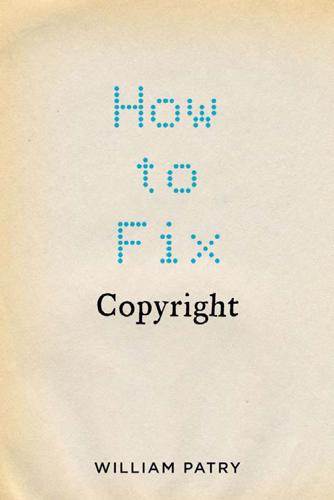
How to Fix Copyright
by
William Patry
Published 3 Jan 2012
Smith’s faith in the division of labor providing wealth to all classes was naïve. He assumed that if large jobs were broken down into small jobs, workers would become experts in their own area, and would be more productive. Being more productive, they would be paid more. That isn’t what happened, at least at the industrial level, thanks to the efforts of Frederick Winslow Taylor, who took Smith’s theory but used it to deprive workers of knowledge of anything but the small task in front of them, tasks which were made repeatable and monotonous, thereby diminishing their skills. In addition, Taylor’s methods of using stop watches and other forms of quantification led to laborers producing more in less time for less pay.

Bricks & Mortals: Ten Great Buildings and the People They Made
by
Tom Wilkinson
Published 21 Jul 2014
It is terrifying to me.’6 Complex actions were photographically dissected in Frank and Lillian Gilbreth’s ‘motion studies’: in long exposures small lights were attached to subjects’ hands in order to record actions, with the subjects themselves reduced to faceless blurs These ‘terrifying’ innovations were part of a new approach to work that developed around the turn of the twentieth century, pioneered by Ford, Frederick Winslow Taylor, whose systematic analysis and reorganisation of labour processes became known as Taylorism, and husband and wife team Frank and Lillian Gilbreth, inventors of the motion study. Ford claimed never to have read the work of Taylor (credibly enough – he wasn’t keen on books), but although there were differences in their approaches they shared the view that production could be optimised by dissecting the work process.
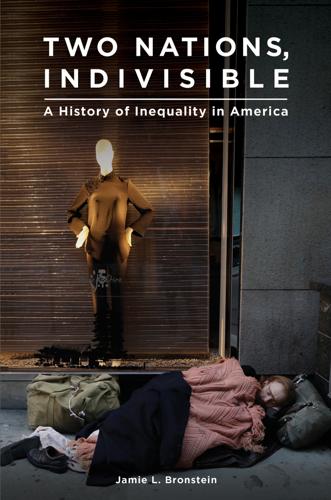
Two Nations, Indivisible: A History of Inequality in America: A History of Inequality in America
by
Jamie Bronstein
Published 29 Oct 2016
Workers encountered dangerous and unfenced machinery; even when safety measures were available, employers could claim that installing them was too expensive. Employers claimed that workplace injuries were due to worker negligence or failure to master the English language. Workers labored long hours, in uncomfortable postures, without sufficient meal breaks or bathroom breaks. Mechanical engineer Frederick Winslow Taylor’s innovation of “scientific management” introduced time–motion studies intended to find the “one best way” of performing every factory task; Taylorism made production efficient but deprived the worker of all autonomy of movement on pain of fines or dismissal.35 And most depressingly, the cost of adapting physically to the workplace was shifted onto the worker; there was no regulation to compel most workplaces to restrict work hours, provide rest and meal breaks, or install safety devices.36 By 1920, more than 5 million Americans belonged to labor unions, as contrasted with fewer than 500,000 only 20 years previously.37 Even during this moment of relative labor unrest, however, the workforce remained divided between men and women, between native-born and immigrant workers, and between the white workers and the black workers who were often used to break strikes.38 The American Federation of Labor emerged as the major overarching entity organizing male skilled workers.

Street Smart: The Rise of Cities and the Fall of Cars
by
Samuel I. Schwartz
Published 17 Aug 2015
There’s a lot of empirical research on walking, and not just the way in which the thighbone is connected to the knee bone, a subject that was on my mind a lot after I had arthroscopic knee surgery in the summer of 2014. People have been measuring, analyzing, and modeling the way people walk ever since the original gurus of scientific management, Frederick Winslow Taylor and the husband-and-wife team of Frank and Lillian Gilbreth,k performed the first time-motion studies to see how best to organize assembly-line work at the end of the nineteenth century. Decades later, William H. Whyte—“Holly” to everyone who knew him—graduated from reporting on business organizations for Fortune and writing business bestsellers like The Organization Man (this million seller from 1956 is where the term groupthink was coined) to discover his true calling: describing the way people behaved and moved in public places.
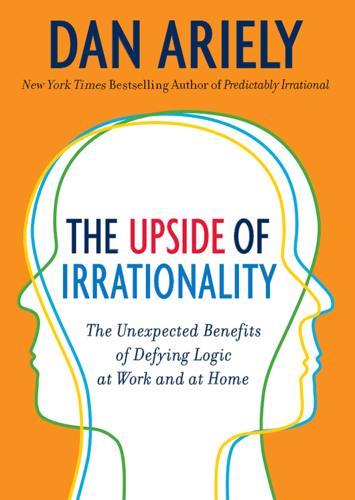
The Upside of Irrationality: The Unexpected Benefits of Defying Logic at Work and at Home
by
Dan Ariely
Published 31 May 2010
There are in a pound upwards of four thousand pins of a middling size. Those ten persons, therefore, could make among them upwards of forty-eight thousand pins in a day.1 When we take tasks and break them down into smaller parts, we create local efficiencies; each person can become better and better at the small thing he does. (Henry Ford and Frederick Winslow Taylor extended the division-of-labor concept to the assembly line, finding that this approach reduced errors, increased productivity, and made it possible to produce cars and other goods en masse.) But we often don’t realize that the division of labor can also exact a human cost. As early as 1844, Karl Marx—the German philosopher, political economist, sociologist, revolutionary, and father of communism—pointed to the importance of what he called “the alienation of labor.”
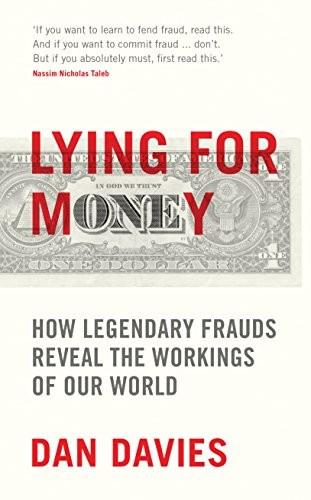
Lying for Money: How Fraud Makes the World Go Round
by
Daniel Davies
Published 14 Jul 2018
If you can’t measure something, you can’t manage it is something of a caricature* of modern management science, but it expresses a deep truth; management is an information-processing job, and the development of large corporations has been made possible by the parallel development of reporting structures, quality and output measures and other tools for getting that information from the machines into the offices. Modern management science could fairly be said to have started with The Principles of Scientific Management by Frederick Winslow Taylor in 1911, which first advocated the ‘time and motion study’ and the scientific analysis of business processes, starting with a famous study of how many rest breaks a man should take while shoveling iron ore onto a truck. And it could almost as fairly be said that a very great proportion of management theory since Taylor has been made up of calls to measure different things, in order to correct for the biases introduced by the previous round of changes.
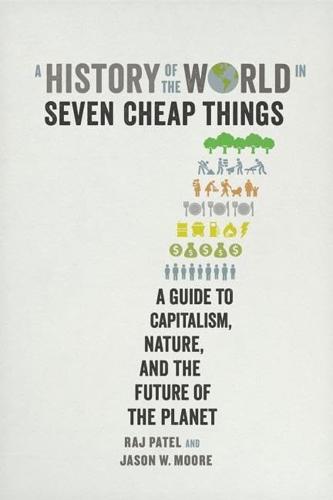
A History of the World in Seven Cheap Things: A Guide to Capitalism, Nature, and the Future of the Planet
by
Raj Patel
and
Jason W. Moore
Published 16 Oct 2017
The Soviet model was trapped by the same relations of work and nature. The logic of twentieth-century state communism was stuck in a sixteenth-century ecology.61 In fact, the Soviets were rather keen on taking all manner of ideas from their capitalist foes, including those of the American time-and-motion expert Frederick Winslow Taylor, which were embraced—and contested—in Soviet industry. Lenin, who had earlier denounced “man’s enslavement by the machine” under Taylorism, insisted in April 1918 that “we must definitely speak of the introduction of the Taylor System. . . . Without this, it will be impossible to raise productivity, and without that we will not usher in socialism.”62 In agriculture too, industrialization was enthusiastically embraced.
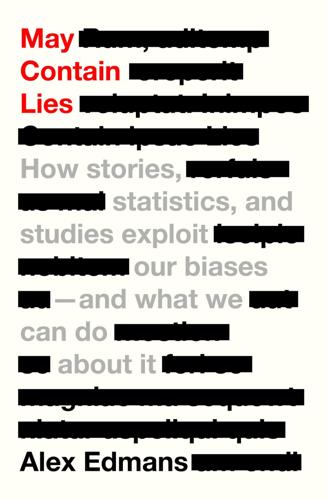
May Contain Lies: How Stories, Statistics, and Studies Exploit Our Biases—And What We Can Do About It
by
Alex Edmans
Published 13 May 2024
If you’ve succeeded in taking that tricky third step up the ladder from data to evidence, you might think you’ve reached the summit – you have proof of your theory. Unfortunately, you’re not yet there, and in fact you can never reach the top rung. The next chapter will explain why. 8 Evidence is Not Proof Frederick Winslow Taylor was born in Philadelphia in 1856 to a wealthy Quaker family. Until he was twelve, he was homeschooled by his mother, a fervent abolitionist and feminist, then he spent two years studying in Europe. A promising scholar, Taylor was on track to follow in the footsteps of his father, an Ivy League-educated lawyer.
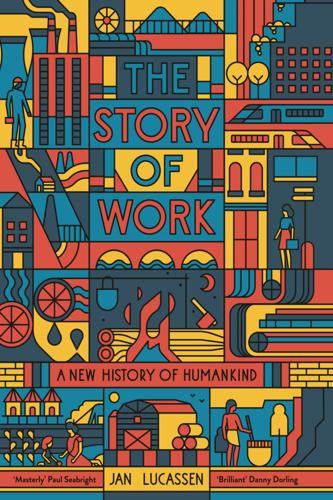
The Story of Work: A New History of Humankind
by
Jan Lucassen
Published 26 Jul 2021
Not only the tools and their motive power but also the worker himself became the object of serious study, especially in the US.121 One of the first to undertake such a study was the Englishman Charles Babbage (the ‘father’ of the computer), but the most famous was undoubtedly the next generation’s Frederick Winslow Taylor, an American who systematically studied the time required for industrial activities, culminating in ‘scientific management’, ergonomics and ‘human factors’ techniques, and with respect to the economy, ‘labour economics’, ‘labour (industrial) relations’ or ‘manpower economics’. Kindred spirits, as well as Taylor, apparently devoid of any modesty, called such an approach ‘The One Best Way’.122 But not everyone was so sure about it.
…
Aspects of the Economic History of Babylonia in the First Millennium BC: Economic Geography, Economic Mentalities, Agriculture, the Use of Money and the Problem of Economic Growth (Münster: Ugarit Verlag, 2010). Kaare, Bwire & James Woodburn. ‘The Hadza of Tanzania’, in Richard B. Lee & Richard Daly (eds), The Cambridge Encyclopedia of Hunters and Gatherers (Cambridge: CUP, 2004), pp. 200–4. Kanigel, Robert. The One Best Way: Frederick Winslow Taylor and the Enigma of Efficiency (Cambridge, MA: MIT, 2005). Kaplan, Hillard S. et al. ‘The Evolution of Diet, Brain and Life History among Primates and Humans’, in Wil Roebroeks (ed.), Guts and Brains: An Integrative Approach to the Hominin Record (Leiden: Leiden UP, 2007), pp. 47–90. Kaplan, Steven L. & Cynthia Koepp (eds).
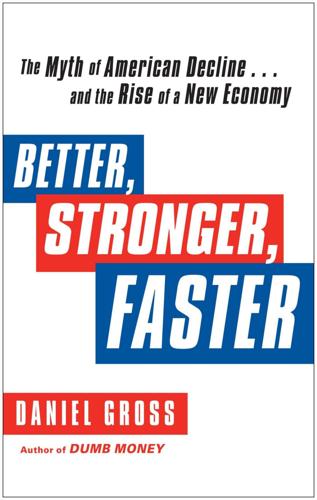
Better, Stronger, Faster: The Myth of American Decline . . . And the Rise of a New Economy
by
Daniel Gross
Published 7 May 2012
And as declinists fingered their worry beads and warned of a permanent depression, the private sector was figuring how to do things better and faster, laying the groundwork for a stronger economy. The pursuit of efficiency has long been a hallmark of American economic success. Management consulting, it should be recalled, is an American invention and a field in which U.S. firms dominate. It started with Frederick Winslow Taylor, who may have been America’s first management consultant. Starting in the 1890s the inventor of “scientific management” walked around factories with a stopwatch, timing the activities of workers and suggesting ways they could speed up their processes. The efficiency revolution continued with Henry Ford, whose perfection of the assembly line at the vast River Rouge plant enabled him to transform the automobile from a custom-built toy for the 1 percent to a highly practical tool for the 99 percent.
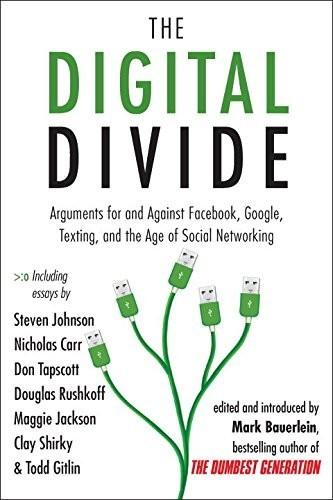
The Digital Divide: Arguments for and Against Facebook, Google, Texting, and the Age of Social Netwo Rking
by
Mark Bauerlein
Published 7 Sep 2011
Never has a communications system played so many roles in our lives—or exerted such broad influence over our thoughts—as the Internet does today. Yet, for all that’s been written about the Net, there’s been little consideration of how, exactly, it’s reprogramming us. The Net’s intellectual ethic remains obscure. About the same time that Nietzsche started using his typewriter, an earnest young man named Frederick Winslow Taylor carried a stopwatch into the Midvale Steel plant in Philadelphia and began a historic series of experiments aimed at improving the efficiency of the plant’s machinists. With the approval of Midvale’s owners, he recruited a group of factory hands, set them to work on various metalworking machines, and recorded and timed their every movement as well as the operations of the machines.
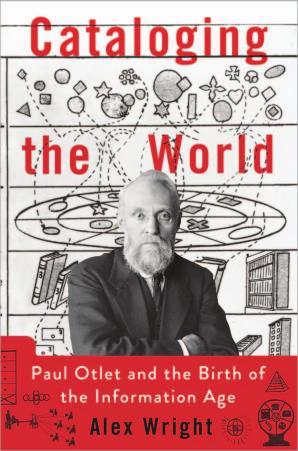
Cataloging the World: Paul Otlet and the Birth of the Information Age
by
Alex Wright
Published 6 Jun 2014
The invention of electricity and the internal combustion engine accelerated the production and transportation of goods, while new communications technologies like the telegraph and the radio started to lay the foundations for a nascent global communications network. 34 T he L ibraries o f B abel These developments in turn created the conditions for new patterns of knowledge production to emerge. As industrialization took hold across England and eventually the rest of Europe, so too did a new organizational ethos. The principles of scientific management, as it was called, most famously articulated by the American mechanical engineer Frederick Winslow Taylor, began to shape the work practices of many growing industrial companies. Giving eloquent voice to the new industrial ethos, Taylor described how professional managers must learn to take a wholesystems view of their organizations, instituting tightly controlled processes to maximize productivity.

The Atlantic and Its Enemies: A History of the Cold War
by
Norman Stone
Published 15 Feb 2010
Real managers have better things to do, and asking them about theories of management is equivalent to asking a first-class golfer to lecture on ballistics. There was even around 1900 a group of men who wanted to make business academically respectable and Harvard acquired a business school that its founders expected to rival the law school. Frederick Winslow Taylor (1856-1915) invented the time-and-motion study, in which white-coated experts studied the performance of the workforce, and, with slide-rules, criticized. Early on, the application of these methods caused demoralization and in the Ford plant at Dearborn turnover of the workforce stood at 900 per cent a year.
…
Sweden: automobile industry and Finland health care and Kurdish nationalism Lutheran Church price and wage control sterilization of Lapps ‘Swedish model’ taxation trade with Germany trade unions Swindon Switzerland Sydney Syria: Egyptian-Syrian union Kurdish population Öcalan in Soviet aid Yom Kippur War (1973) Szamuely, Tibor Szasz, Thomas, The Myth of Mental Illness Szklarska Poręba Tadzhikistan Tadzhiks Taiwan: Chiang Kai-shek’s mausoleum economic power Kuomintang (Nationalist) government land reforms US relations with Talbott, Strobe Talebani, Celal Talleyrand, Charles Maurice de Tamerlane Tanzania Taraki, Nur Mohammed Targowice, Convention of (1792) Tarnovsky, A. A. Tashkent Tătărescu, Gheorghe Tatars Tatarstan Taut, Bruno Tawney, R. H. Taylor, A. J. English History 1914-1945 Taylor, Frederick Winslow Taylorism Taylor, Maxwell Tchaikovsky, Peter Ilich Teamsters (labour union) Tebbit, Norman, Baron Tefal (corporation) Teheran conference (1943) Teitelboim, Volodia TeleCommunications Inc. telephones television: in Britain cable television in Eastern Bloc in France in Germany manufacture of sets news reporting and politics Teller, Edward Timişoara Tennessee Valley Authority terrorism: Irish in Italy Kurdish Palestinian Rome and Vienna airport attacks (1985) in West Germany Tet offensive (1968) Texaco (oil company) Texas TGWU (British Transport and General Workers Union) Thatcher, Sir Denis Thatcher, Margaret, Baroness: animus against background and character on Berlin Wall at Bicentenary celebrations in Paris budget of 1981 andservice combating of inflation core beliefs education policies and EEC/EU elected Conservative leader (1975) Falklands War (1982) and fall of communism fall from power foreign policy general election victories; (1979); (1983) and German reunification and Gorbachev international reputation and miners and nuclear power oratory skills and Pinochet Poll Tax privatization policy relationship with Reagan social policies tax cuts and trade unions and universities Westland affair (1986) Thébaud, Franck Thébaud, Fritz Theodoracopulos, Taki Thieu, Nguyen Van Third Man, The (film) ‘third way’ Thirty Years War Tho, Le Duc Thompson, Robert Thrace Thyssen (corporation) Tiananmen Square massacre (1989) Tibet Tientsin Tigris river Tikhonov, Nikolay Tildy, Zoltán Times, The move to docklands strike Timişoara Tiso, Mgr Jozef Tito, Josip Broz Tobin, James Tocqueville, Alexis de Todd, Emmanuel Toffler, Alvin Tőkés, László Tokyo Tolbukhin, Fyodor Tomić, Radomiro Tonkin, Gulf of Tontons Macoutes Toussaint’Ouverture, François-Dominique Toyota (automobile manufacturer) Trabzon trade unions: Britain Chile China and communist takeover of eastern Europe cross-Atlantic co-operation Cuba Czechoslovakia France Holland Hungary Italy Poland post-war Germany and ‘Swedish model’ Turkey USA West Germany Transjordan Transylvania Trapeznikov, S.
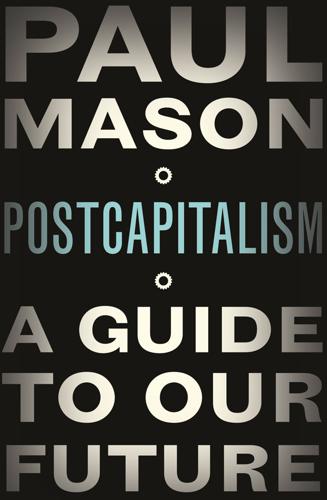
Postcapitalism: A Guide to Our Future
by
Paul Mason
Published 29 Jul 2015
Having ‘met the machine and won’, the organized worker would, in the first half of the twentieth century, meet the scientific manager, the bureaucrat and – eventually – the guard at the concentration camp. 1898–1948: PICK UP A PIG AND WALK In 1898, in the freight yard of Bethlehem Steel in Pennsylvania, a manager called Frederick Winslow Taylor came up with a new solution to the century-old problem of skilled worker autonomy. ‘Pick up a pig and walk,’ Taylor told his labourers – a ‘pig’ being a lump of iron weighing 92lbs. By studying not just the time it took them to move the iron, but the detailed motion of their bodies, Taylor showed how industrial tasks could be made modular.
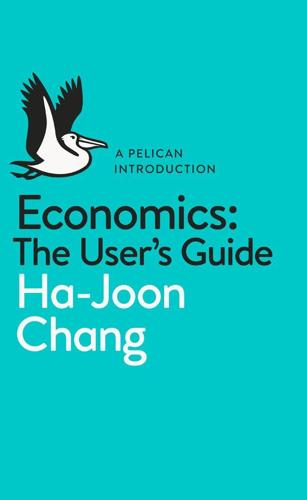
A Pelican Introduction Economics: A User's Guide
by
Ha-Joon Chang
Published 26 May 2014
These things are taken for granted by economists, but they are still something that not every producer gets right, especially in developing countries. The rise of Fordism, or the mass production system In addition to organizing the flow of work more efficiently, attempts have been made to make workers themselves more efficient. The most important in this regard was Taylorism, named after Frederick Winslow Taylor (1856–1915), the American engineer and later management guru. Taylor argued that the production process should be divided up into the simplest possible tasks and that workers should be taught the most effective ways to perform them, established through scientific analyses of the work process.
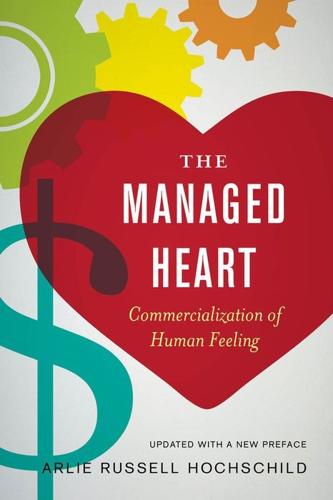
The Managed Heart: Commercialization of Human Feeling
by
Arlie Russell Hochschild
Published 1 Nov 1983
The Airline Deregulation Act, passed by Congress in October 1978, provided for abolition of the CAB by 1985, after the transfer of some of its functions to other agencies has been accomplished. In 1981 the CAB lost all authority to regulate the entry of air carriers into new domestic markets. 266 Notesfor Pages 119-156 3. Braverman (1974) argues that corporate management applied the principles of Frederick Winslow Taylor and systematically divided single complex tasks into many simple tasks so that a few parts of the former complex task are done by a few highly paid mental workers while the remaining simple parts of the task are done by cheap and interchangeable unskilled workers. To management, the advantage is that it is cheaper and there is more control over the work process from the top, less from the bottom.
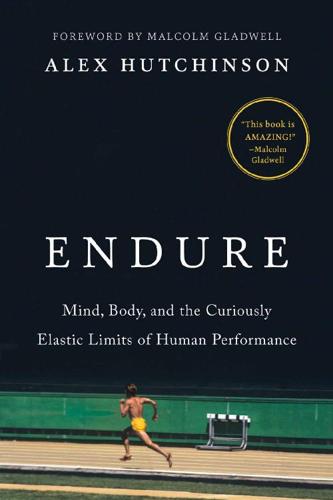
Endure: Mind, Body, and the Curiously Elastic Limits of Human Performance
by
Alex Hutchinson
Published 6 Feb 2018
They drew an explicit link between the biochemical “steady state” of athletes like DeMar, who could run at an impressive clip for extended periods of time without obvious signs of fatigue, and the capacity of well-trained workers to put in long hours under stressful conditions without a decline in performance. At the time, labor experts were debating two conflicting views of fatigue in the workplace. As MIT historian Robin Scheffler recounts, efficiency gurus like Frederick Winslow Taylor argued that the only true limits on the productive power of workers were inefficiency and lack of will—the toddlers-on-a-plane kind of endurance.32 Labor reformers, meanwhile, insisted that the human body, like an engine, could produce only a certain amount of work before requiring a break (like, say, a weekend).
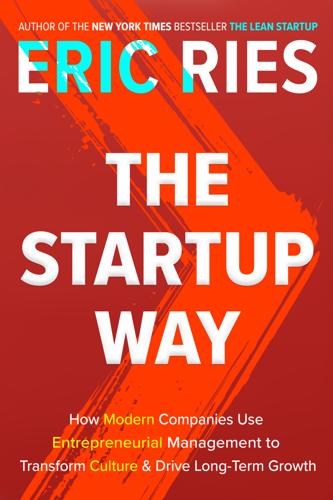
The Startup Way: Making Entrepreneurship a Fundamental Discipline of Every Enterprise
by
Eric Ries
Published 15 Mar 2017
Remember, if such people found a company in their home country, they will probably have easy access to the American market to sell products into. They will probably have easy access to American venture capital. We will be their customers. But the jobs will be created overseas.16 Labor Relations One of the most striking claims of Frederick Winslow Taylor’s The Principles of Scientific Management (1915) was that no workplace that had been organized under the principles of scientific management had ever had a strike, because when workers were treated “optimally” there was never any need for labor strife. With the benefit of hindsight, we now know this claim to be overblown: Many companies organized according to those principles have indeed endured strikes over the years.
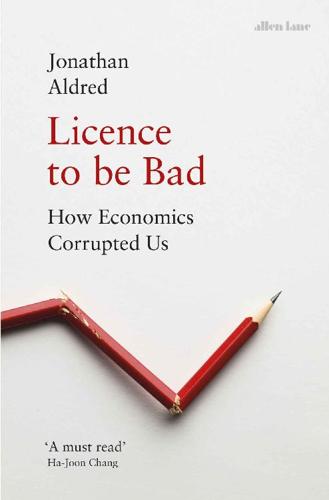
Licence to be Bad
by
Jonathan Aldred
Published 5 Jun 2019
But it is hardly surprising that businesses cheat when a licence for bad behaviour is so easy to find: simply combine Becker’s inability to understand that crime is morally wrong with Friedman’s insistence that the only responsibility of business is to maximize profit. How many more business leaders, politicians and others in positions of power have excuses from economic imperialists being whispered in their ears? 7 Everyone Has a Price In 1911 Frederick Winslow Taylor, an aristocratic Philadelphian, published The Principles of Scientific Management. Later dubbed ‘the Isaac Newton of the science of work’ by 1970s management guru Peter Drucker, Taylor was arguably the world’s first management consultant. His book paved the way for what are now mainstream management techniques to improve worker efficiency.
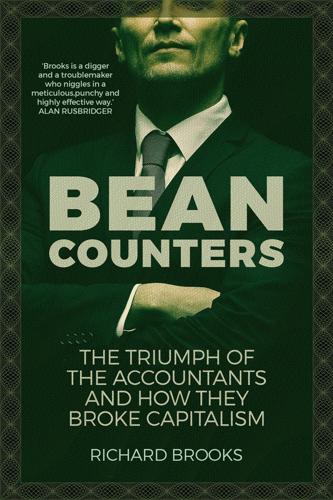
Bean Counters: The Triumph of the Accountants and How They Broke Capitalism
by
Richard Brooks
Published 23 Apr 2018
These sprawling concerns had to be managed by other people both for practical reasons and because the likes of Rockefeller, Carnegie and Ford were, said one business historian, ‘the conquerors of capitalism, not its administrators’. 4 Those who could tell the new managers of corporate America what made up their profits, and therefore how they could be increased, were useful people to know. The technicians who took the theories of cost accounting and scaled them up for the new age were led by a mechanical engineer from the steel heartland of Philadelphia called Frederick Winslow Taylor. He refashioned industrial methods using ‘scientific management’: detailed classifications of cost, time, materials and output. ‘Taylorism’ would be credited with innovations such as the production-line system, with each worker performing a small part repetitively. Its brutal efficiency was satirized by Charlie Chaplin in Modern Times, but it enabled Henry Ford’s workers to make a Model T in a couple of hours, compared to half a day beforehand.
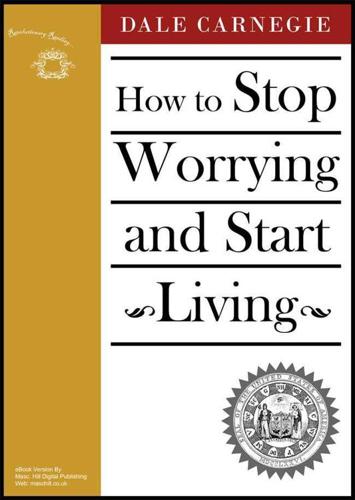
How to Stop Worrying and Start Living
by
Dale Carnegie
Published 17 May 2009
Schmidt was able to do this because he rested before he got tired. He worked approximately 26 minutes out of the hour and rested 34 minutes. He rested more than he worked, yet he did almost four times as much work as the others! Is this mere hearsay? No, you can read the record yourself in Principles of Scientific Management by Frederick Winslow Taylor. Let me repeat: do what the Army does, take frequent rests. Do what your heart does, rest before you get tired, and you will add one hour a day to your waking life. Part Seven Six Ways to Prevent Fatigue And Worry and Keep Your Energy and Spirits High What Makes You Tired and What You Can Do About It Here is an astounding and significant fact: Mental work alone can't make you tired.
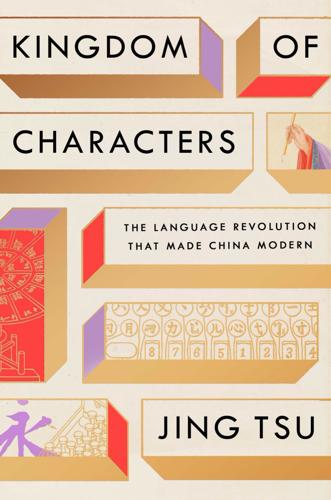
Kingdom of Characters: The Language Revolution That Made China Modern
by
Jing Tsu
Published 18 Jan 2022
Amid the increasing intellectual clamor and branding campaigns, it grew difficult to tell whose system was better than the others. The scheme that ultimately prevailed was the Four-Corner Index Method, invented by Wang Yunwu. Wang was also the powerful editor in chief at the Commercial Press, a business-savvy executive with a nose for profit. He ran the press’s printing floor on the principles of Frederick Winslow Taylor’s scientific management and knew how to maximize an opportunity as well as how to squeeze maximum labor from someone’s working hours. Wang Yunwu used shape identification to determine a numbering system, which he made his first and last selling point. He partly revived the telegraphic coding method from the nineteenth century—with one crucial difference.

You've Been Played: How Corporations, Governments, and Schools Use Games to Control Us All
by
Adrian Hon
Published 14 Sep 2022
Only that which could be seen could be punished, and many of its judgements such as “irregular gestures” and “negligence” were often surely subjective. No doubt that was seen as a virtue amongst many of those doing the judging, but it’s very different from gamification, where judgements are mechanical and replicable, if still not wholly objective. To bridge the gap between Foucault and Uber, we need to go back to Frederick Winslow Taylor, the godfather of “scientific management.” In 1881, Taylor sought to pierce the mystery of why some factory workers were faster than others by timing their every motion and measuring their exact output.34 Armed with this knowledge, he would devise the “one best way” to accomplish their task, then extrapolate the maximum theoretical output per worker.
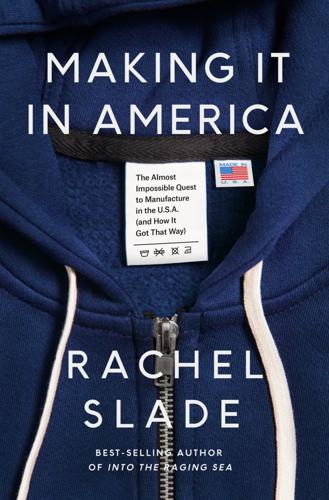
Making It in America: The Almost Impossible Quest to Manufacture in the U.S.A. (And How It Got That Way)
by
Rachel Slade
Published 9 Jan 2024
We work to eliminate the things that are happening every day that just don’t have to happen. Because that’s what gets in the way of success.” For the first time, maybe ever, an honest-to-god professional manufacturer was in the American Roots factory, but his big innovation was a century-old concept called Taylorism. Taylorism was first proposed by Frederick Winslow Taylor, an upper-middle-class, well-connected Philadelphian who was one of the first nineteenth-century industrialists to analyze how actual humans were working from an efficiency standpoint. He’s probably best remembered for hovering over workers with a stopwatch, timing their movements to the hundredth of a minute to determine the ideal time for any operation.
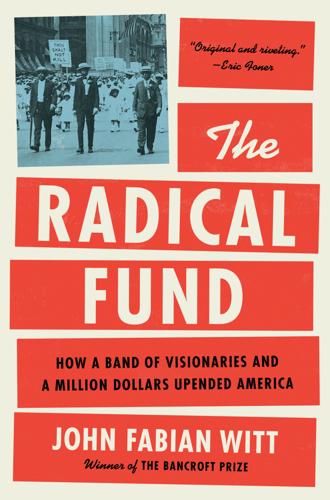
The Radical Fund: How a Band of Visionaries and a Million Dollars Upended America
by
John Fabian Witt
Published 14 Oct 2025
More generally, the new unionism entailed a perilous relationship between progressive labor, on the one hand, and cutting-edge efforts at managerial efficiency, on the other. Since at least the first decade of the twentieth century, a generation of managerial administrators had proposed to reengineer the mass-production workplace. Frederick Winslow Taylor of Philadelphia’s Midvale Steel was the most famous of such managers, instituting stopwatch studies to standardize even the most complex industrial tasks into one best way. The key reform, Taylor told Congress in 1912, was “the deliberate gathering in” by management “of the great mass of traditional knowledge, which in the past has been in the heads of the workmen.”
…
Daniel, The ACLU and the Wagner Act: An Inquiry into the Depression-Era Crisis of American Liberalism (Cornell Studies in Industrial and Labor Relations) (Cornell University Press, 1980), 42. 38. comfortable home: Fraser, Labor Will Rule, 114–45. Taylor: Robert Kanigel, The One Best Way: Frederick Winslow Taylor and the Enigma of Efficiency (MIT Press, 1997); Mike Davis, “The Stop Watch and the Wooden Shoe: Scientific Management and the Industrial Workers of the World,” in Workers’ Struggles, Past and Present: A “Radical America” Reader, ed. James Green (Temple University Press, 1983), 83–100. “deliberate gathering… workman”: David Montgomery, Workers’ Control in America: Studies in the History of Work, Technology, and Labor Struggles (Cambridge University Press, 1979), 115. 39.
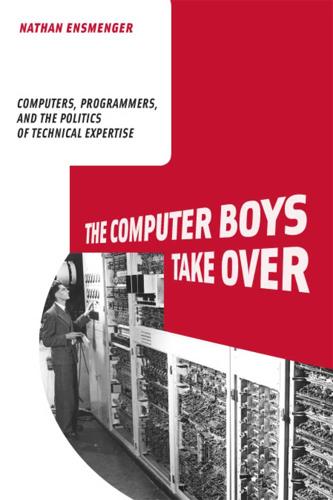
The Computer Boys Take Over: Computers, Programmers, and the Politics of Technical Expertise
by
Nathan L. Ensmenger
Published 31 Jul 2010
Saba, “Letter to the Editor,” IEEE Computer 29, no. 9 (1996): 10; Edward Nash Yourdon, ed., Classics in Software Engineering (New York: Yourdon Press, 1979); Herbert Freeman and Phillip Lewis, Software Engineering (New York: Academic Press, 1980). 8. M. Douglas McIlroy, cited in ibid, 7. 9. Douglas McIroy, cited in Naur, Randall, and Buxton, Software Engineering, 7. 10. Ibid. 11. Brad Cox, “There Is a Silver Bullet,” Byte 15, no. 10 (1990): 209. 12. Frederick Winslow Taylor, The Principles of Scientific Management (New York: Harper and Brothers, 1911). 13. Richard Canning, “Issues in Programming Management,” EDP Analyzer 12, no. 4 (1974): 1–14. 14. Stuart Shapiro, “Splitting the Difference: The Historical Necessity of Synthesis in Software Engineering,” IEEE Annals of the History of Computing 19, no. 1 (1997): 25–54. 15.
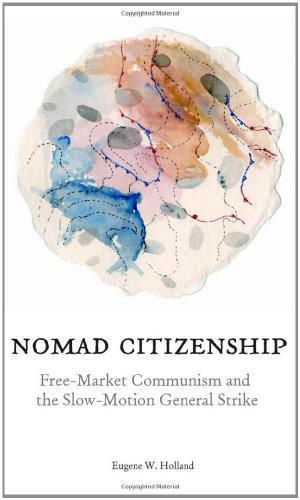
Nomad Citizenship: Free-Market Communism and the Slow-Motion General Strike
by
Eugene W. Holland
Published 1 Jan 2009
[is to] ask whether it is integral to the process or outside the process, that is . . . whether it grows out of the actual circumstances, whether it is inherent in the situation.20 The concept of power-with thus designates both less and more than the mere ability to accomplish something: it highlights the specific quality of the “organization of the social field” entailed by the form of activity do ing the accomplishing. Follett was a contemporary of the other, more famous, turn-of-thecentury North American management theorist Frederick Winslow Taylor, and the stark contrast between their views is revealing. Following in Sir Francis Bacon’s footsteps, Taylor advocated replacing the rule-of-thumb procedures developed informally by workers themselves with formal rules developed independently of them by “scientific” managers.21 Where Fol lett endorsed a form of authority arising immanently from an internally differentiated but nonhierarchical group, Taylor insisted on a sharp, hier archical distinction between the managers, who would analyze the work process to formulate rules of procedure, and the workers, who would merely carry them out.
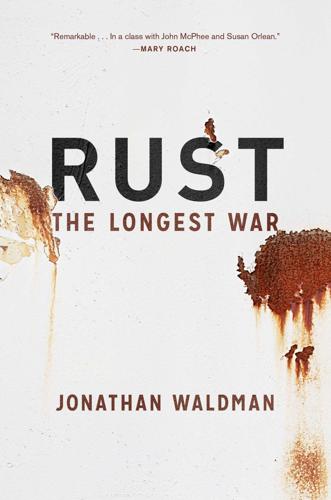
Rust: The Longest War
by
Jonathan Waldman
Published 10 Mar 2015
In it, he called his brother “a better workman, a better observer and a more resourceful experimentalist than I.” In 1901, at age thirty, Brearley was hired at Kayser, Ellison & Co. as a chemist to work on high-speed tool steels, which had been discovered three years earlier by a consultant for Bethlehem Steel named Frederick Winslow Taylor. Sidetracked from production problems, Taylor had begun looking at steels used to plane and bore ship plates and cannons. Ideal forging temperatures were still measured by color, and he found that steel, heated to just below dull cherry, came out strong, but the same steel, heated above that point, became weak.
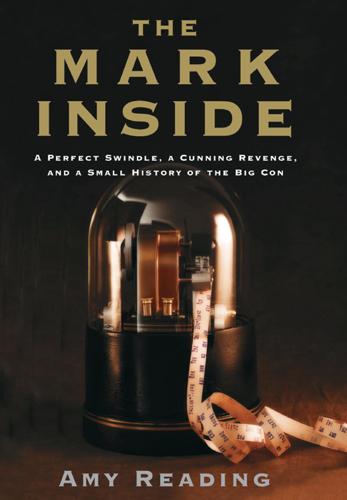
The Mark Inside: A Perfect Swindle, a Cunning Revenge, and a Small History of the Big Con
by
Amy Reading
Published 6 Mar 2012
Small, traditional family firms had merged and grown into large, articulated corporations that were distinguished by two deceptively simple innovations: they were made up of many different operating units, and they were managed by a hierarchy of salaried executives. What resulted was managerial capitalism, which prized efficiency above all else. Frederick Winslow Taylor pioneered the study and merciless exploitation of time as a managerial tool in his book The Principles of Scientific Management. By measuring the time it took to perform a given manufacturing task, a manager would set a standard for production that would then determine workers’ rates of pay, thus vastly increasing the output of each employee.

The Evolution of Everything: How New Ideas Emerge
by
Matt Ridley
Even Lenin and Stalin now admired the big American corporations, with their scientific management, planned workforce accommodation and giant capital requirements. ‘We must organize in Russia the study and teaching of the Taylor system and systematically try it out and adapt it to our purposes,’ wrote Lenin of the great apostle of scientific management, Frederick Winslow Taylor. The libertarian editor of the Nation, Ed Godkin, lamented in 1900: ‘Only a remnant, old men for the most part, still uphold the liberal doctrine, and when they are gone, it will have no champions.’ The very word ‘liberal’ changed its meaning, especially in the United States. ‘As a supreme, if unintended, compliment, the enemies of the system of private enterprise have thought it wise to appropriate the label,’ said Joseph Schumpeter.

What’s Your Type?
by
Merve Emre
Published 16 Aug 2018
Salespeople, branch directors, vice presidents, even clerks like his younger self—they were responsible not for making things but for managing the various, sometimes idiosyncratic demands of customers and colleagues. There was no easy or reliable way to quantify how good they were at their jobs. The man who could master the messy intimacies of workplace human relations would emerge as the next Frederick Winslow Taylor: the man revered as the father of “scientific management,” a pioneer in the study of industrial efficiency, and one of Hay’s personal heroes. Only this time, the workplace revolution he would usher in would take place not on the dusty factory floors, amidst loud, hot machines and sweating workers, but in the tidy offices that looked down on them from above.
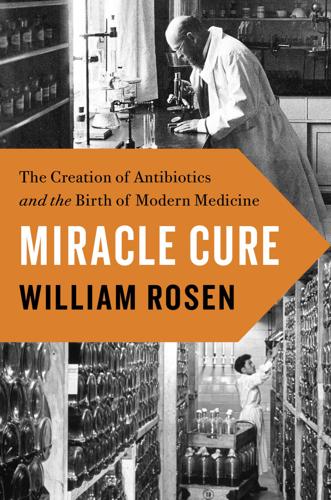
Miracle Cure
by
William Rosen
Published 14 Apr 2017
During the Second World War, when the company was furiously producing plasma for American troops overseas, he famously observed that he “didn’t think it was the right thing for anybody to make any profit on blood which has been donated.” It has been easy for Lilly’s biographers to emphasize his wide though wonky interests. An early enthusiast for the time-motion studies of Frederick Winslow Taylor, Lilly was also, in no particular order, an amateur archaeologist with a special interest in the Native American cultures of his much-loved home state of Indiana; a sophisticated art collector, largely of Chinese paintings and pottery; a compulsive writer of childish rhymes; a devotee of uplifting self-improvement manuals and the music of Stephen Foster; and, for decades, the patron of choice for leaders of now-forgotten academic fads.* He was also, during his lifetime, one of the half dozen most generous American philanthropists.
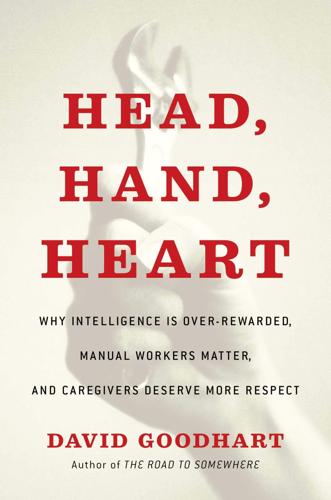
Head, Hand, Heart: Why Intelligence Is Over-Rewarded, Manual Workers Matter, and Caregivers Deserve More Respect
by
David Goodhart
Published 7 Sep 2020
The economy and the expansion of the public sector required more Head jobs and relatively fewer Hand ones, and as we shall see in the next chapter, the income returns to knowledge and education began to take off in the 1970s after almost a century of income compression between Head and Hand. Frederick Winslow Taylor’s theories of scientific management developed in the United States before the First World War had produced the giant mass-production factory by ending skilled workers’ monopoly of production know-how and breaking it down into easy-to-perform functions. This required less manual skill but some degree of literacy and numeracy.
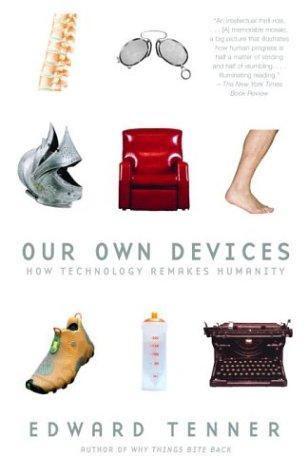
Our Own Devices: How Technology Remakes Humanity
by
Edward Tenner
Published 8 Jun 2004
The early industrial engineers paid surprisingly little attention to furniture, probably because so many of their clients and employers were in heavy industry, where workers customarily stood. Until the late nineteenth century a factory worker was lucky to have an upturned box or a stool. Characteristically, Frederick Winslow Taylor, who gave his name to the efficiency movement, illustrated his speeches with a story of a laborer and his shovel. Even Taylor’s almost equally celebrated disciples, Frank and Lillian Gilbreth, introduced only one significant innovation, a chair elevated on a movable platform at a high desk to allow alternating sitting and standing positions.
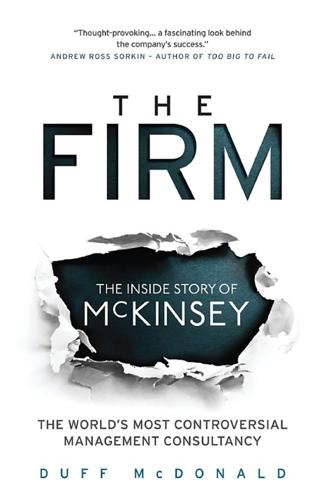
The Firm
by
Duff McDonald
Published 1 Jun 2014
Taking the Pianist Out of the Brothel Before James McKinsey could be successful, he had to clean up the reputation of management as a concept. In The Management Myth, philosophy-student-turned-consultant-turned-author Matthew Stewart’s highly critical look at the history of management thinking, the author argued that it was flawed from the get-go. And he pinned original sin on Frederick Winslow Taylor, the father of “scientific management.” Taylor’s famous time-and-motion studies used stopwatch analyses of manual labor with the goal of shaving seconds off rote, repeated activities, thereby enhancing productivity. There was, Taylor argued, just “one best way” to produce anything, and a manager armed with Taylor’s tools could identify it.
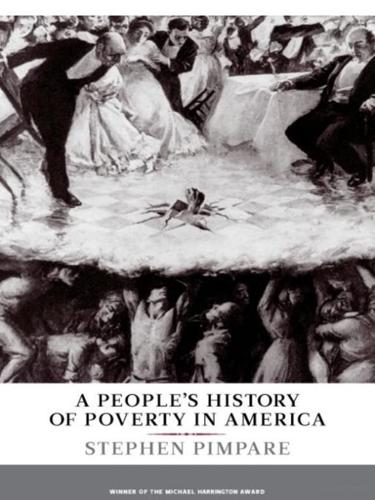
A People's History of Poverty in America
by
Stephen Pimpare
Published 11 Nov 2008
Bruns, Knights of the Road: A Hobo History (New York: Methuen, 1980), 43. 87 Ibid. 88 Quoted in ibid., 9. 89 Frank Tobias Higbie, Indispensable Outcasts: Hobo Workers and Community in the American Midwest, 1880–1930 (Urbana: University of Illinois Press, 2003), 30–31. 90 Patricia Cooper, “The ‘Traveling Fraternity’: Union Cigar Makers and Geographic Mobility, 1900–1919,” in Walking to Work (see note 48). As a machinist said to efficiency expert Frederick Winslow Taylor in 1914: “We don’t want to work as fast as we are able to. We want to work as fast as we think it’s comfortable for us to work. We haven’t come into existence for the purpose of seeing how great a task we can perform through a lifetime. We are trying to regulate our work so as to make it an auxiliary to our lives.”

Work Rules!: Insights From Inside Google That Will Transform How You Live and Lead
by
Laszlo Bock
Published 31 Mar 2015
“Cosmopolitanism—the expansion of people’s parochial little worlds through literacy, mobility, education, science, history, journalism and mass media… prompt[ed] people to take the perspective of people unlike themselves and to expand their circle of sympathy to embrace them.” Pinker lives in a world vastly different from that of Edwards. The world is more interconnected and interdependent. Yet our management practices remain mired in the mindset of Edwards and of Frederick Winslow Taylor, who told Congress in 1912 that management needs to tightly control workers, who were too feeble-minded to think for themselves: I can say, without the slightest hesitation, that the science of handling pig iron is so great that the man who is… physically able to handle pig iron and is sufficiently phlegmatic and stupid to choose this for his occupation is rarely able to comprehend the science of handling pig iron.257 Too many organizations and managers operate as if, absent some enlightened diktat, people are too benighted to make sound decisions and innovate.
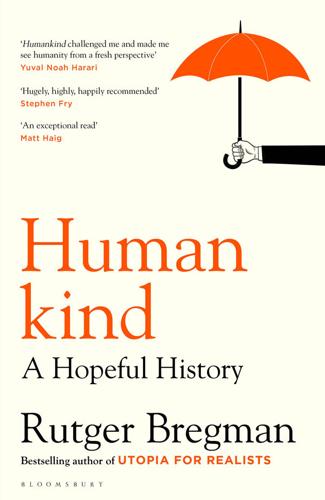
Humankind: A Hopeful History
by
Rutger Bregman
Published 1 Jun 2020
Edwards, William McKinley and Gyewan Moon, ‘The enactment of organizational decline: The self-fulfilling prophecy’, International Journal of Organizational Analysis, Vol. 10, Issue 1 (2002). 9Daisy Yuhas, ‘Mirror Neurons Can Reflect Hatred’, Scientific American (1 March 2013). 10John Maynard Keynes, The General Theory of Employment, Interest, and Money (London, 1936), Chapter 12. 11Dan Ariely, ‘Pluralistic Ignorance’, YouTube (16 February 2011). 12Pinker, The Better Angels of Our Nature (2011), pp. 561–5. 13 The Power of Intrinsic Motivation 1Hedwig Wiebes, ‘Jos de Blok (Buurtzorg): “Ik neem nooit zomaar een dag vrij”,’ Intermediair (21 October 2015). 2Ibid. 3Ibid. 4Haico Meijerink, ‘Buurtzorg: “Wij doen niet aan strategische flauwekul”,’ Management Scope (8 October 2014). 5Gardiner Morse, ‘Why We Misread Motives’, Harvard Business Review (January 2003). 6Quoted in ibid. 7Frederick Taylor, The Principles of Scientific Management (New York, 1911), Chapter 2, p. 59. 8Quoted in Robert Kanigel, The One Best Way. Frederick Winslow Taylor and the Enigma of Efficiency (Cambridge, 2005), p. 499. 9Edward L. Deci, ‘Effects of Externally Mediated Rewards on Intrinsic Motivation’, Journal of Personality and Social Psychology, Vol. 1, Issue 1 (1971), p. 114. 10Quoted in Karen McCally, ‘Self-Determined’, Rochester Review (July–August 2010). 11Uri Gneezy and Aldo Rustichini, ‘A Fine is a Price’, Journal of Legal Studies, Vol. 29, Issue 1 (2000). 12Samuel Bowles and Sandra Polanía Reyes, ‘Economic Incentives and Social Preferences: A Preference-Based Lucas Critique of Public Policy’, University of Massachusetts Amherst Working Papers (2009). 13Amit Katwala, ‘Dan Ariely: Bonuses boost activity, not quality’, Wired ( February 2010). 14Perceptions Matter: The Common Cause UK Values Survey, Common Cause Foundation (2016). 15Milton Friedman, ‘The Methodology of Positive Economics’, in Essays in Positive Economics (Chicago, 1966). 16Sanford E.
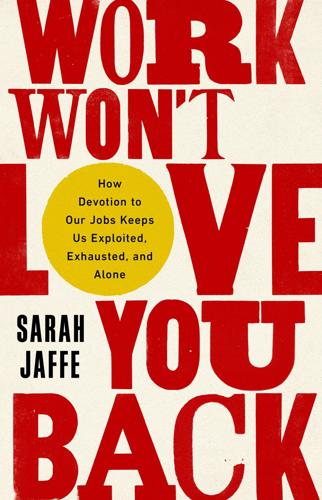
Work Won't Love You Back: How Devotion to Our Jobs Keeps Us Exploited, Exhausted, and Alone
by
Sarah Jaffe
Published 26 Jan 2021
And always at the bottom of such questions: Was the work done for love or money? 13 WHERE TEACHERS HAD AT FIRST BEEN EXPECTED TO CARE FOR THEIR students, once they’d unionized, administrators found such caring workers unruly. Instead of saints, they had become hell-raisers. School officials began to look to the new “science” of management, Frederick Winslow Taylor’s ideas about compartmentalizing and deskilling work, to control their troublesome workers. Teachers’ interpersonal skills had never been recognized as such, and now those skills were being defined out of existence entirely. Standardized testing, the bête noire of today’s teachers’ unions, first arose at this time, along with the idea of tracking students by class background into vocational or more elite programs. 14 With the advent of the first Red Scare, after the Communist revolution in Russia, administrators found a new way to control educators who might have ideas about running schools.

The Job: The Future of Work in the Modern Era
by
Ellen Ruppel Shell
Published 22 Oct 2018
For the model to work, it is not even necessary for education to have any intrinsic value if it can convey information about the sender (employee) to the recipient (employer) and if the signal (education) is costly. A. M. Spence, “Job Market Signalling,” Quarterly Journal of Economics 87, no. 3 (1973): 355–74. “he more nearly resembles” Frederick Winslow Taylor, The Principles of Scientific Management (New York: Harper, 1911), 59. “began to stop having as many vocational kinds of skills” Shawn Langlois, “Tim Cook Says This Is the Real Reason Apple Products Are Made in China,” MarketWatch, December 21, 2015, http://www.marketwatch.com/story/tim-cook-apple-doesnt-make-its-products-in-china-because-its-cheaper-2015-12-20.

The Lost Art of Dress
by
Przybyszewski, Linda
She looked precise, focused, practical, and rational. “The idea which distinguishes business from other activities—the idea of accuracy and correctness,” wrote Margaret Story, is what should be found in business dress. And their vision of business was shaped by the ideas of the country’s first efficiency expert.34 Frederick Winslow Taylor was an engineer turned industrial manager who published The Principles of Scientific Management in 1911. He had three aims: first, to show how the United States was suffering from inefficiency in almost everything its people did; second, to convince Americans that scientific management could eliminate inefficiency; and third, to prove that good management was a science.
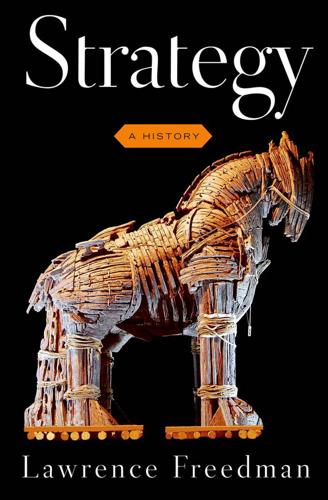
Strategy: A History
by
Lawrence Freedman
Published 31 Oct 2013
Eventually the university opted for business, raising at once the tension between what many supposed to be vocational training and the university’s true purpose of disinterested scholarship. As the first dean, Edwin Gay, searched for a way to resolve this tension he came across the ideas of Frederick Winslow Taylor. Taylor himself was skeptical, to say the least, about the value of a university education. He declined to join the faculty, but he did give regular lectures to the new school, and more importantly, his philosophy permeated the early curriculum. Taylorism Taylor had begun work as an engineer in the steel industry where he started to address the question of how the workforce could be used more efficiently.
…
Taylor’s Pig-Iron Experiments,” Academy of Management Journal 17, no. 1 (1974): 26. 5. Jill R. Hough and Margaret A. White, “Using Stories to Create Change: The Object Lesson of Frederick Taylor’s ‘Pig-Tale,’” Journal of Management 27 (2001): 585–601. 6. Robert Kanigel, The One Best Way: Frederick Winslow Taylor and the Enigma of Efficiency (New York: Viking Penguin, 1999); Daniel Nelson, “Scientific Management, Systematic Management, and Labor, 1880–1915,” The Business History Review 48, no. 4 (Winter 1974): 479–500. See chapter on Taylor in A. Tillett, T. Kempner, and G. Wills, eds., Management Thinkers (London: Penguin, 1970). 7.
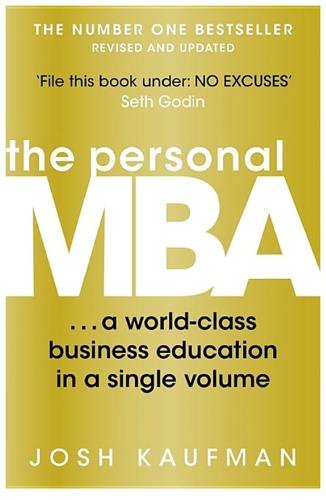
The Personal MBA: A World-Class Business Education in a Single Volume
by
Josh Kaufman
Published 2 Feb 2011
The disconnect between the classroom and the working world makes sense when you realize that the concepts, principles, and techniques most business schools teach were designed for a very different world. Graduate schools of business started popping up at the end of the nineteenth century during the Industrial Revolution. The intent of early MBA programs was to train managers to be more scientific in an effort to make large operations more efficient. Frederick Winslow Taylor, the pioneer of “scientific management” techniques that now form the foundation of modern management training, used a stopwatch to shave a few seconds off the average time a workman took to load iron ingots into a train car. That should give you a good idea of the underlying mind-set of most business school management programs.
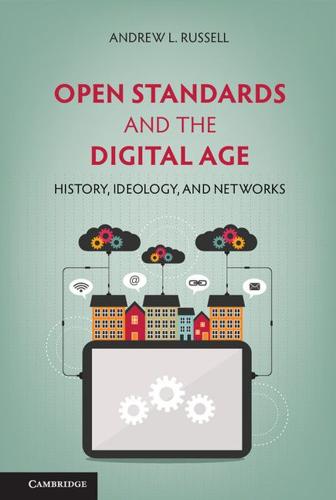
Open Standards and the Digital Age: History, Ideology, and Networks (Cambridge Studies in the Emergence of Global Enterprise)
by
Andrew L. Russell
Published 27 Apr 2014
Vail’s strategy was not only a clear response to the immediate problems facing AT&T, it was also an articulation of the organizational learning that had been occurring throughout American industry during the past several decades. The Bell ideology of standardization, distilled into the “universal service” slogan, shaped and limited the realm of the possible in a way that recalls a famous phrase written in 1911 by one of Vail’s contemporaries, Frederick Winslow Taylor: “The system must be first.”18 Through the ideology and rhetoric of universal service, Vail and his colleagues persuaded regulators to appreciate the value of an interconnected monopoly telephone system – one that operated more like a public utility than one of several firms in a competitive market.
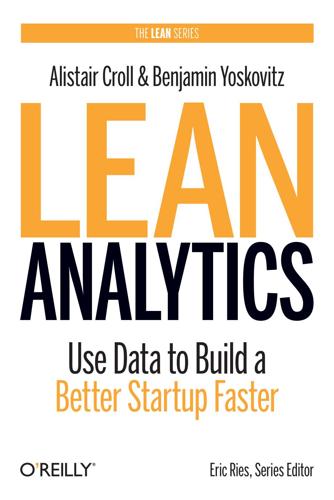
Lean Analytics: Use Data to Build a Better Startup Faster
by
Alistair Croll
and
Benjamin Yoskovitz
Published 1 Mar 2013
Trust me, as an entrepreneur, I had no interest in accounting as a subject. To be honest, in far too many of my companies, the accounting was incredibly simple anyway: revenue, margins, free cash flows—they were all zero. But accounting is at the heart of our modern management techniques. Since the days of Frederick Winslow Taylor, we have assessed the skill of managers by comparing their results to the forecast. Beat the plan, get a promotion. Miss the plan, and your stock price declines. And for some kinds of products, this works just fine. Accurate forecasting requires a long and stable operating history from which to make the forecast.

Masters of Management: How the Business Gurus and Their Ideas Have Changed the World—for Better and for Worse
by
Adrian Wooldridge
Published 29 Nov 2011
But it was not until the introduction of mass production in the late nineteenth century that business demanded, as a matter of survival, the creation of a new elite of managers and a new body of formal management theory. The principal inspiration for this new science, in America at least, was Frederick Winslow Taylor, an engineer who invented carbon-steel machine tools. “It is fashionable today to look down on Taylor for his outdated psychology,” Peter Drucker noted, “but Taylor was the fist person in history who did not take work for granted, but looked at it and studied it.”3 Taylor believed that there was a single best method of organizing work, and that this method could be discovered through a detailed study of the time and motion involved in doing each job.
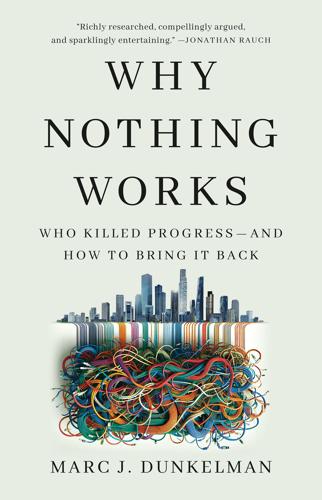
Why Nothing Works: Who Killed Progress--And How to Bring It Back
by
Marc J Dunkelman
Published 17 Feb 2025
America, as a whole, was becoming increasingly professional. In most little nineteenth-century businesses, bosses had prized employees who understood every part of an operation—they wanted generalists. But in the huge manufacturing facilities coming to prevail through the early twentieth century, specialization became coin of the realm. In 1895, Frederick Winslow Taylor had published a paper on what he called “scientific management.” He called for planning departments to replace foremen in control of factory operations—and for those planning experts to dictate to cogs on the factory floor how to do their jobs. The thinking part of any industrial process, in Taylor’s view, should be done by people who had divined the right way.44 And that meant ceding the bulk of decision-making to people at the top—to professionals who knew better.45 Taylorism was controversial, viewed by some as a scheme to undermine the dignity of labor.

Computer: A History of the Information Machine
by
Martin Campbell-Kelly
and
Nathan Ensmenger
Published 29 Jul 2013
In 1832 he published his most important book, an economics classic titled Economy of Machinery and Manufactures, which ran to four editions and was translated into five languages. In the history of economics, Babbage is a seminal figure who connects Adam Smith’s Wealth of Nations to the Scientific Management movement, founded in America by Frederick Winslow Taylor in the 1880s. The government continued to advance Babbage money during the 1820s and early 1830s, eventually totaling £17,000; and Babbage claimed to have spent much the same again from his own pocket. These would be very large sums in today’s money. By 1833, Babbage had produced a beautifully engineered prototype Difference Engine that was too small for real table making and lacked a printing unit, but showed beyond any question the feasibility of his concept.

An Empire of Wealth: Rise of American Economy Power 1607-2000
by
John Steele Gordon
Published 12 Oct 2009
Johnson, Richard R. John Nelson Merchant Adventurer: A Life Between Empires. New York: Oxford University Press, 1991. Joseph, Alvin M., Jr., ed. America in 1492: The World of the Indian Peoples Before the Arrival of Columbus. New York: Alfred A. Knopf, 1992. Kanigel, Robert. The One Best Way: Frederick Winslow Taylor and the Enigma of Efficiency. New York: Viking, 1997. Kennedy, David M. Freedom from Fear: The American People in Depression and War, 1929–1945. Vol. 9 of The Oxford History of the United States. New York: Oxford University Press, 1999. Kessner, Thomas. Capital City: New York and the Men Behind America’s Rise to Economic Dominance.

The Zero Marginal Cost Society: The Internet of Things, the Collaborative Commons, and the Eclipse of Capitalism
by
Jeremy Rifkin
Published 31 Mar 2014
Jackson, Tim. Prosperity Without Growth: Economics for a Finite Planet. Washington, DC: Earthscan, 2009. Jean-Claude Debeir, Jean-Paul Deleage, and Daniel Hemery, In the Servitude of Power: Energy and Civilization Through the Ages. London: Zed Books, 1992. Kanigel, Robert. The One Best Way: Frederick Winslow Taylor and the Enigma of Efficiency. New York: Penguin, 1997. Keen, Andrew. The Cult of the Amateur. New York: Doubleday, 2007. Kellmereit, Daniel, and Daniel Obodovski. The Silent Intelligence: The Internet of Things. San Francisco: DND Ventures LLC, 2013. Keynes, John Maynard. The General Theory Of Employment, Interest, and Money.

Algorithms to Live By: The Computer Science of Human Decisions
by
Brian Christian
and
Tom Griffiths
Published 4 Apr 2016
Burlington, MA: Morgan Kaufmann, 2007. Kaelbling, Leslie Pack. Learning in Embedded Systems. Cambrige, MA: MIT Press, 1993. Kaelbling, Leslie Pack, Michael L. Littman, and Andrew W. Moore. “Reinforcement Learning: A Survey.” Journal of Artificial Intelligence Research 4 (1996): 237–285. Kanigel, Robert. The One Best Way: Frederick Winslow Taylor and the Enigma of Efficiency. New York: Viking Penguin, 1997. Kant, Immanuel. Grundlegung zur Metaphysik der Sitten. Riga: Johann Friedrich Hartknoch, 1785. ______. Kritik der praktischen Vernunft. Riga: Johann Friedrich Hartknoch, 1788. Karmarkar, Narendra. “A New Polynomial-Time Algorithm for Linear Programming.”
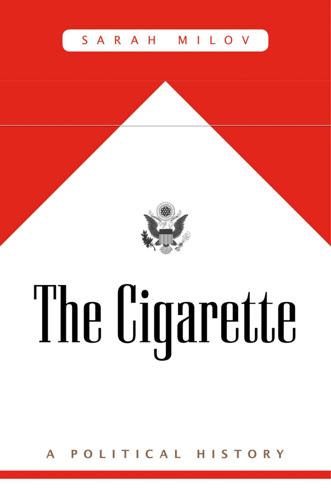
The Cigarette: A Political History
by
Sarah Milov
Published 1 Oct 2019
Any floor manager knew that cigarette burns on furniture and carpets required their occasional replacement, but he may not have considered that overall painting and cleaning needs could be reduced by eliminating smoking. After the implementation of a no-smoking policy, “cleaning costs were more than halved,” the president of an electrical components company explained. In terms that would have been familiar to Frederick Winslow Taylor as he observed pig iron handlers, the president continued: “one man does what two and a half would be doing if we still allowed smoking.”70 Ambient tobacco smoke represented a silent drain on company resources—a metaphor, perhaps, for the hidden costs of smokers themselves. The metaphor was made real by insurance companies that began to selectively sell some policies at reduced rates to nonsmokers.

The Rise and Fall of the Neoliberal Order: America and the World in the Free Market Era
by
Gary Gerstle
Published 14 Oct 2022
The American capitalist machine seemed to be whirring to perfection, without a breakdown or flaw. The United States supplanted Great Britain as the international engine of manufacturing and finance. The industrial world was awed by American production techniques developed by the likes of Henry Ford and by the disciples of Frederick Winslow Taylor and the principles of scientific management they were deploying. America was turning out cars and consumer durables at an astonishing rate. The abundance of goods and their falling prices appeared so great that Americans, led by Hoover, began dreaming about lifting every American out of poverty.

The Relentless Revolution: A History of Capitalism
by
Joyce Appleby
Published 22 Dec 2009
More important, most middle-class Americans could afford one, including Ford’s workers, whom he started paying five dollars a day in 1914. His goal was for his men to earn wages high enough for them to buy what they produced. And buy they did. The scientific management of labor had already attracted the attention of Frederick Winslow Taylor, who carefully observed men working in the steel industry in the 1880s and 1890s. Taylor brought to his research the conviction that scientific management could blend the interests of bosses and workers. This was probably too much to be expected, but Taylor did describe how to make time and motion at the work site more precise and management more attuned to workers’ rhythms.
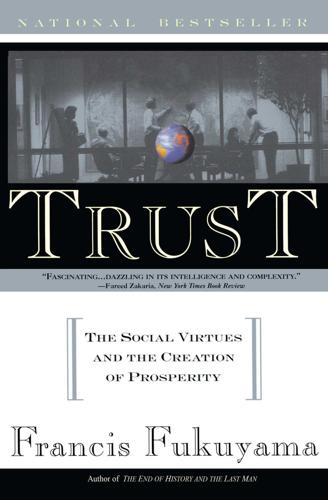
Trust: The Social Virtue and the Creation of Prosperity
by
Francis Fukuyama
Published 1 Jan 1995
The implication is that if Germany is to meet future challenges of global competitiveness, it needs to become not necessarily a less communitarian economy but a less statist one. CHAPTER 22 The High-Trust Workplace If asked to compare the traditional American manufacturing workplace with its high-trust, team-oriented German counterpart, or with the low-trust, bureaucratically regulated French model, most people would say it resembled the latter. Frederick Winslow Taylor, after all, was an American, and the low-trust industrial system he created was regarded around the world as a uniquely American vision of modernity. The legalism of the Taylorite factory, its pretensions to universality, and the carefully enumerated rights in job control unionism all echo aspects of American constitutional law.

The Meritocracy Trap: How America's Foundational Myth Feeds Inequality, Dismantles the Middle Class, and Devours the Elite
by
Daniel Markovits
Published 14 Sep 2019
The firm began to make them instead; and making parts internally naturally required Singer to establish increasingly elaborate managerial hierarchies to monitor and coordinate internal production and secure the quality, reliability, and uniformity that the firm sought. This pattern recurred across firms throughout the Industrial Revolution, as no less than Frederick Winslow Taylor observed that mass production of complex goods would “involve new and heavy burdens” for management of industrial firms. On the other hand, innovations in managerial technology considerably increased the supply of managerial coordination, making it possible for management to track and to direct more workers, in greater detail, than ever before.

The Stack: On Software and Sovereignty
by
Benjamin H. Bratton
Published 19 Feb 2016
Foucault's genealogies of modernity painstakingly recount how typical and normative human bodies were served and served up by the design of disciplinary institutions of knowledge. By observing machine shops and workers and replanning how their bodily movements could be abstracted and optimized so as to be better incorporated with their laboring habitats, Frederick Winslow Taylor pioneered scientific management theory and the efficiency movement as the nineteenth century became the twentieth. Concurrently, Max Weber would identify a tendency toward depersonalized rationalization through the formulation of people into interchangeable bureaucratic components as a key sociological feature of industrial capitalism.
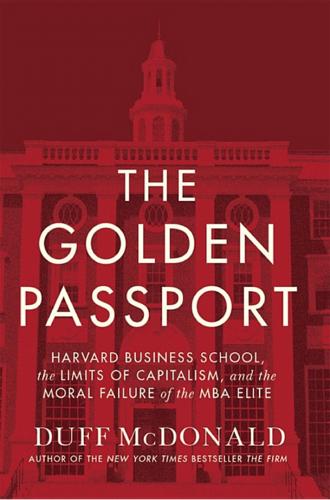
The Golden Passport: Harvard Business School, the Limits of Capitalism, and the Moral Failure of the MBA Elite
by
Duff McDonald
Published 24 Apr 2017
The most “influential” article published under Kanter: Michael Hammer’s July–August 1990 piece, “Re-engineering Work: Don’t Automate, Obliterate.” While the concept made sense—“the fundamental rethinking and radical design of business processes to achieve dramatic improvements in critical measures of performance”—it also heralded “a return to the mechanistic ideas of Frederick Winslow Taylor.”11 Or worse: The stamp of approval bestowed by HBR facilitated the hijacking of the term as a “shallow intellectual justification”12 for widespread downsizing in the early 1990s. Remarkably, Kanter nearly managed to crater HBR, surely one of the least challenging publishing tasks since the Bible.
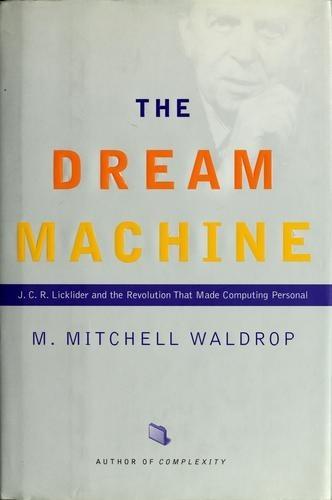
The Dream Machine: J.C.R. Licklider and the Revolution That Made Computing Personal
by
M. Mitchell Waldrop
Published 14 Apr 2001
Fisher and Marshall Jon Fisher The Invention That Changed the World: How a Small Group of Radar Pioneers Won the Second World wtzr and Launched a Technological Revolution by Robert Buderi Computer: A History of the Information Machine by Martin Campbell-Kelly and William Aspray Naked to the Bone: Medical Imaging in the Twentieth Century by Bettyann Kevles A Commotion in the Blood: A Century of Using the Immune System to Battle Cancer and Other Diseases by Stephen S. Hall Beyond Engineering: How Society Shapes Technology by Robert Pool The One Best wtzy: Frederick Winslow Taylor and the Enigma of Efficiency by Robert Kanigel Crystal Fire: The Birth of the Information Age by Michael Riordan and Lillian Hoddesen Insisting on the Impossible: The Life of Edwin Land by Victor K. McElheny Silzcon Sky: How One Small Start-up went over the Top to Beat the Big Boys into Satellite Heaven by Gary Dorsey City of Light: The Story of Fiber Optics by Jeff Hecht Visions of Technology: A Century of Vital Debate about Machines, Systems, and the Human World edited by Richard Rhodes PREFACE TO THE SLOAN TECHNOLOGY SERIES Technology is the application of science, engineering, and industrial organiza- tion to create a human-built world.
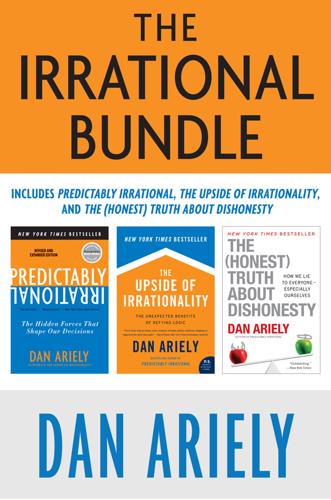
The Irrational Bundle
by
Dan Ariely
Published 3 Apr 2013
There are in a pound upwards of four thousand pins of a middling size. Those ten persons, therefore, could make among them upwards of forty-eight thousand pins in a day.1 When we take tasks and break them down into smaller parts, we create local efficiencies; each person can become better and better at the small thing he does. (Henry Ford and Frederick Winslow Taylor extended the division-of-labor concept to the assembly line, finding that this approach reduced errors, increased productivity, and made it possible to produce cars and other goods en masse.) But we often don’t realize that the division of labor can also exact a human cost. As early as 1844, Karl Marx—the German philosopher, political economist, sociologist, revolutionary, and father of communism—pointed to the importance of what he called “the alienation of labor.”

Palo Alto: A History of California, Capitalism, and the World
by
Malcolm Harris
Published 14 Feb 2023
Dunbar attempted to put her experience in the feminist and Maoist movements—she had joined the Bay Area Revolutionary Union just before the Franklin/Avakian split, siding with the former—to work in the UE campaign, but found UE organizers too committed to a trade-union strategy built by and for white men, one that ignored the immediate needs of the largely immigrant workforce of women, needs like maternity leave, child care, and freedom from sexual harassment. “When I suggested to the union officials that a union program offer the women workers free martial arts training,” she writes, “they laughed.” Roxanne Dunbar-Ortiz, Outlaw Woman: A Memoir of the War Years, 1960–1975 (City Lights, 2001), 388. v Frederick Winslow Taylor is credited with bringing scientific management to the organization of industrial production, around the turn of the twentieth century. Adler, “Time-and-Motion Regained.” vi Bob Herbert, “Workers Crushed by Toyota,” New York Times, March 15, 2010. The next year, Herbert, his attention on U.S. inequality and the plight of the working class out of step with the prevailing mood of liberal elites during the Obama years, was also out at the Times.
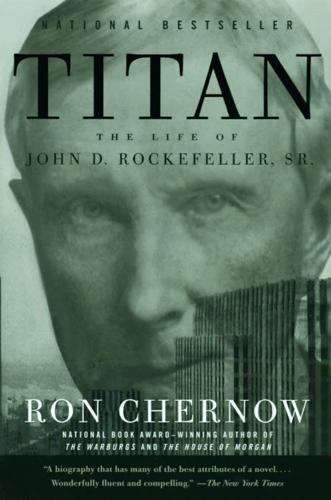
Titan: The Life of John D. Rockefeller, Sr.
by
Ron Chernow
Published 1 Jan 1997
“More than once I have gone to luncheon with a number of our heads of departments and have seen the sweat start out on the foreheads of some of them when that little red notebook was pulled out,” Rockefeller admitted with relish. 33 With a talent for seeing things anew, Rockefeller could study an operation, break it down into component parts, and devise ways to improve it. In many ways, he anticipated the efficiency studies of engineer Frederick Winslow Taylor. Regarding each plant as infinitely perfectible, he created an atmosphere of ceaseless improvement. Paradoxically, the mammoth scale of operations encouraged close attention to minute detail, for a penny saved in one place might then be multiplied a thousandfold throughout the empire. In the early 1870s, Rockefeller inspected a Standard plant in New York City that filled and sealed five-gallon tin cans of kerosene for export.